Chemistry and Chemists № 1 2025
Journal of Chemists-Enthusiasts
| Content | Chemistry experiments - video | Physics experiments - video | Home Page - Chemistry and Chemists |
|
Chemistry and Chemists № 1 2025 Journal of Chemists-Enthusiasts |
Experiments with Perchloric Acid and Perchlorates - part 6 Chemist |
|
Having noticed a mistake in the text, allocate it and press Ctrl-Enter
The next day, I performed another synthesis of ammonium perchlorate. This time, I decided to utilize an old bottle of perchloric acid that had been stored in the lab for many years. Unlike the acid used in the previous synthesis, this one was kept in a glass bottle and was colorless. The concentration of the acid was not indicated on the label, but I assumed it to be 70% (as in the previous case).
The beaker contained the mother liquor left over from the previous synthesis. It was a yellow liquid, with a few crystals forming at the bottom. I added ammonia solution to it and turned on the magnetic stirrer. I then poured the perchloric acid directly into the beaker, which still contained some ammonium perchlorate crystals from the last synthesis (I did not wash the beaker). Upon adding perchloric acid to the mixture of ammonia and the mother liquor, a precipitate of ammonium perchlorate immediately formed, but it quickly dissolved, leaving a clear solution. There was no boiling or splashing of the mixture. I should note that during the previous synthesis, the reaction mixture had boiled and splashed actively when acid was added. I touched the beaker: it hadn't noticeably heated up yet. I added another portion of ammonia to the beaker and continued adding the acid. The reaction proceeded calmly, allowing me to add the acid quickly. However, a new issue arose that hadn't occurred during the previous synthesis: the volume of the one-liter beaker was clearly insufficient. I had a five-liter beaker, but I hesitated to use it due to the high risk of breaking such a large vessel. As a result, I had to turn on the heating to evaporate some of the solution while stirring, then continued adding new portions of acid and ammonia (I wanted to use all the perchloric acid remaining in the bottle). I conducted the first test with indicator paper - the solution turned out to be slightly alkaline. So I added perchloric acid in small portions, continuing to evaporate the solution and performing periodic pH tests. During the evaporation of the ammonium perchlorate solution, the magnetic stirrer broke down. The heating continued to work, but the stirring stopped. At this point, no solid phase had formed. I continued adding the acid, manually stirring the liquid with a Teflon rod. When the solution became neutral, I added ammonia, followed by more acid. The acid caused a white precipitate to form, which quickly dissolved. Afterward, I repeated the process: first adding ammonia, then acid. In the first instance, no precipitate formed; in the second, it formed but dissolved quickly. I continued these operations until all the acid was used. At the end, I added a small amount of ammonia to make the solution slightly alkaline. After this, all that remained was the evaporation of the solution. Finally, a solid phase began to form. It was fortunate that it didn't sink to the bottom but instead formed a suspension. Otherwise, the boiling could have become uneven, risking the glass falling off the electric stove onto the floor. After evaporation, I left the beaker to cool. By the next day, a significant crystalline precipitate had formed. I decanted the solution and evaporated it in a water bath, obtaining another portion of crystals. I did not mix both portions of the crystals and dried them separately. Later, a colleague took the broken magnetic stirrer to an electronics engineer. The technician promised to repair it but mentioned that such stirrers are not designed for use in aggressive environments, as the electromagnet winding is unprotected from acids and other corrosive substances. |
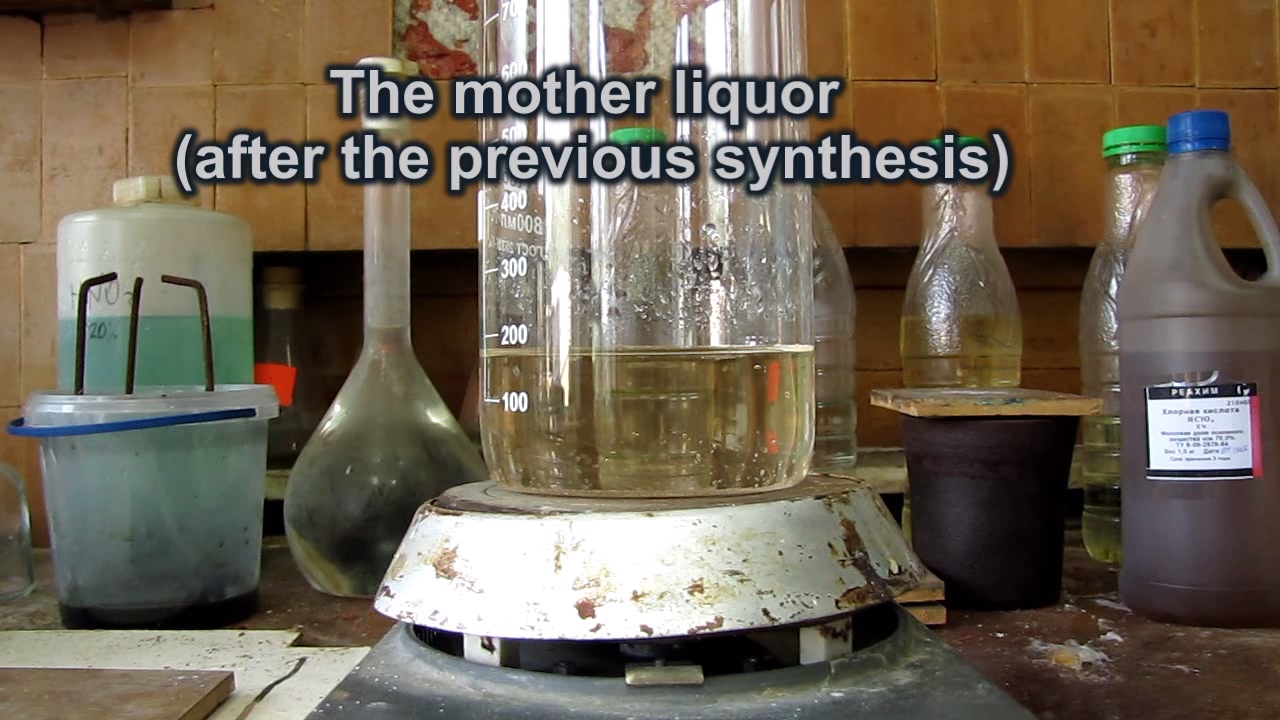
Synthesis of Ammonium Perchlorate |
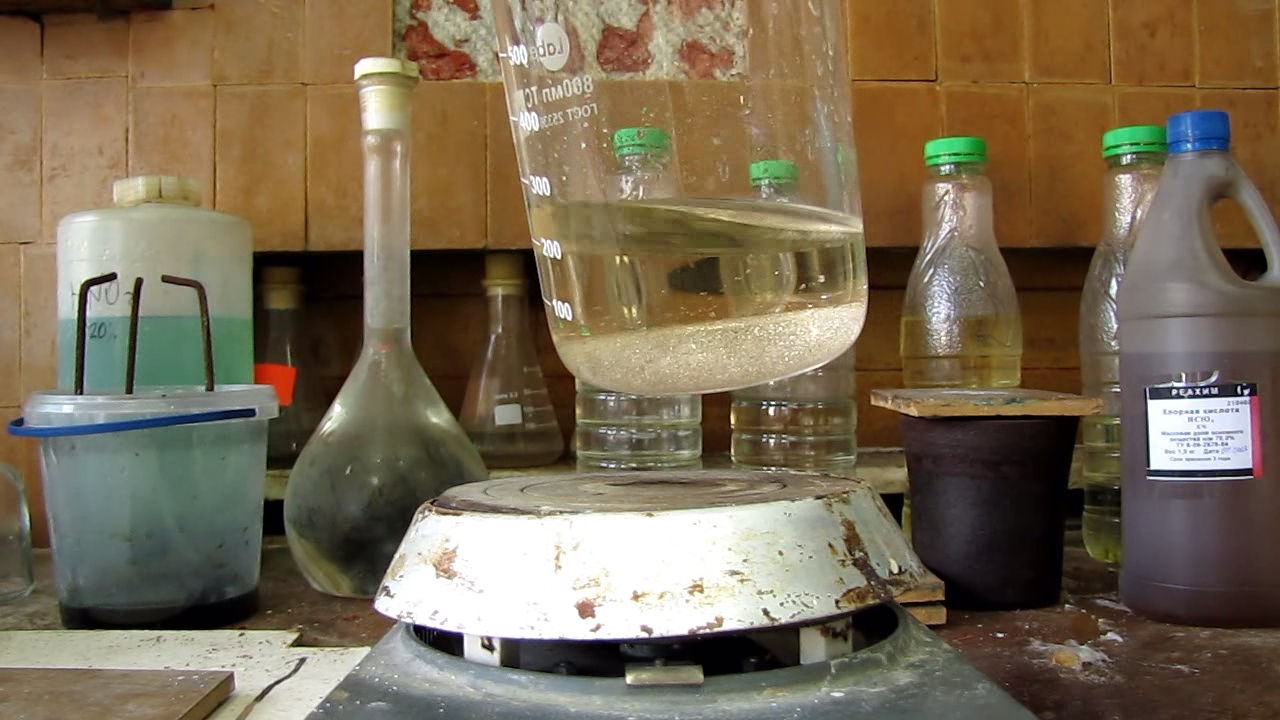
|
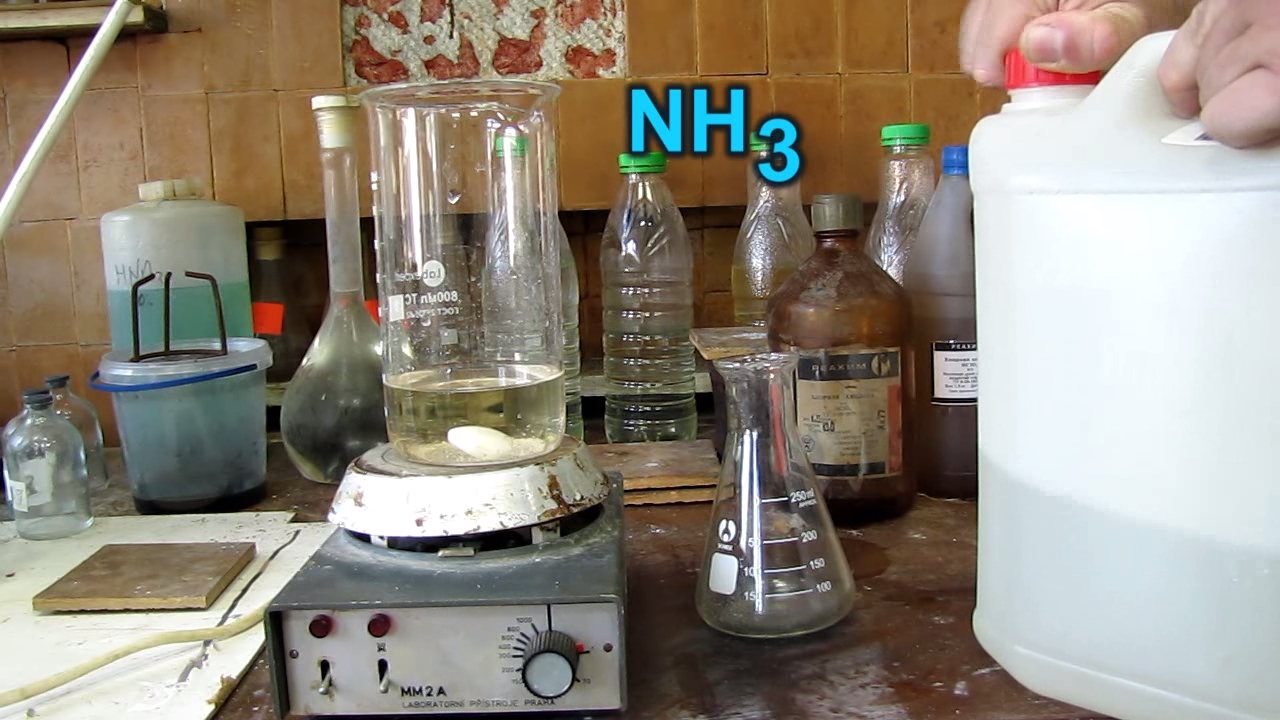
|
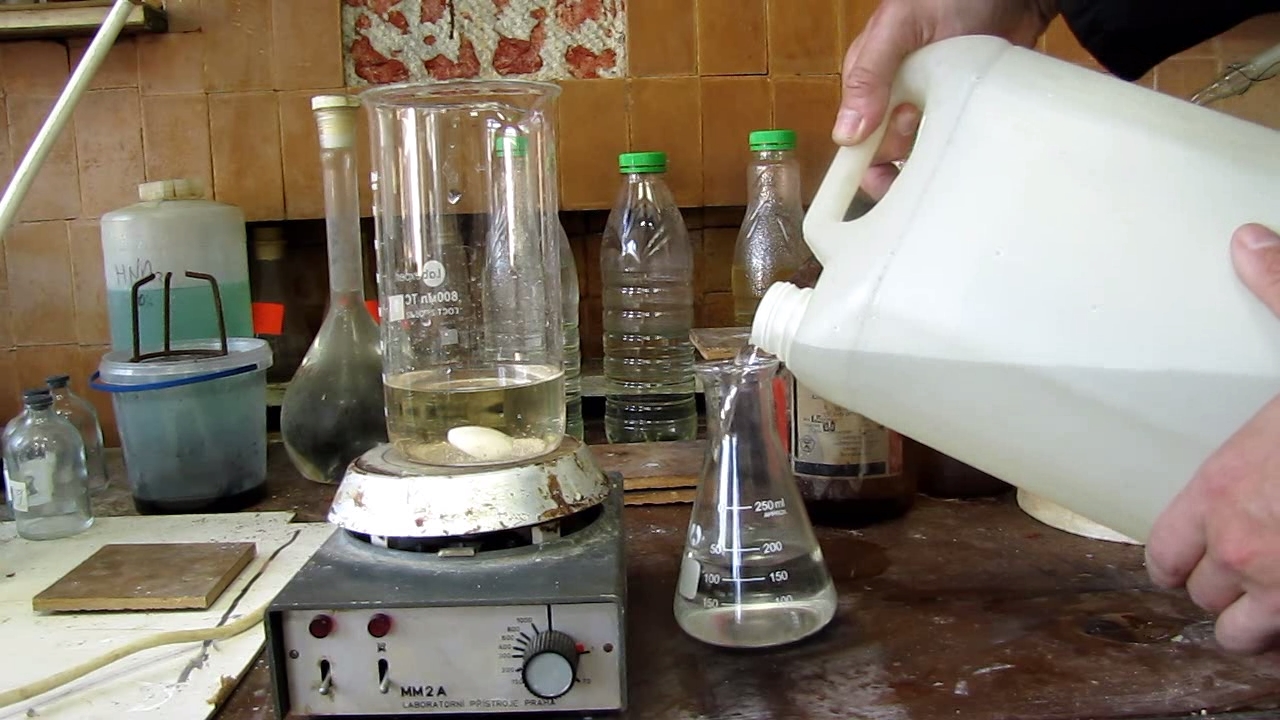
|
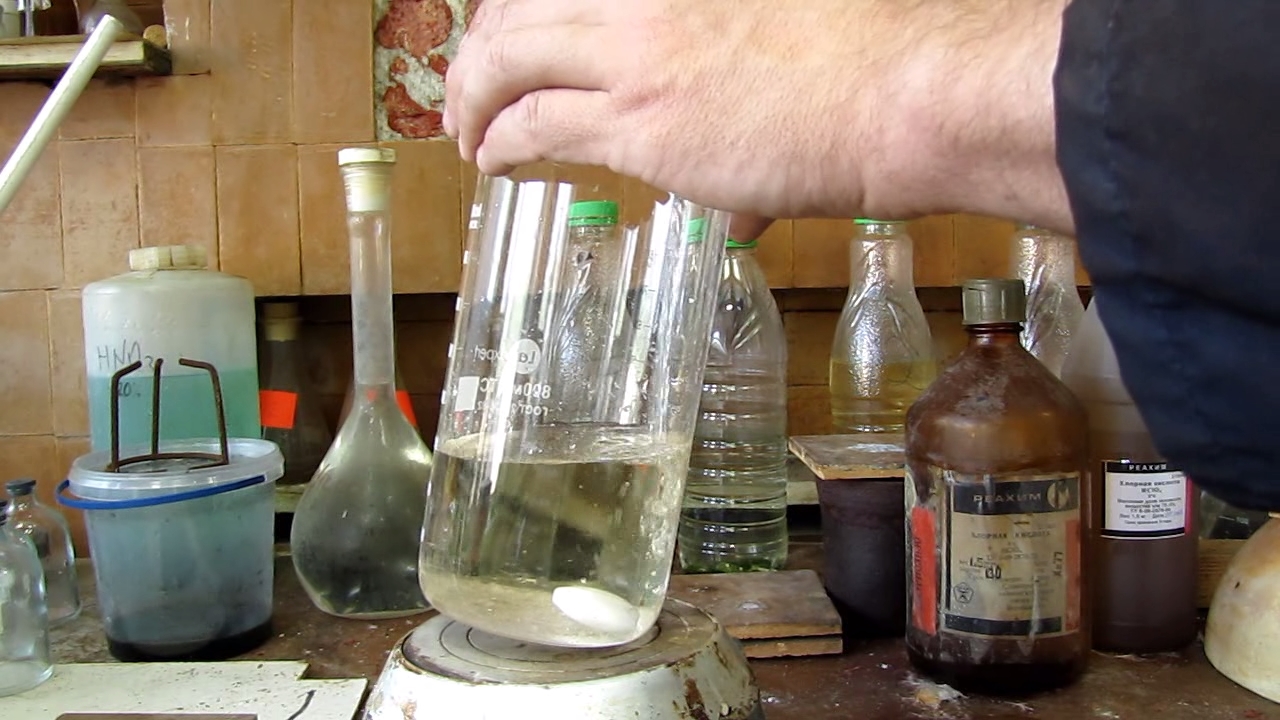
|

|
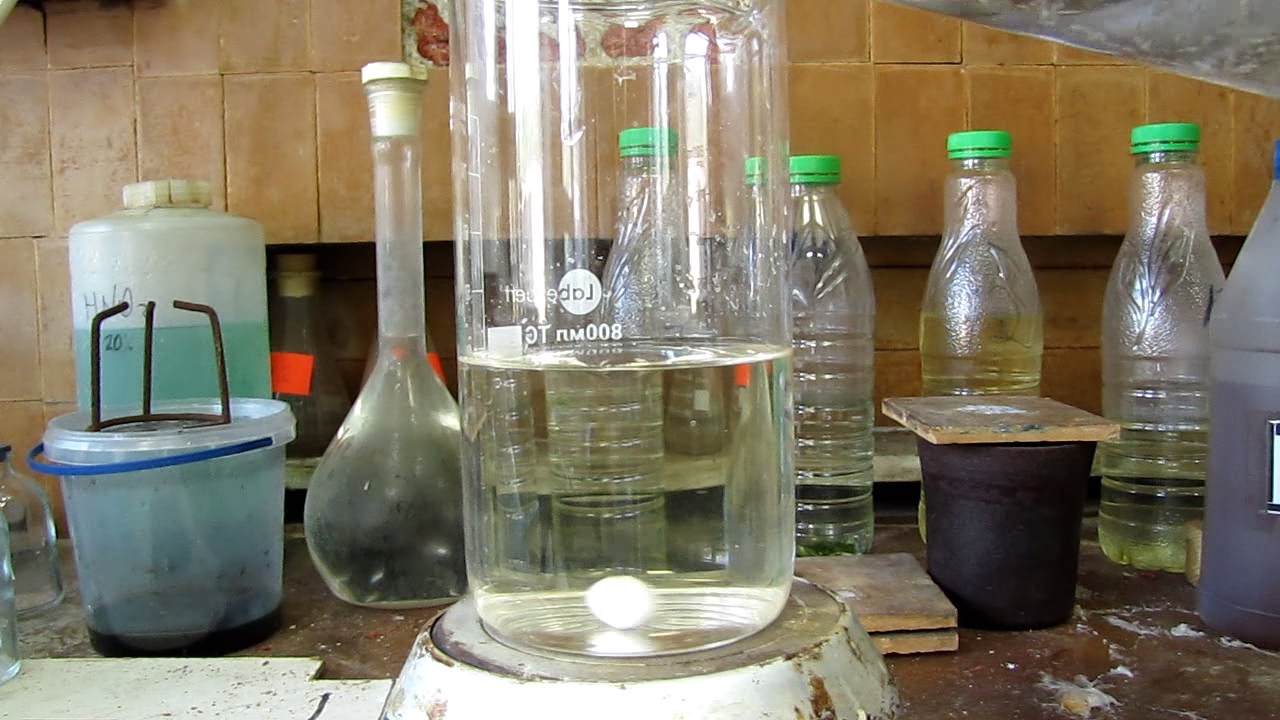
|
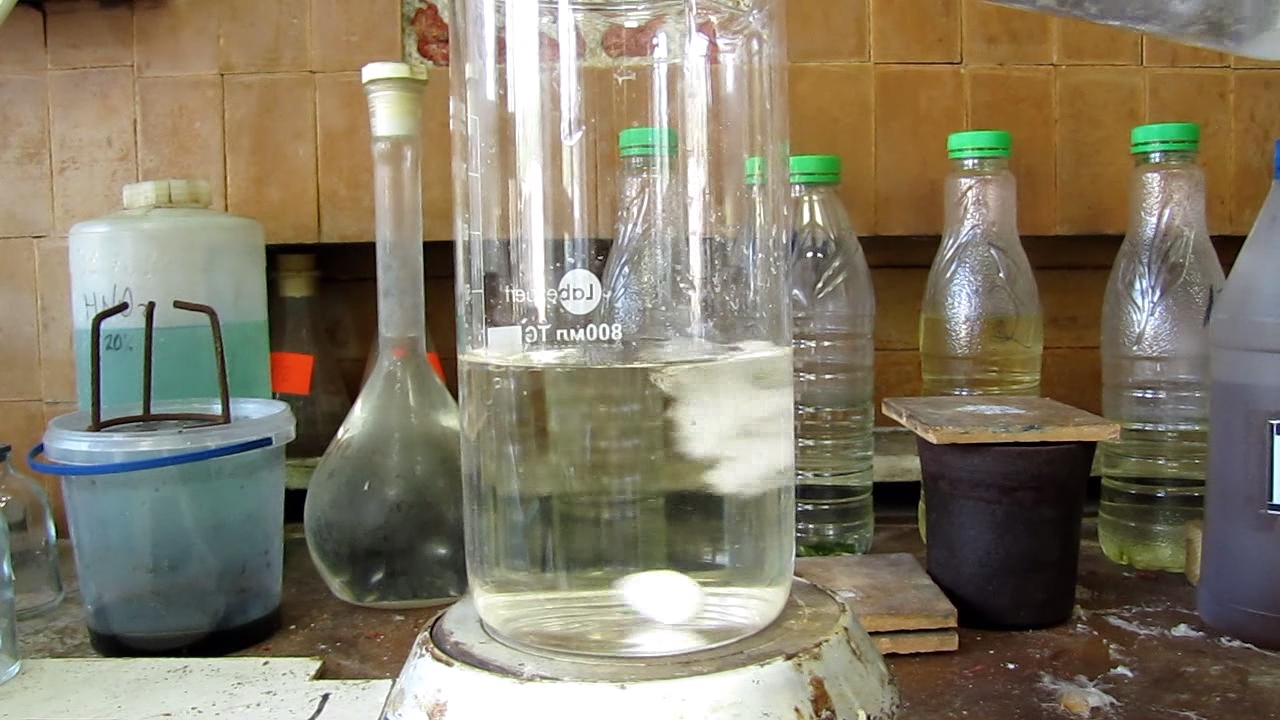
|
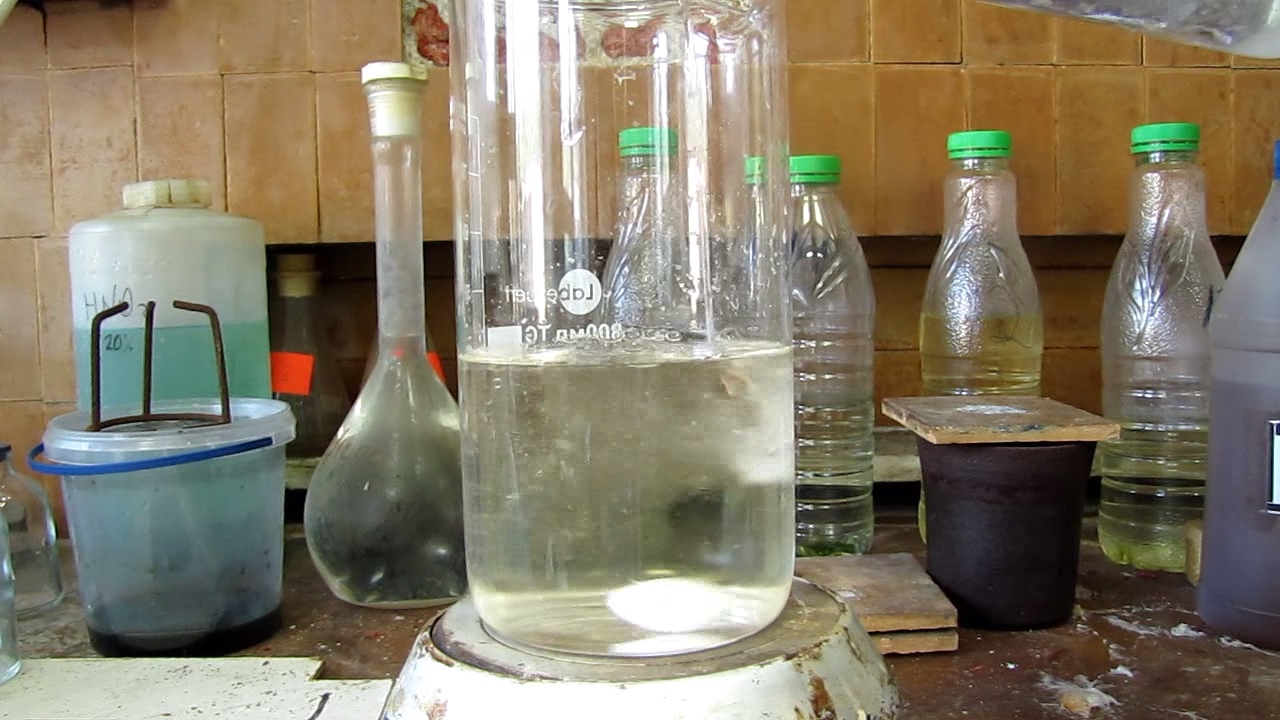
|
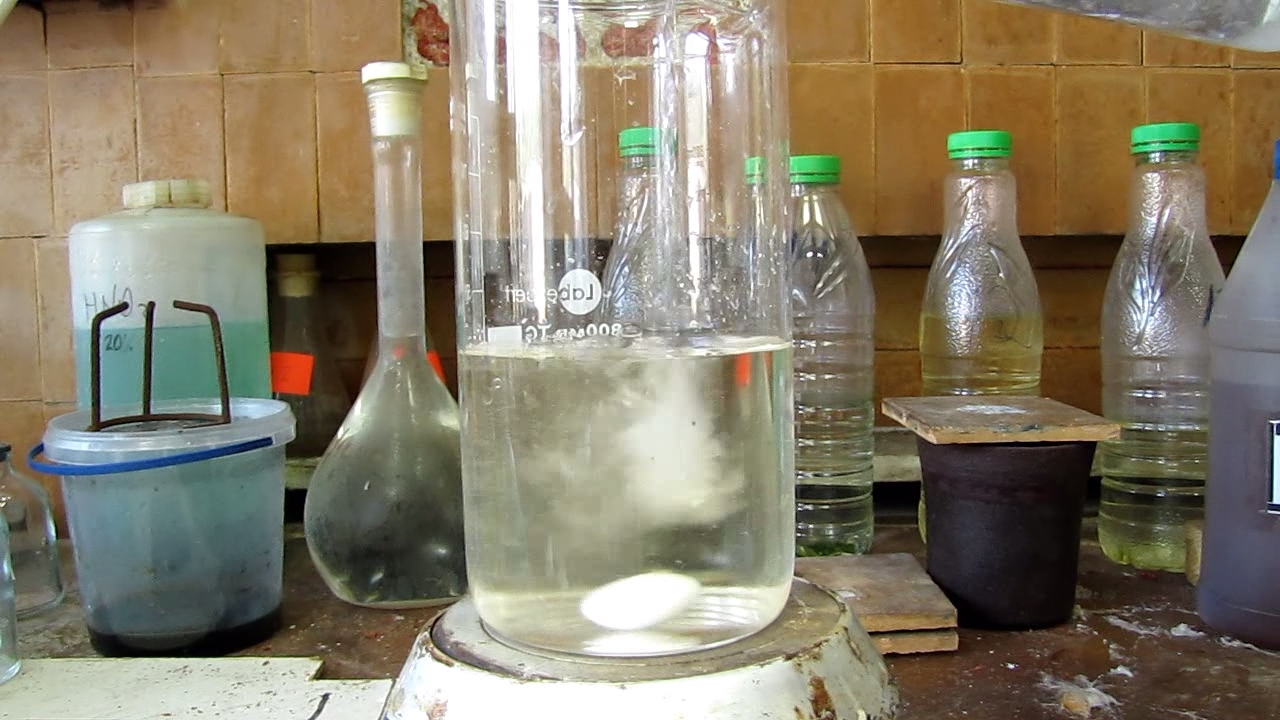
|
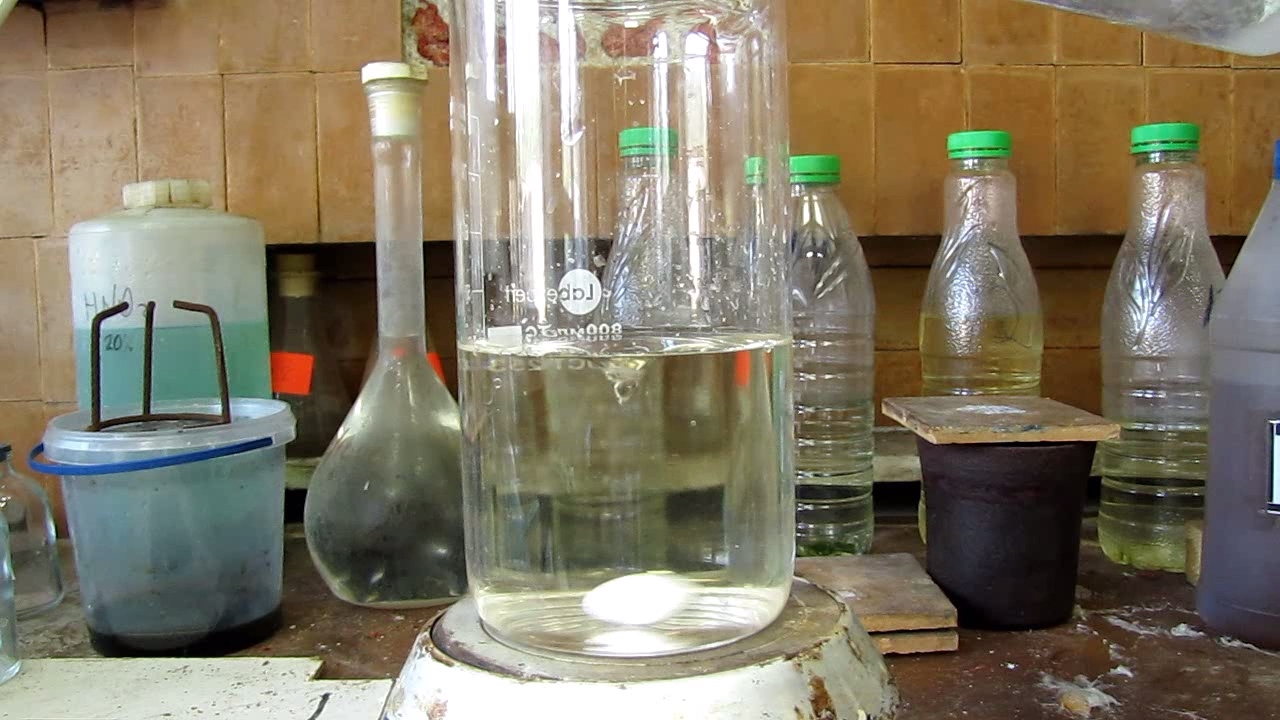
|
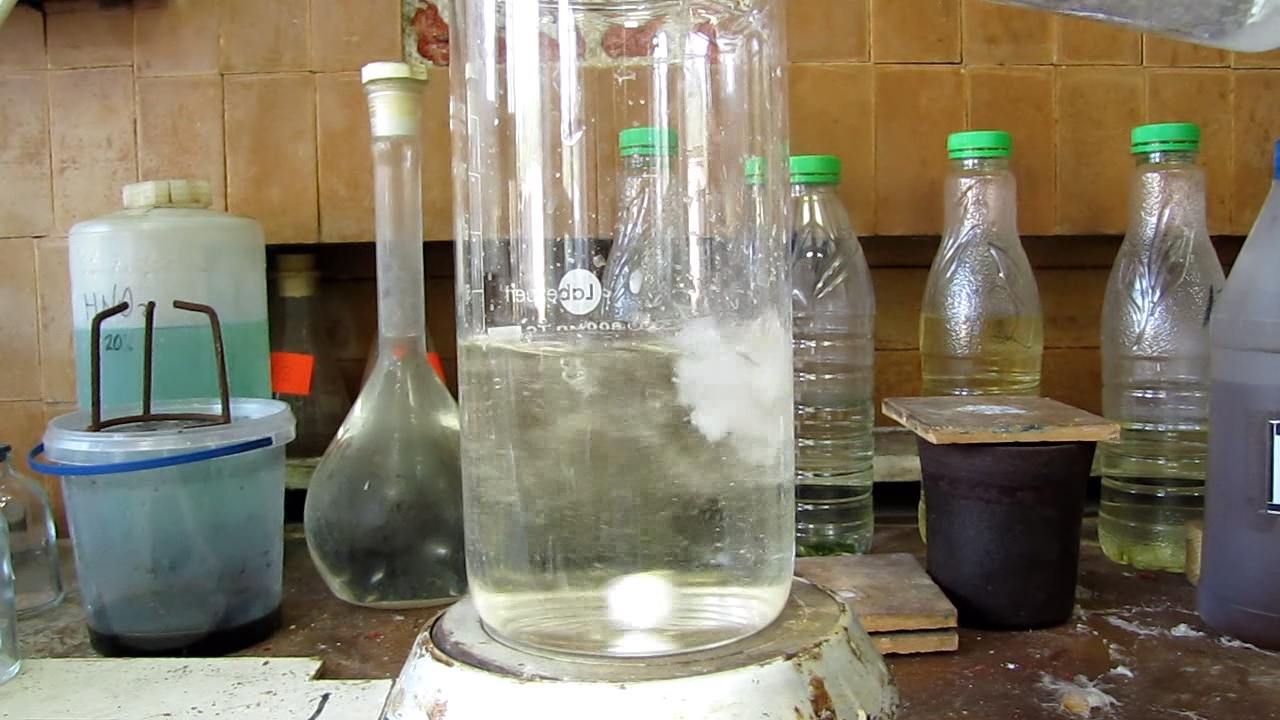
|
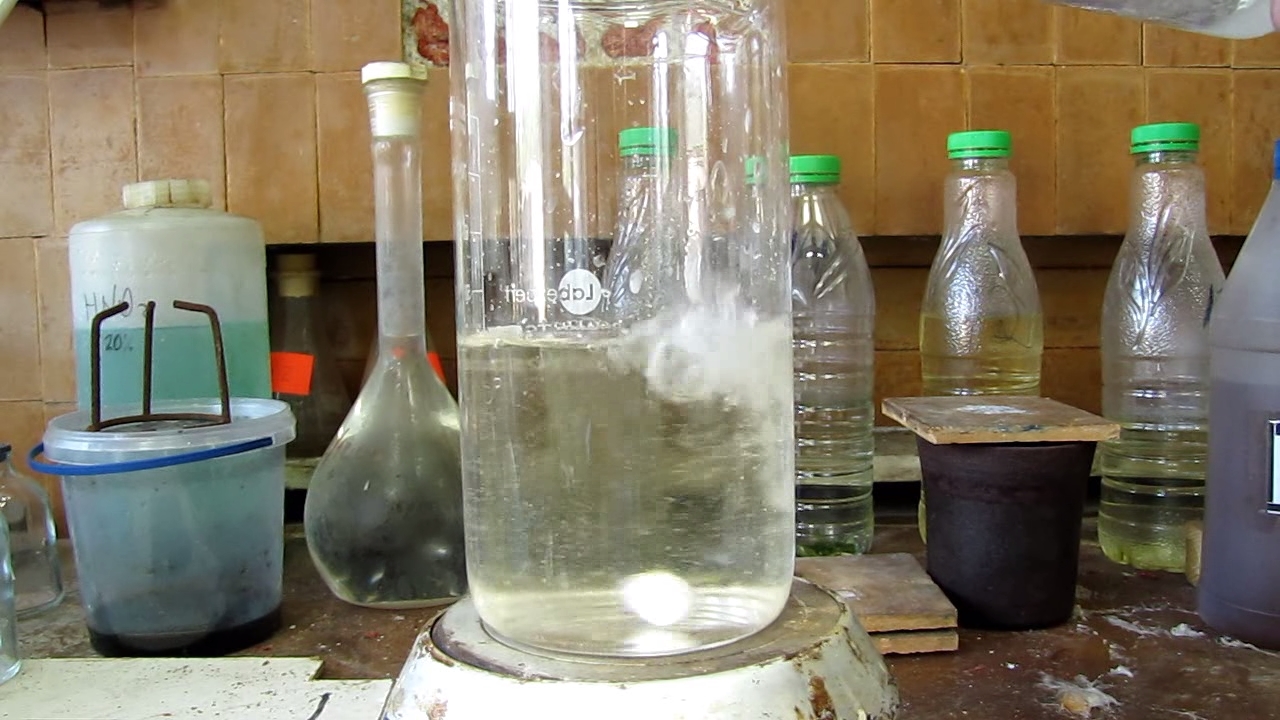
|
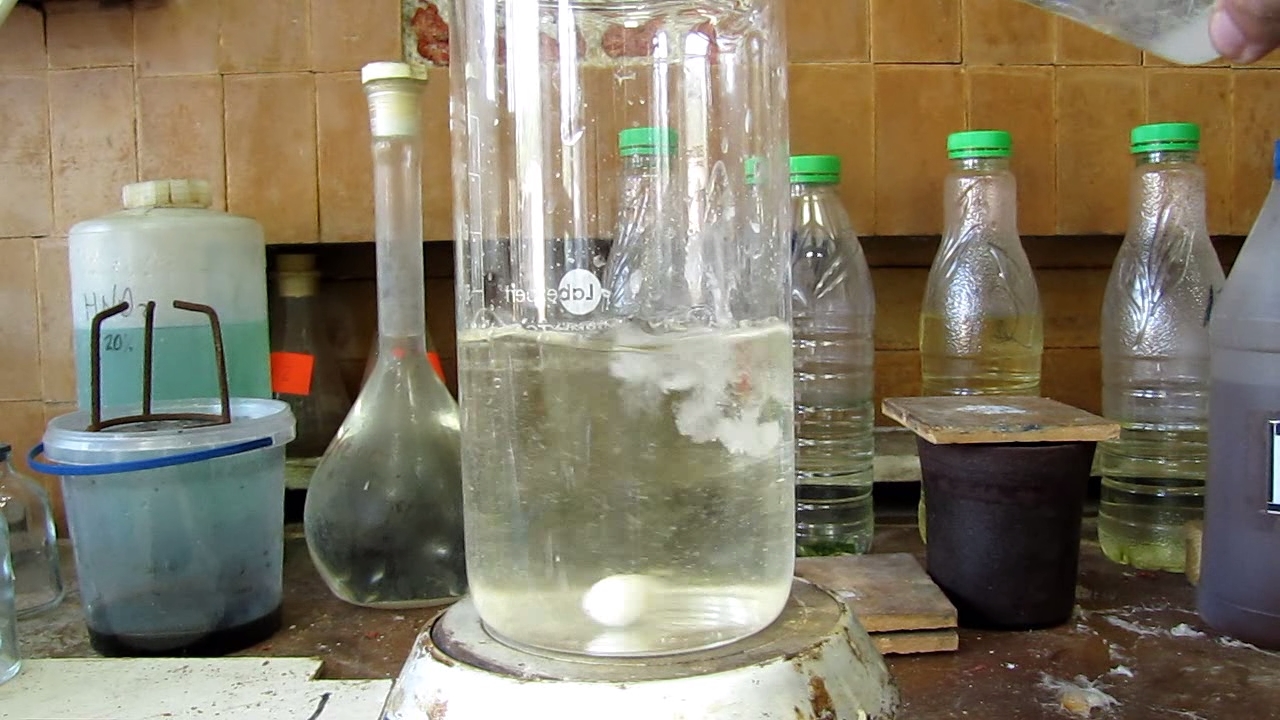
|
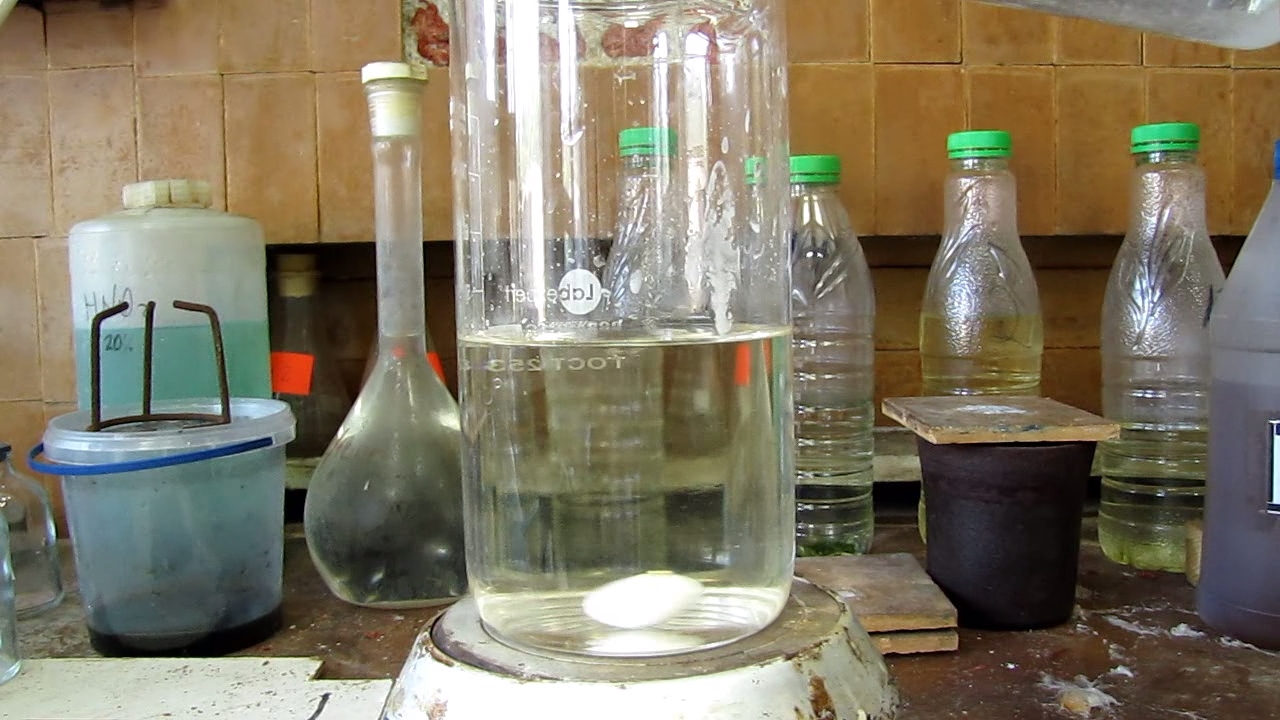
|
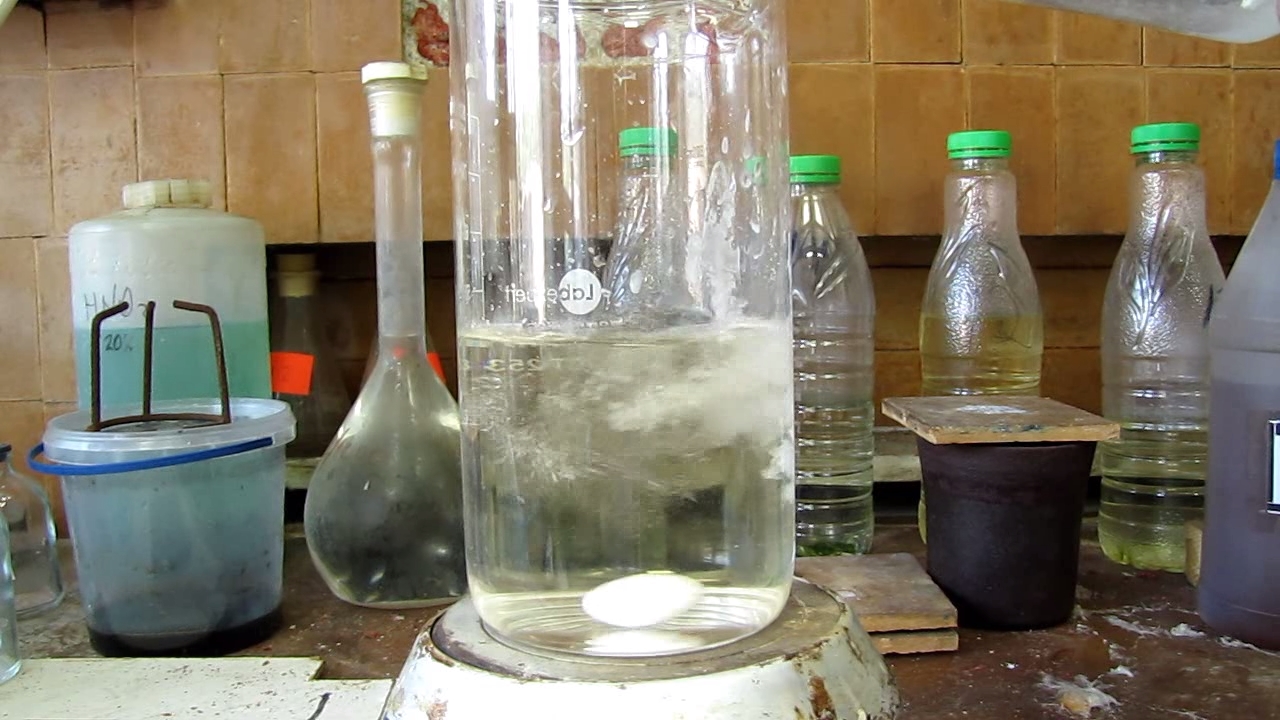
|

|
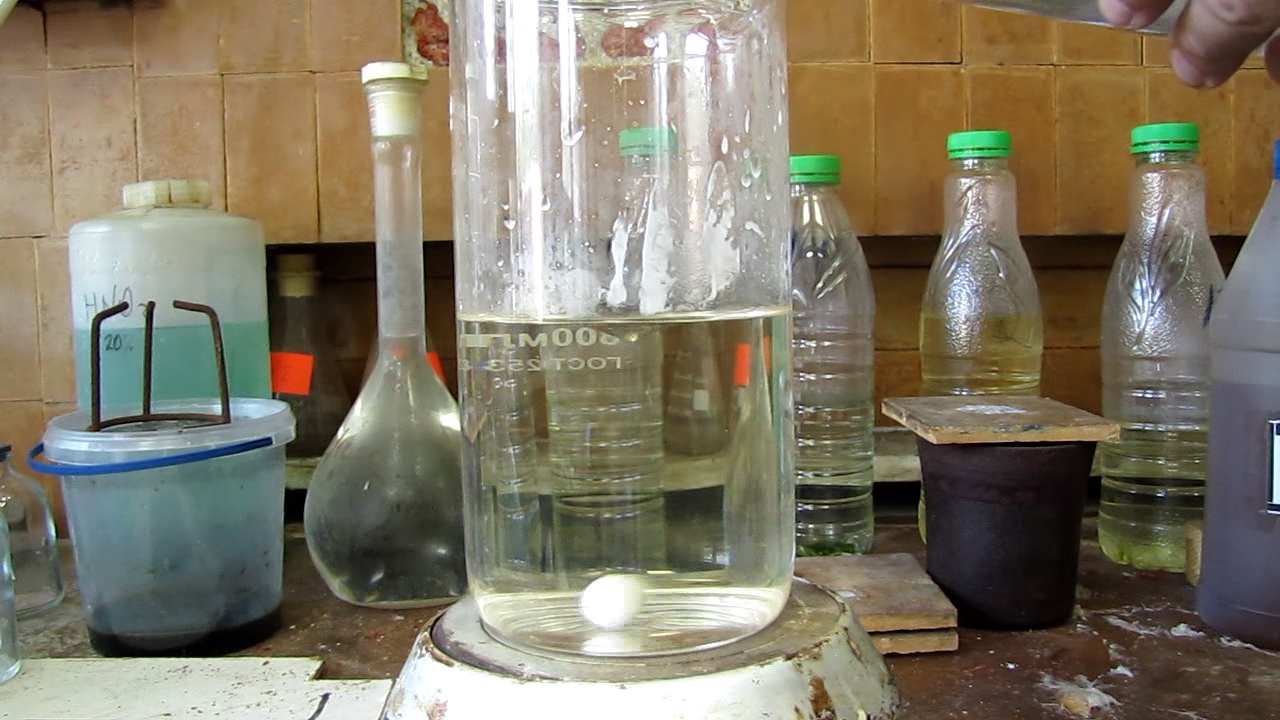
|
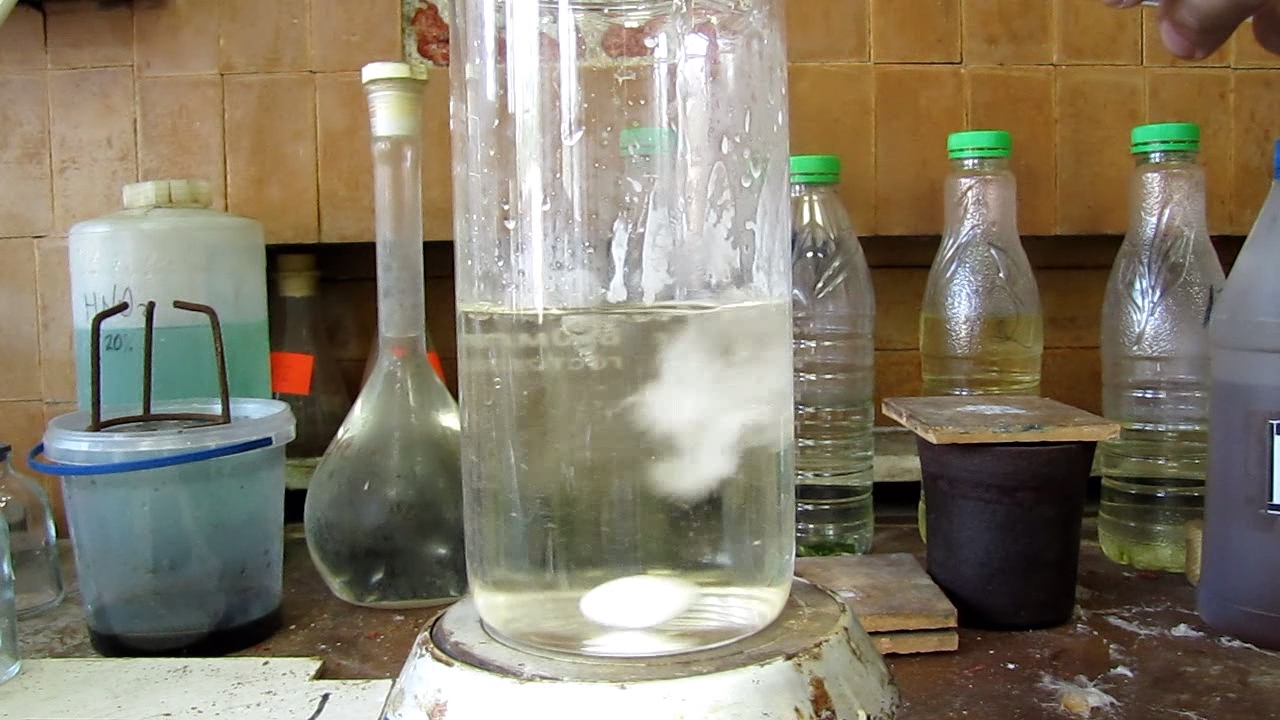
|
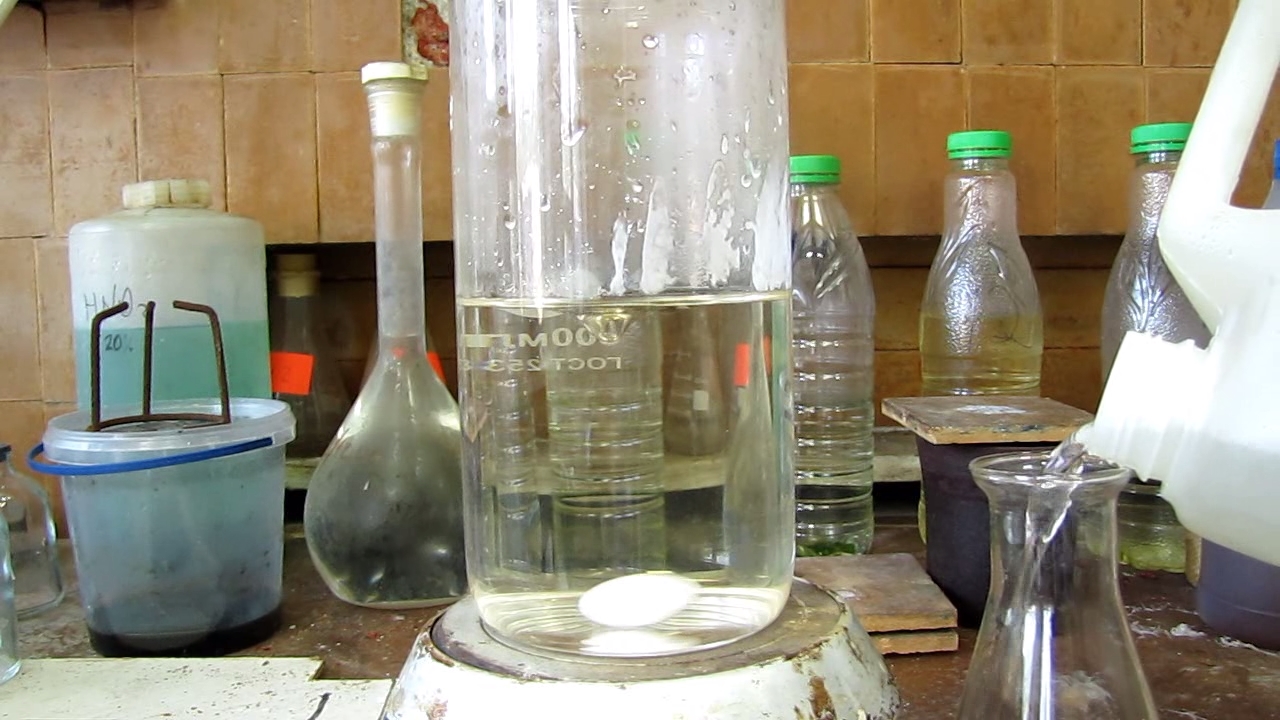
|
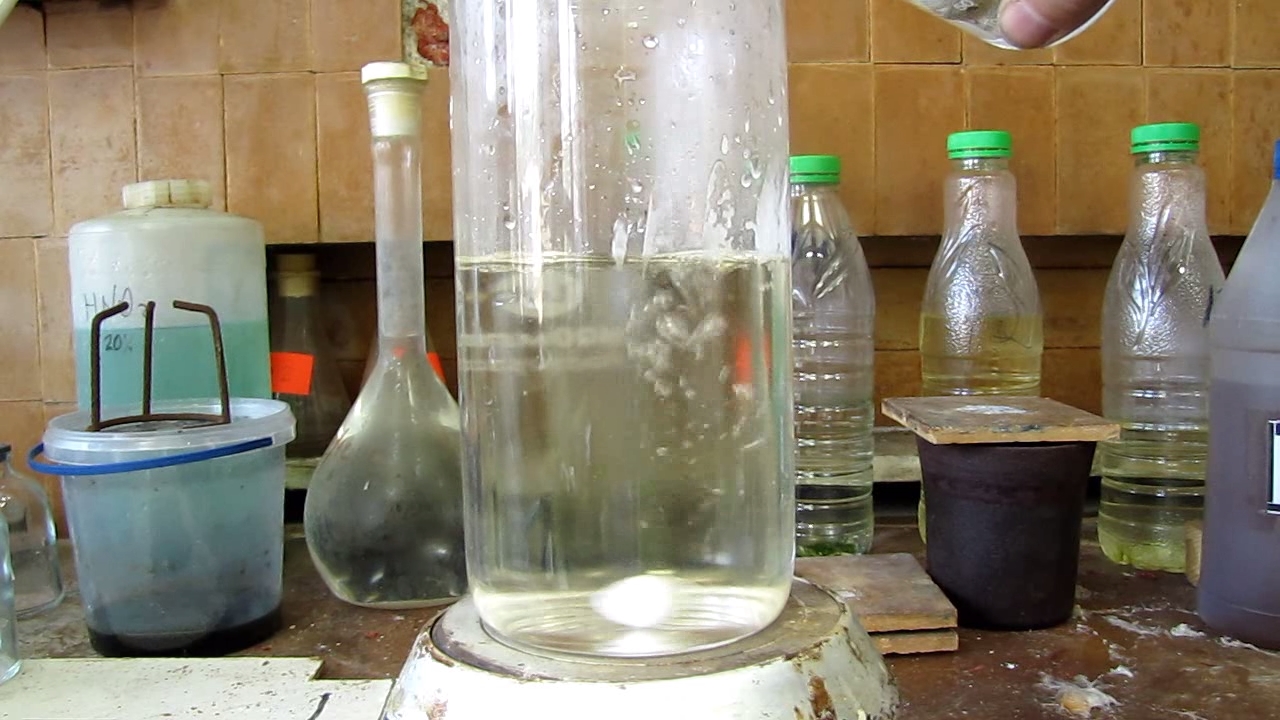
|
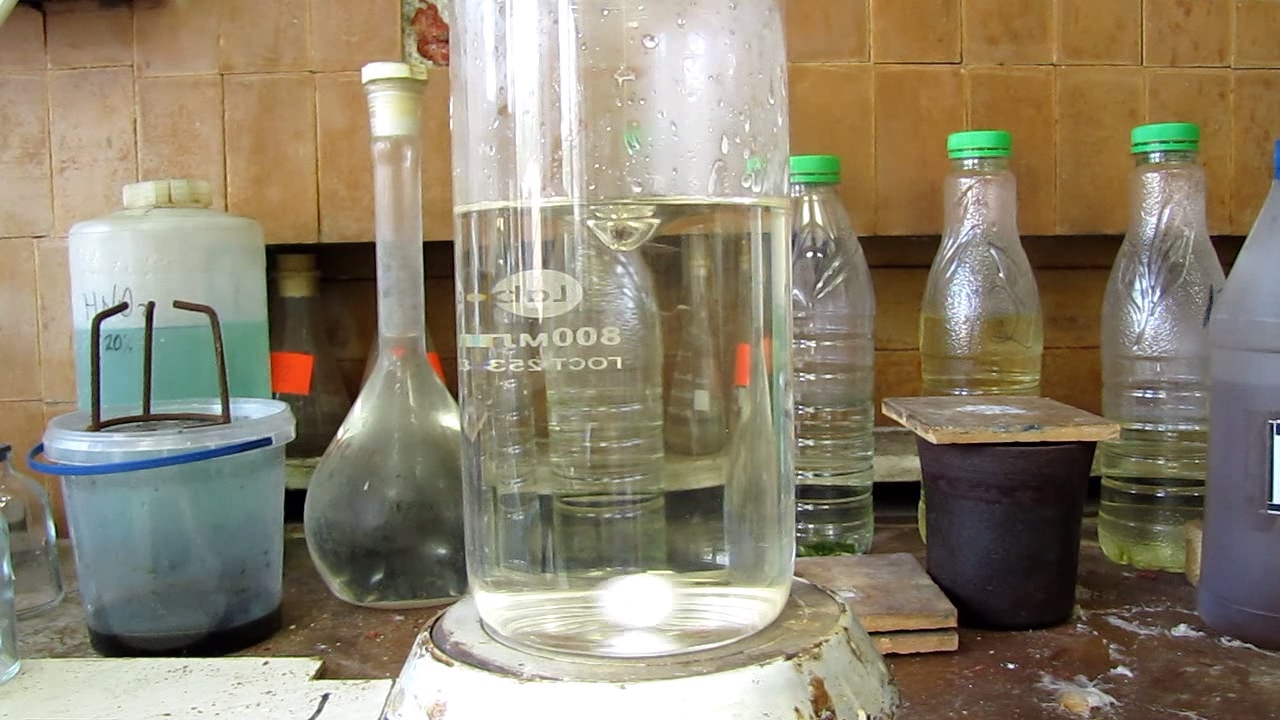
|
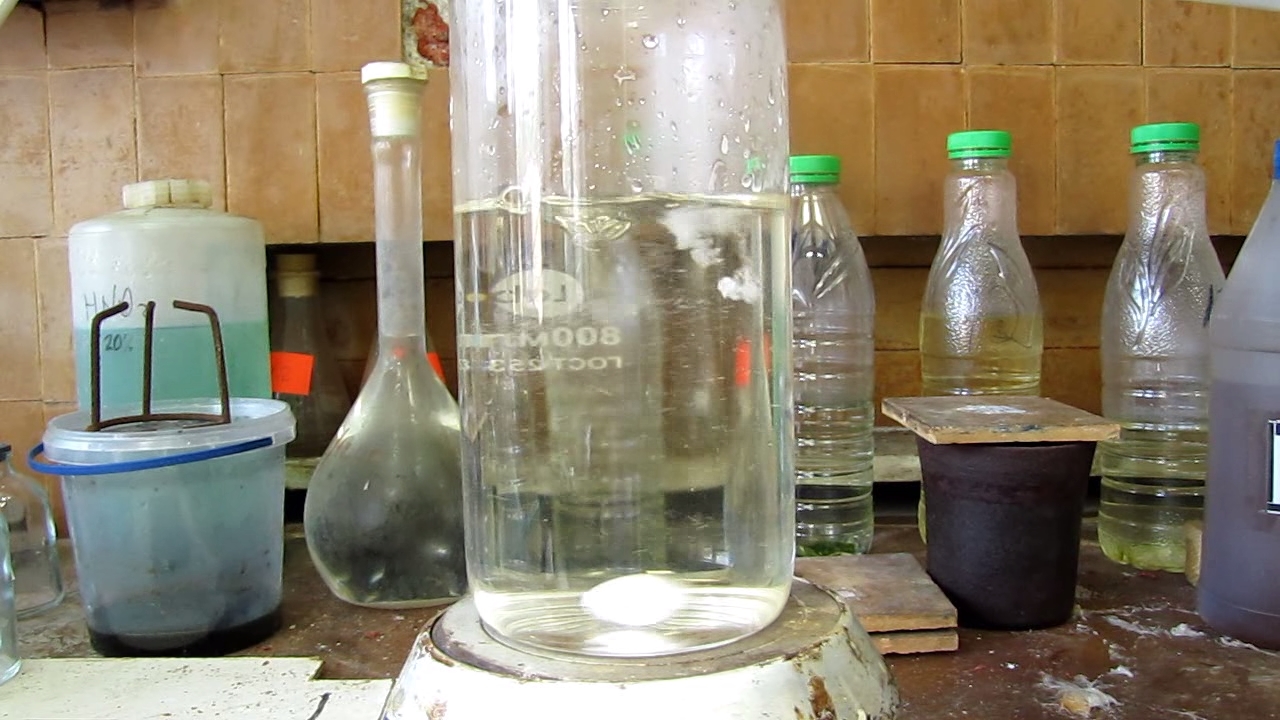
|
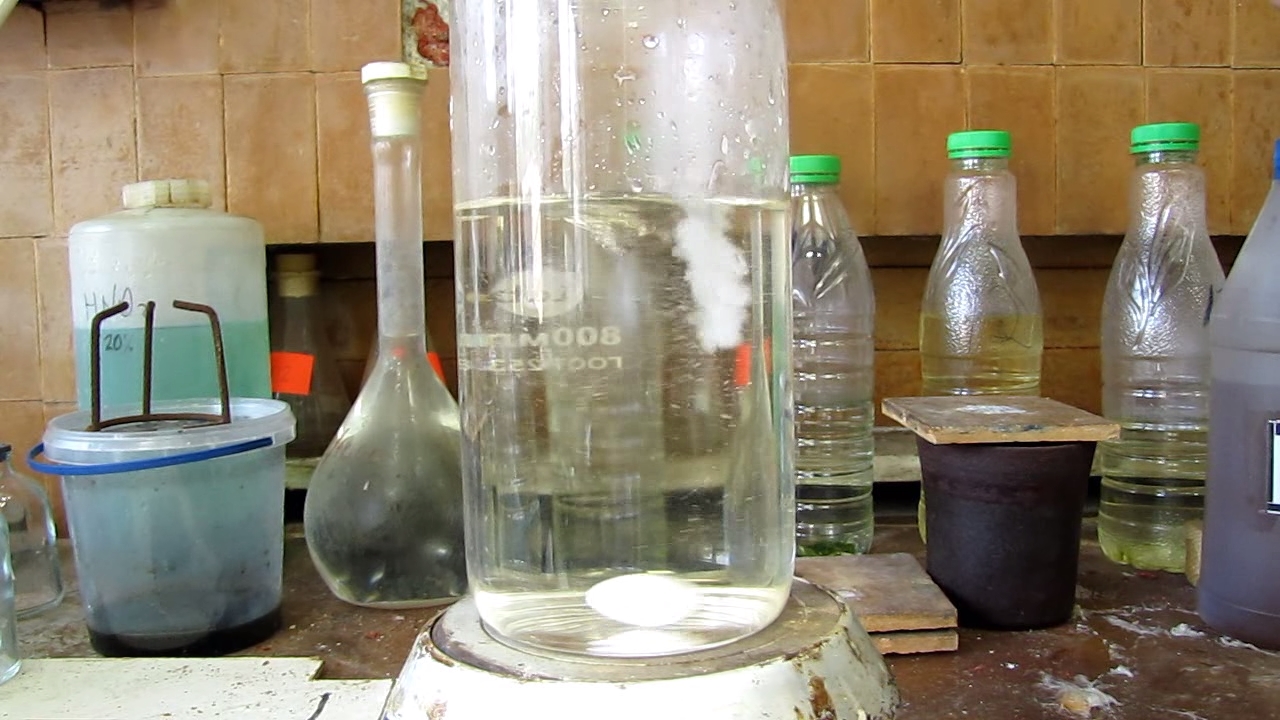
|
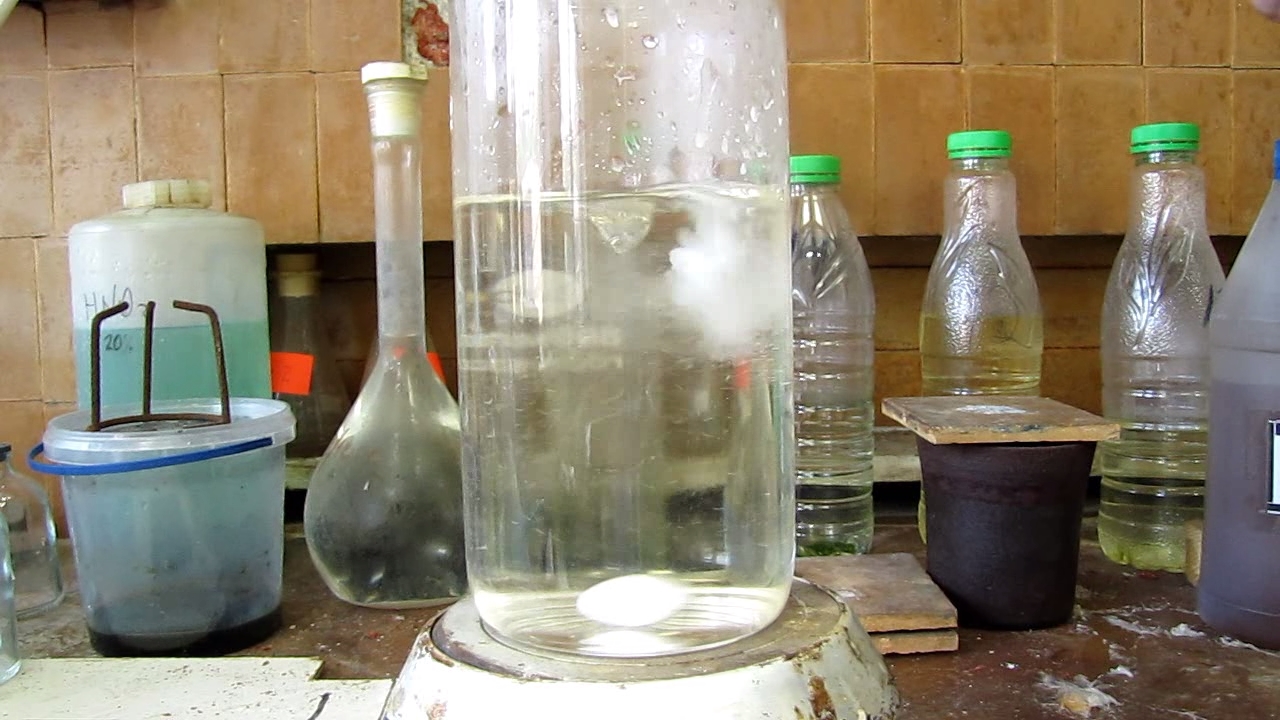
|
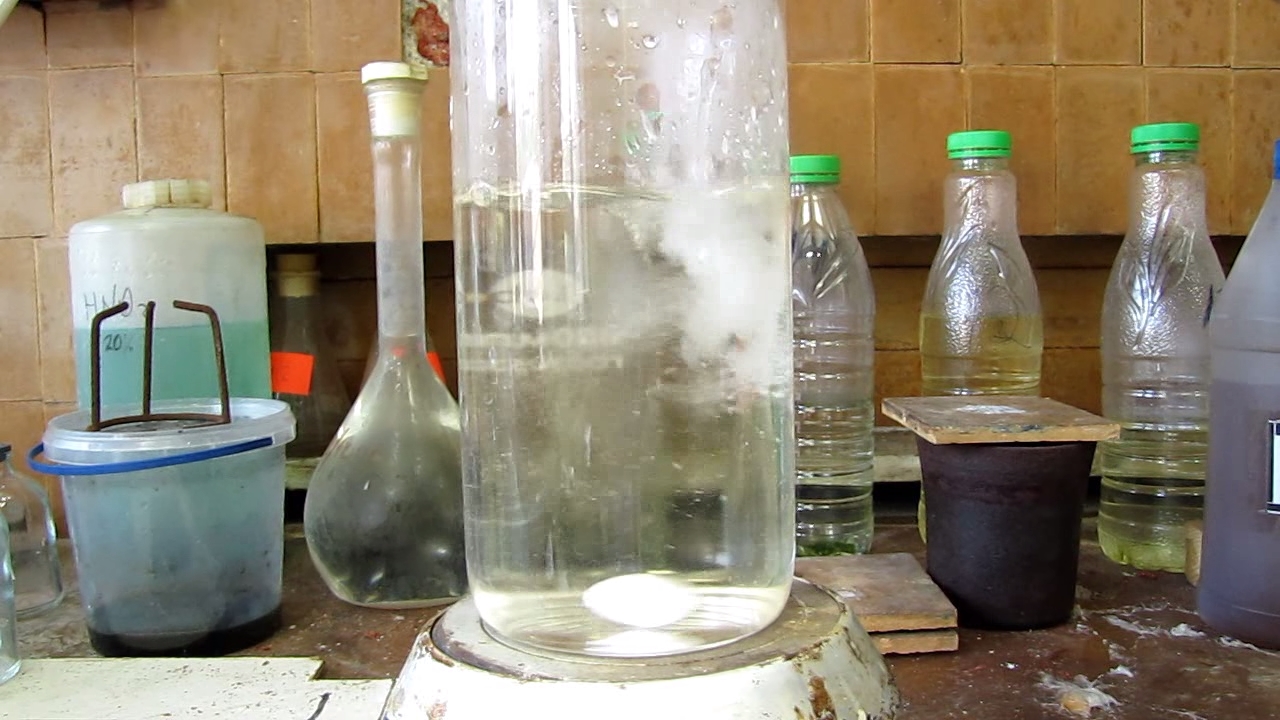
|
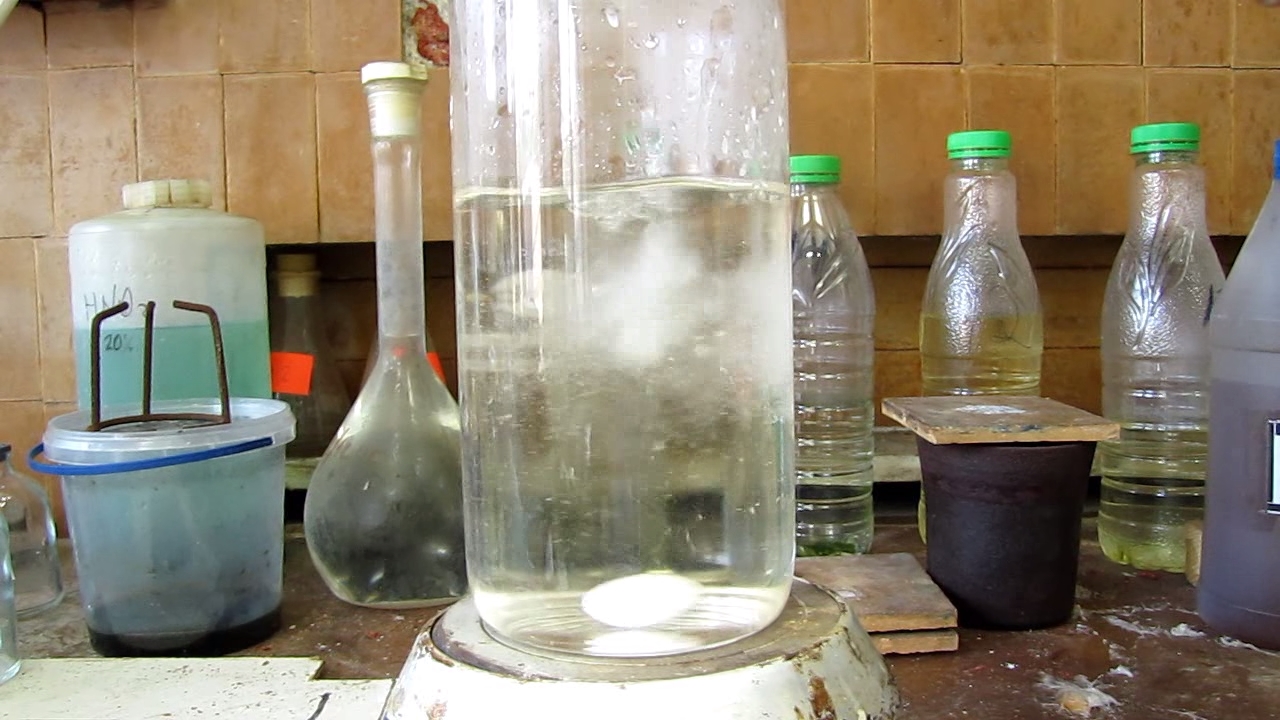
|
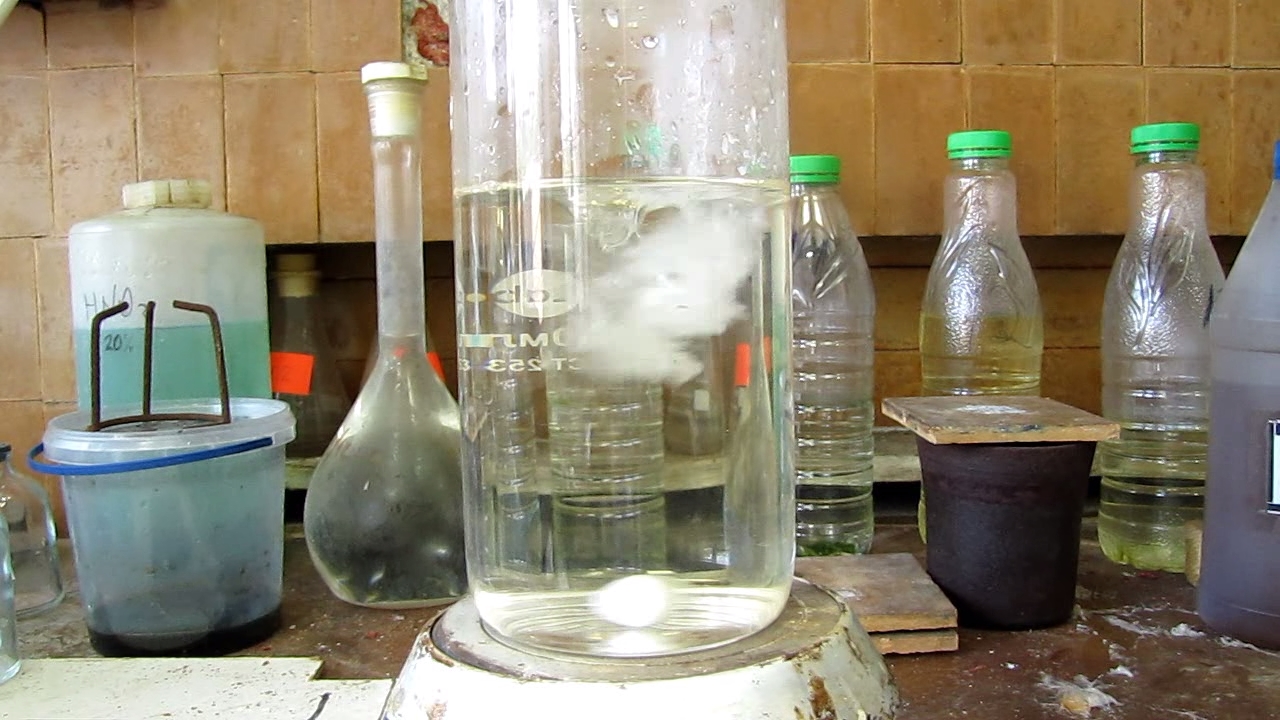
|
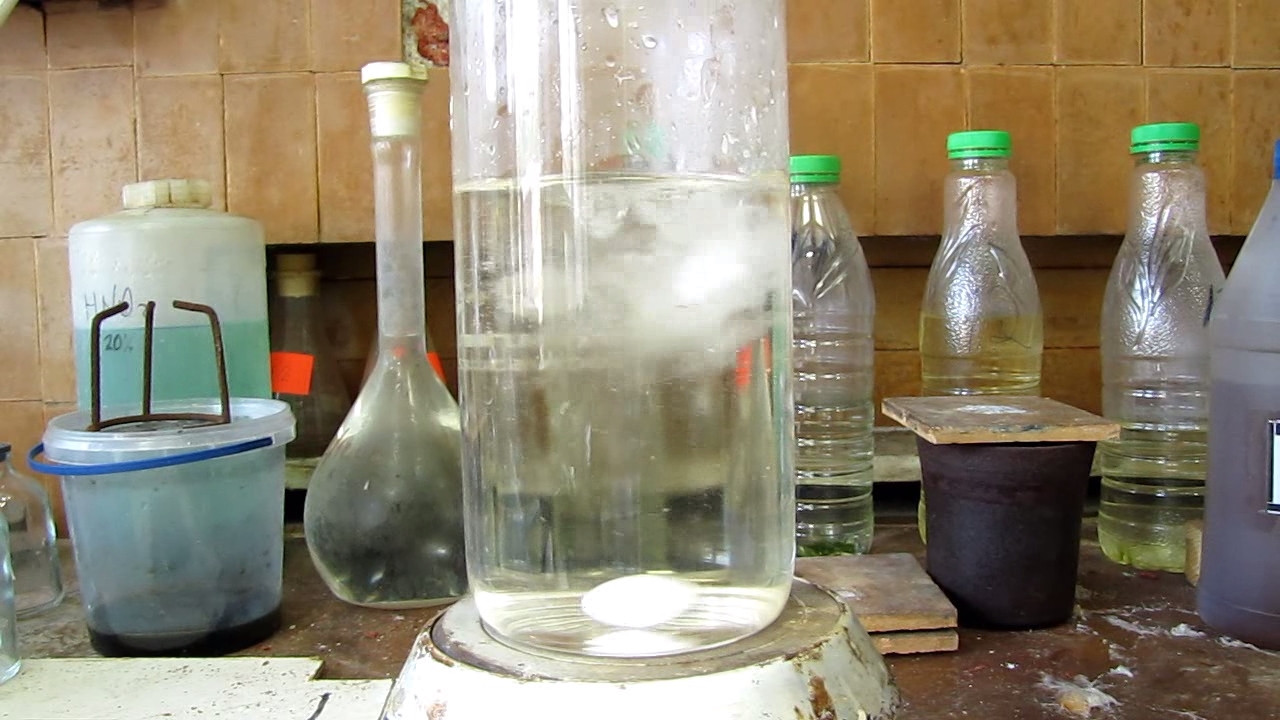
|
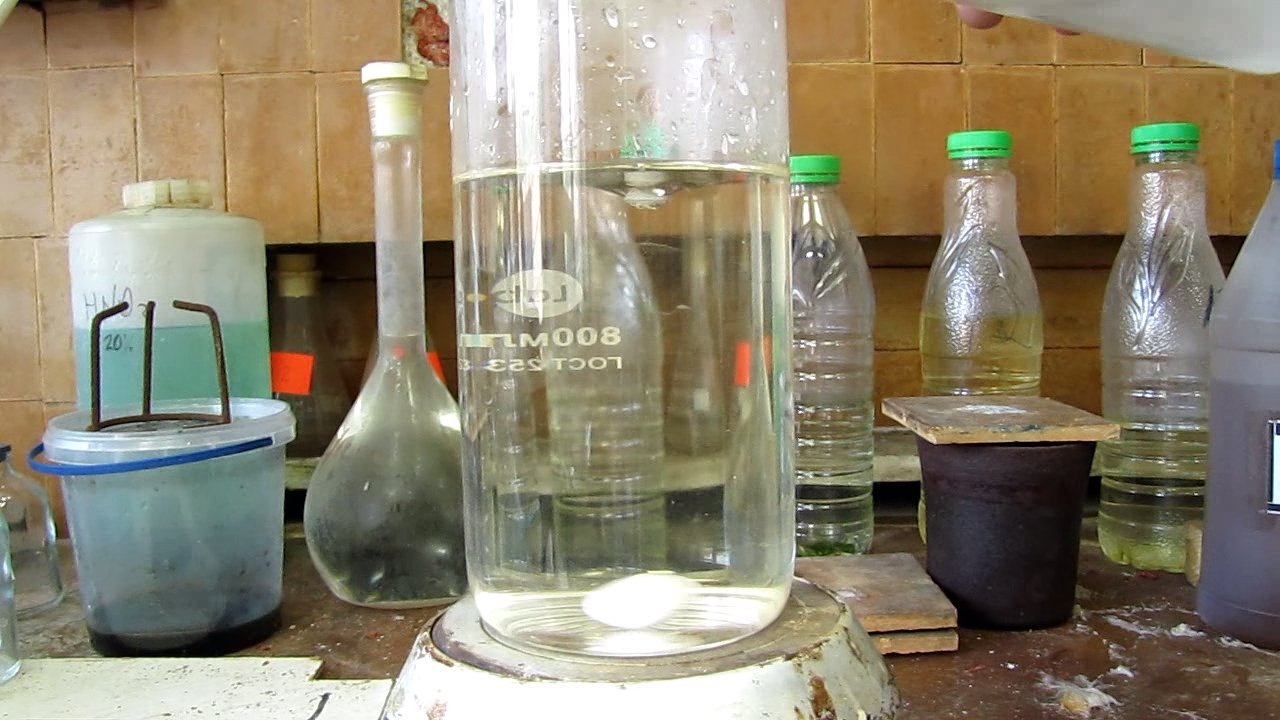
|
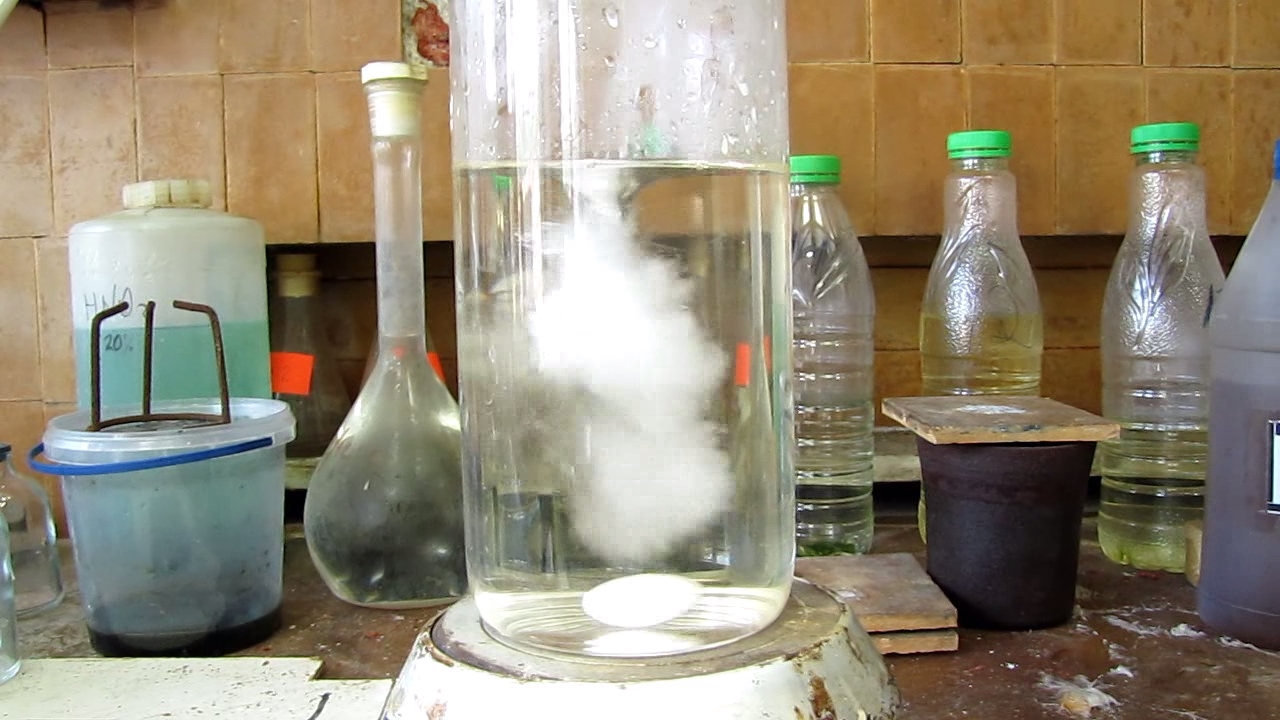
|
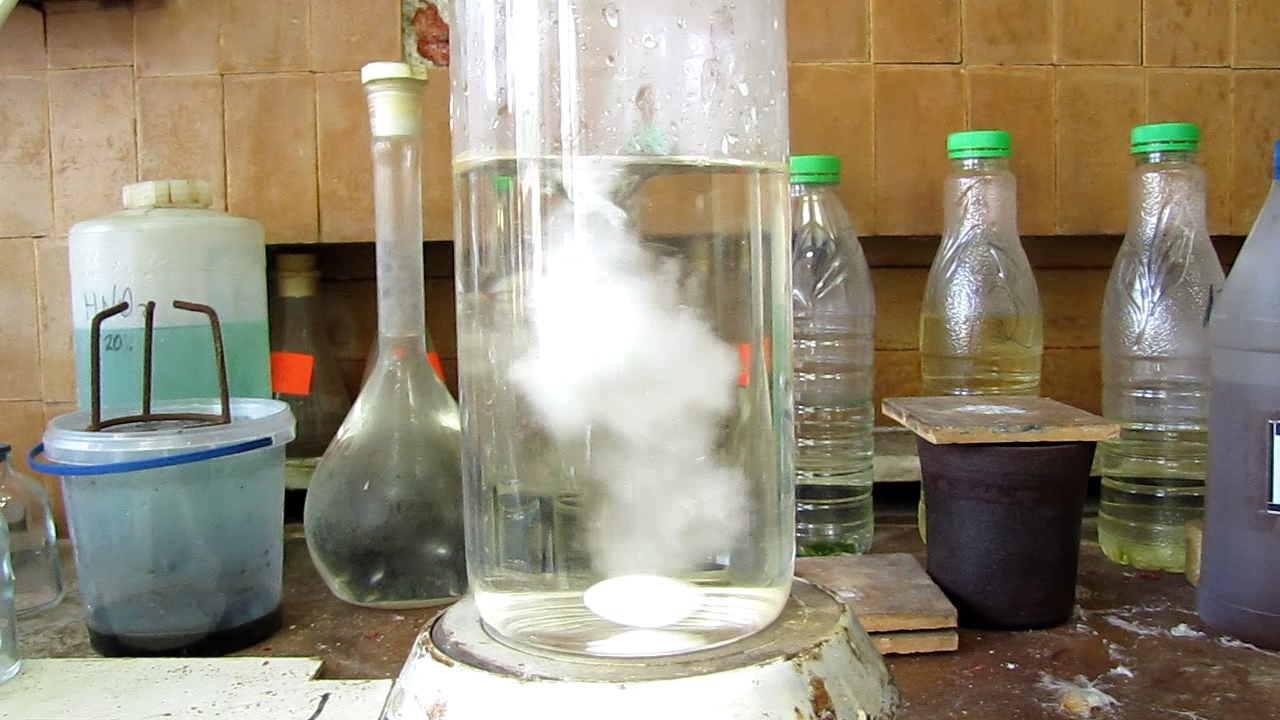
|
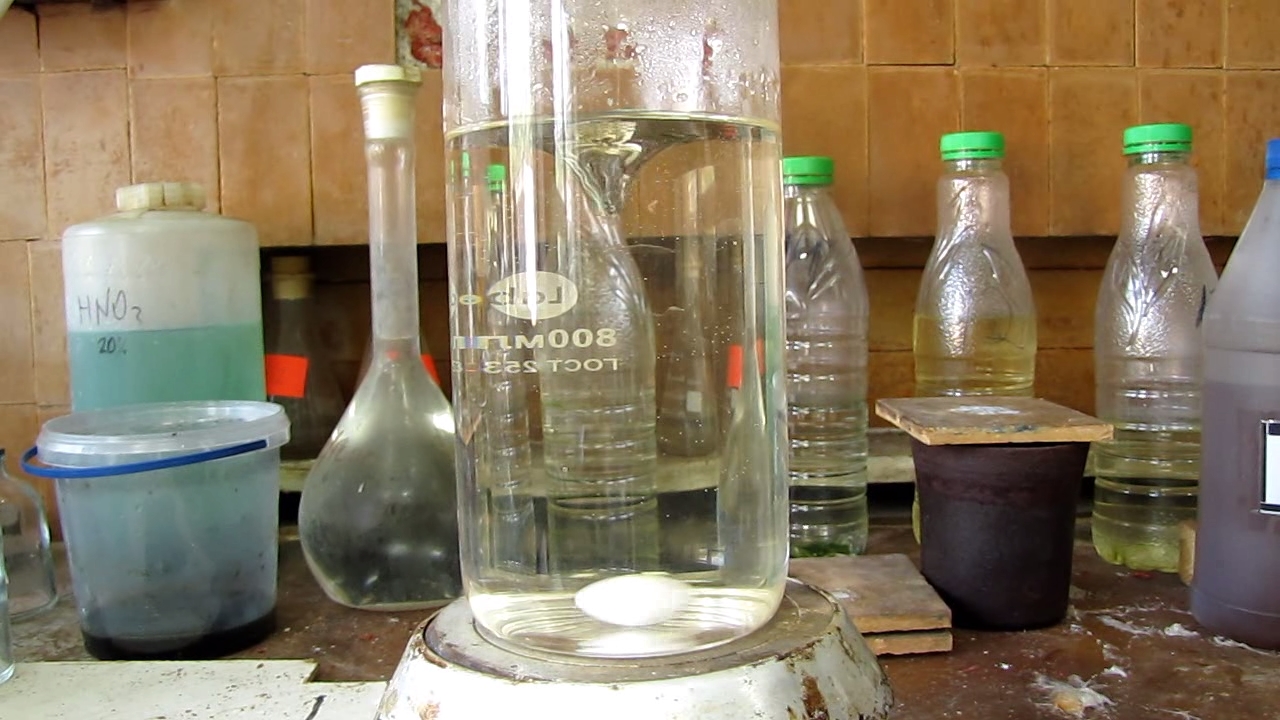
|
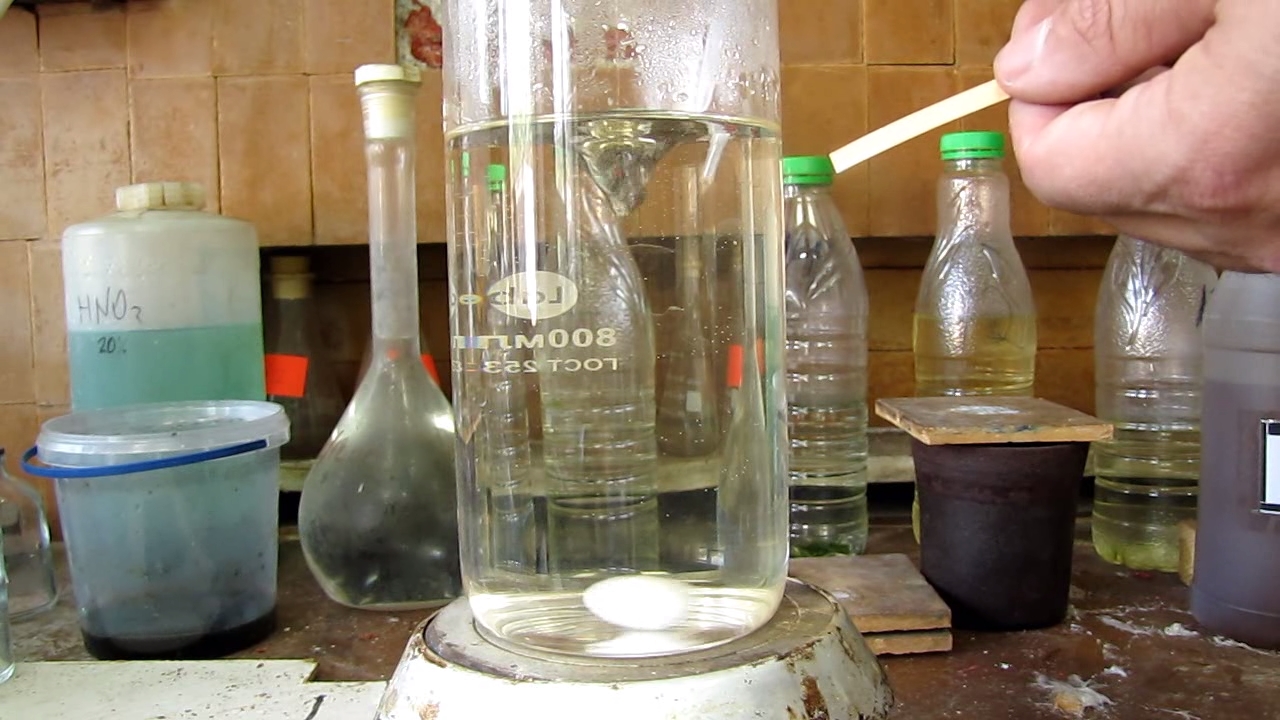
|
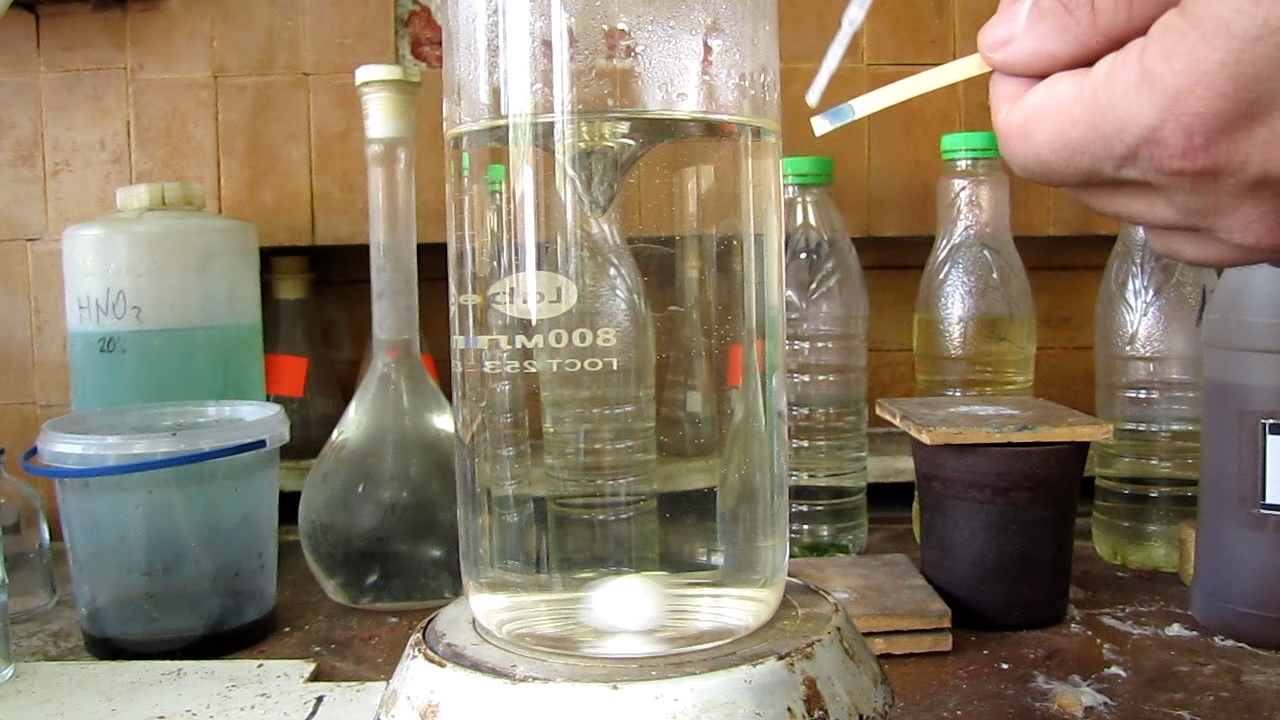
|
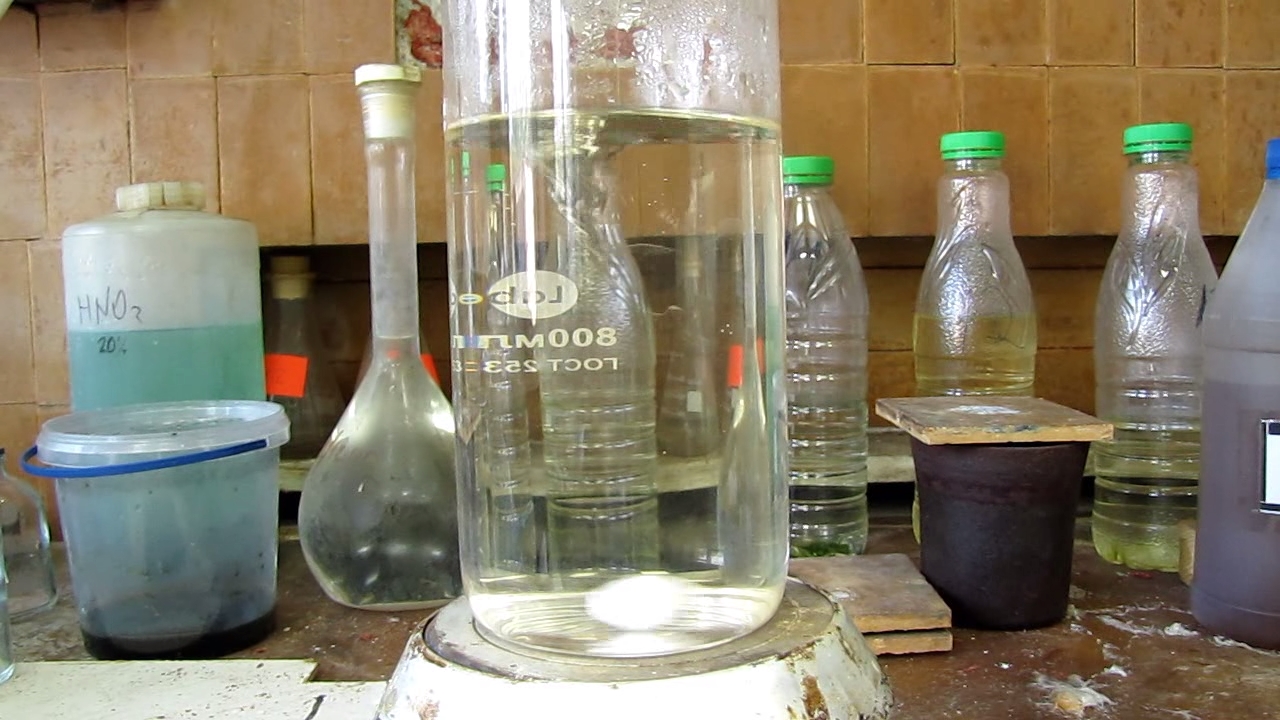
|
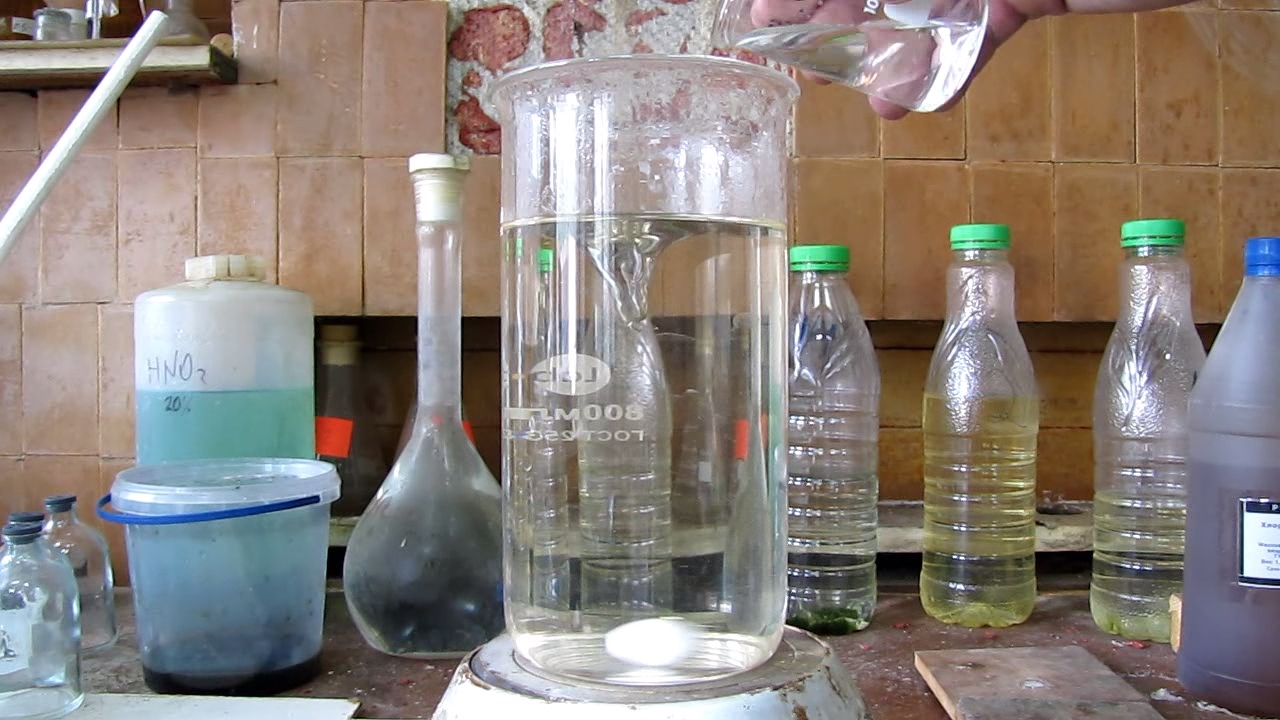
|
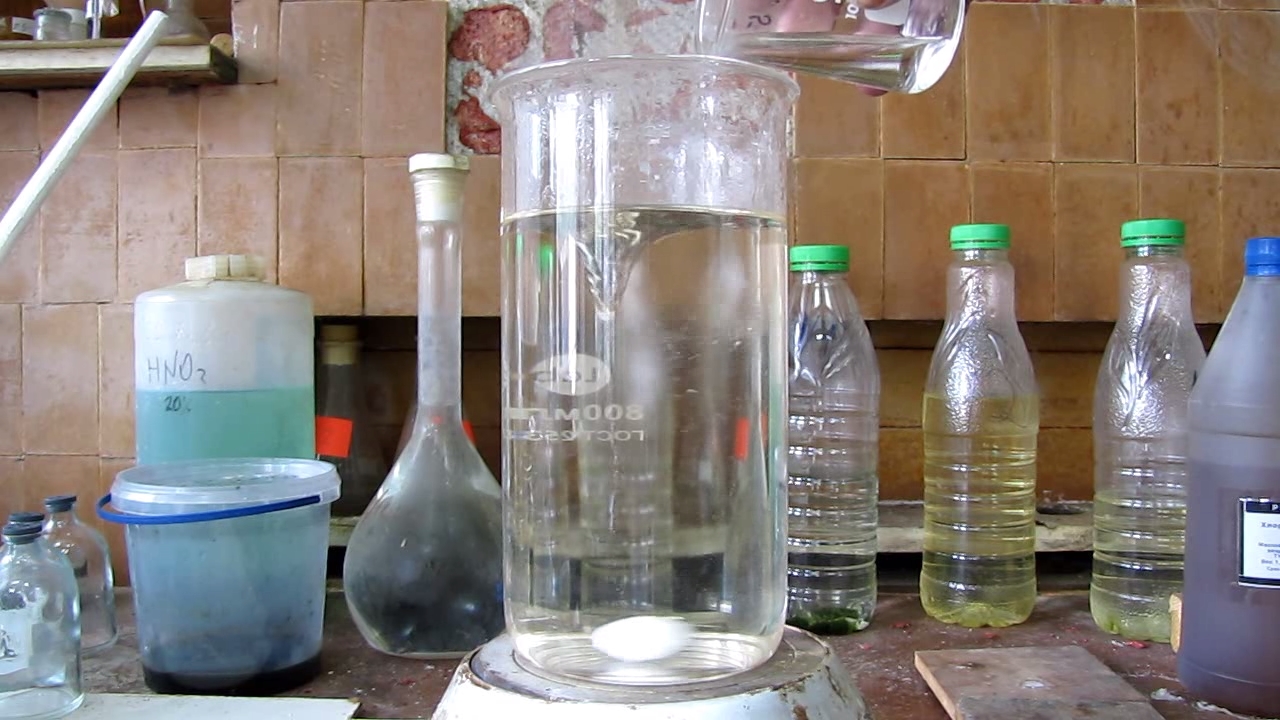
|

|
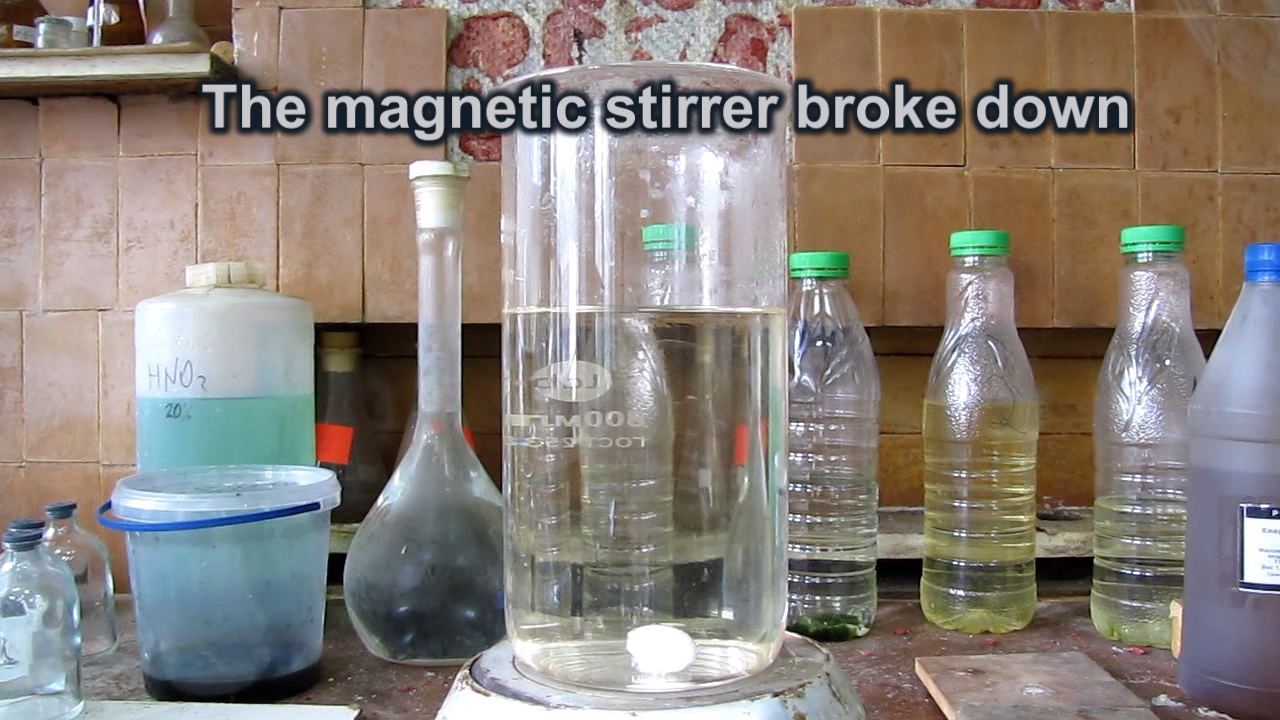
|
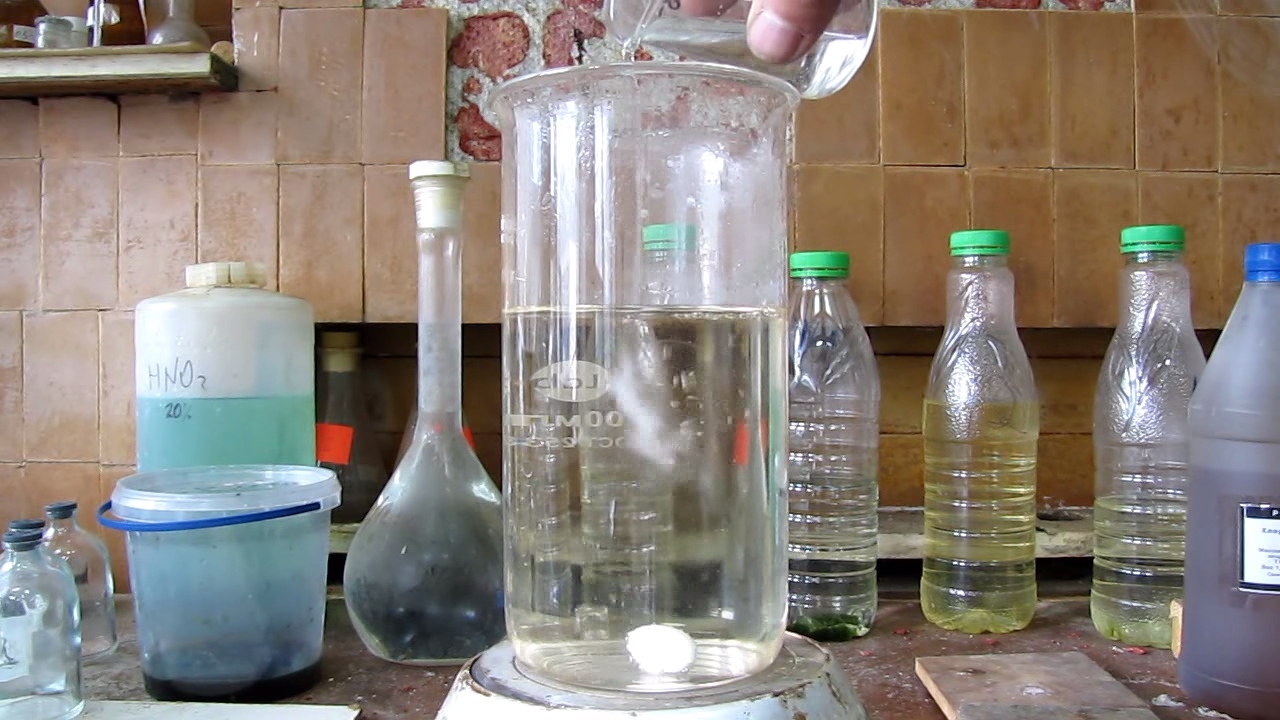
|
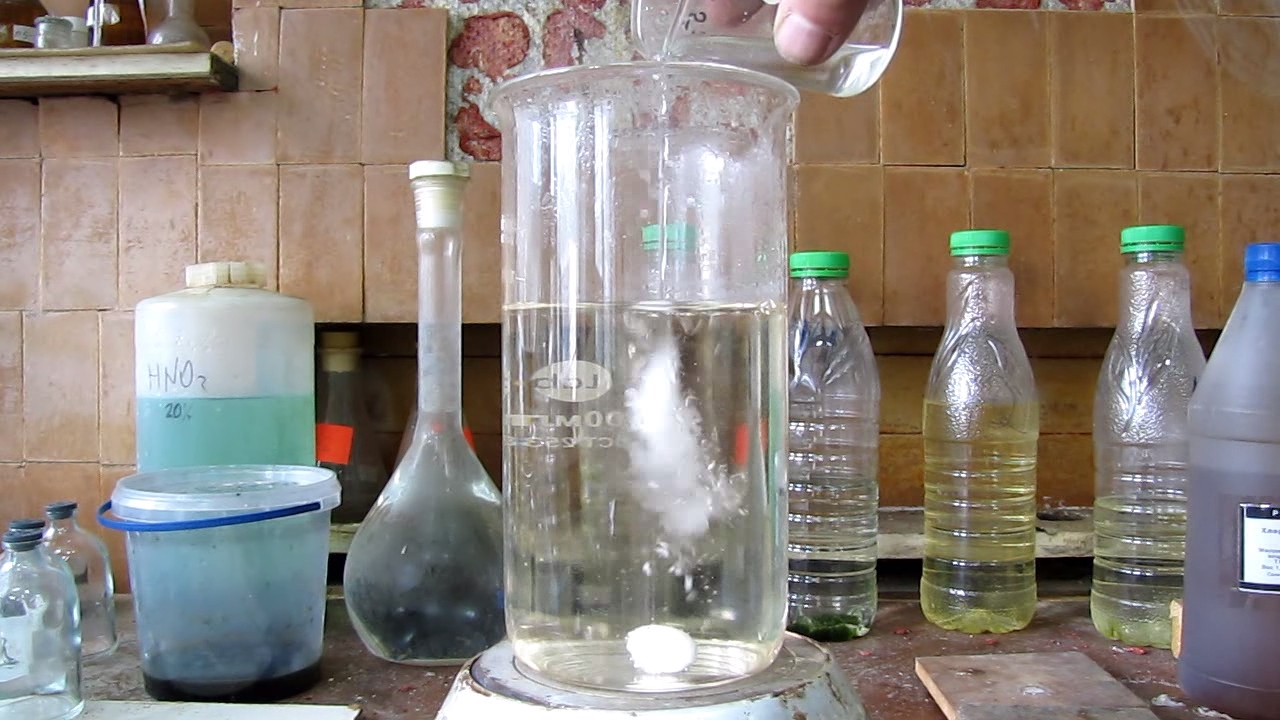
|
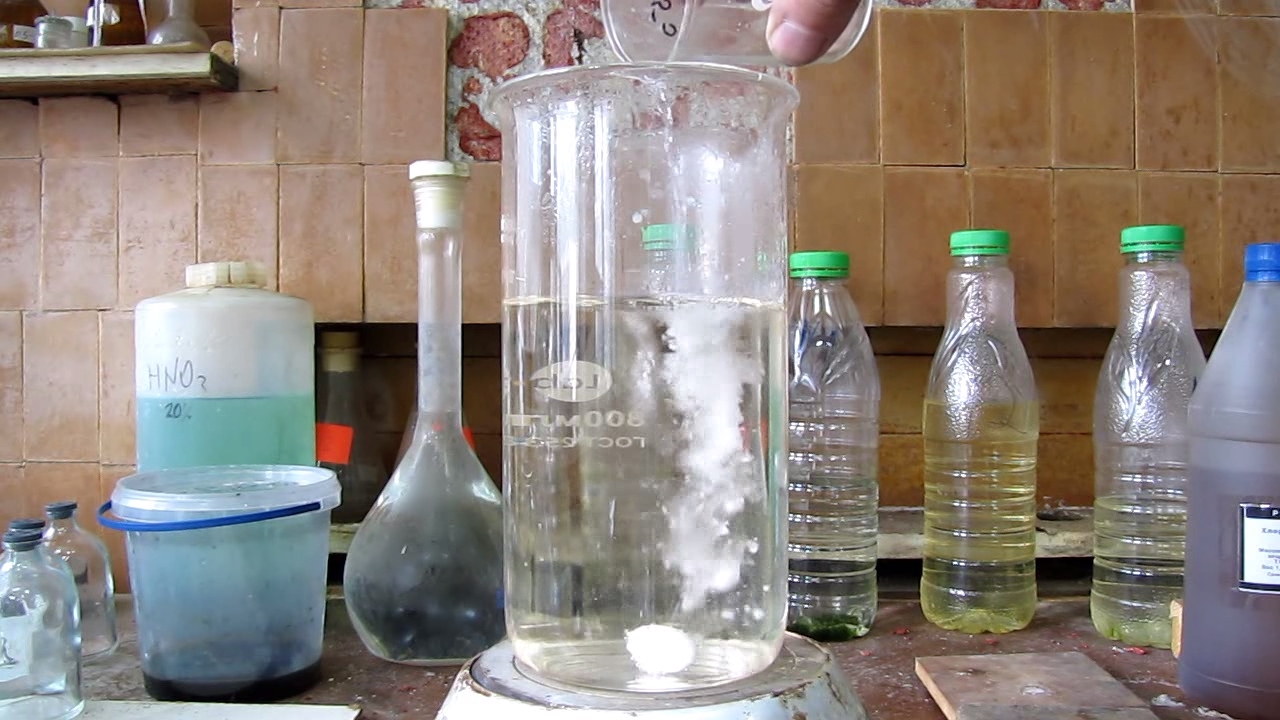
|
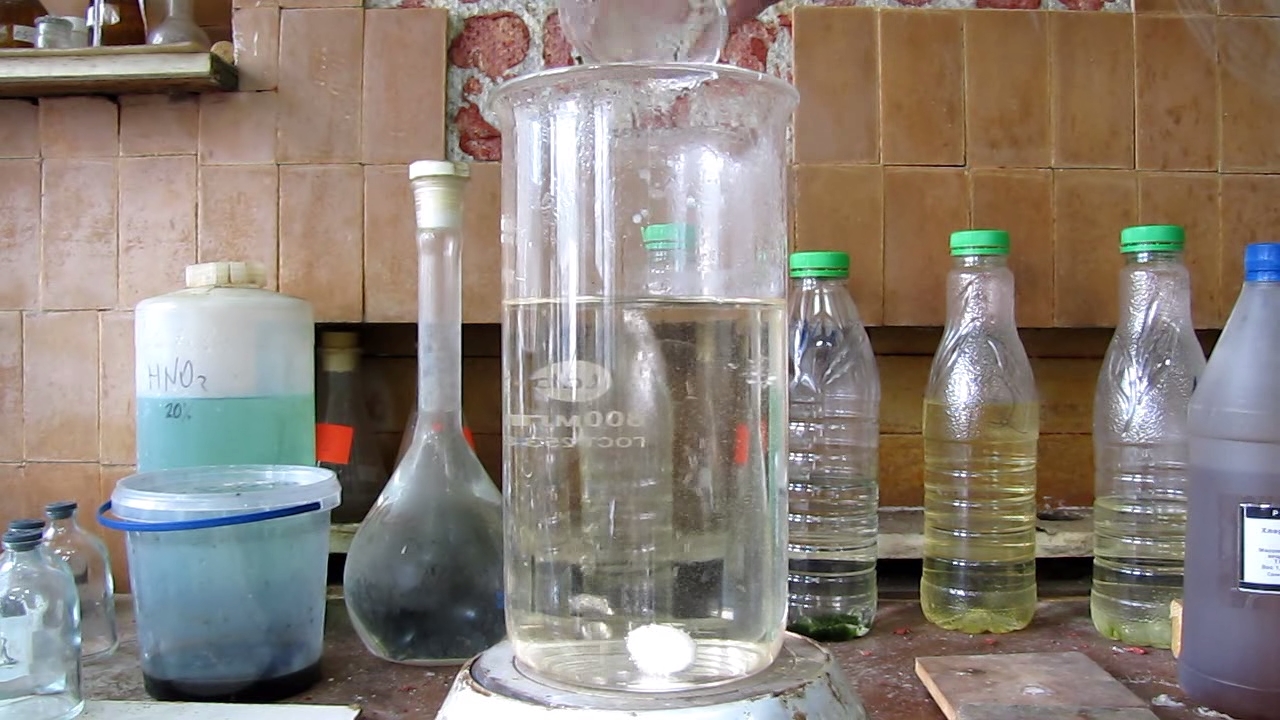
|
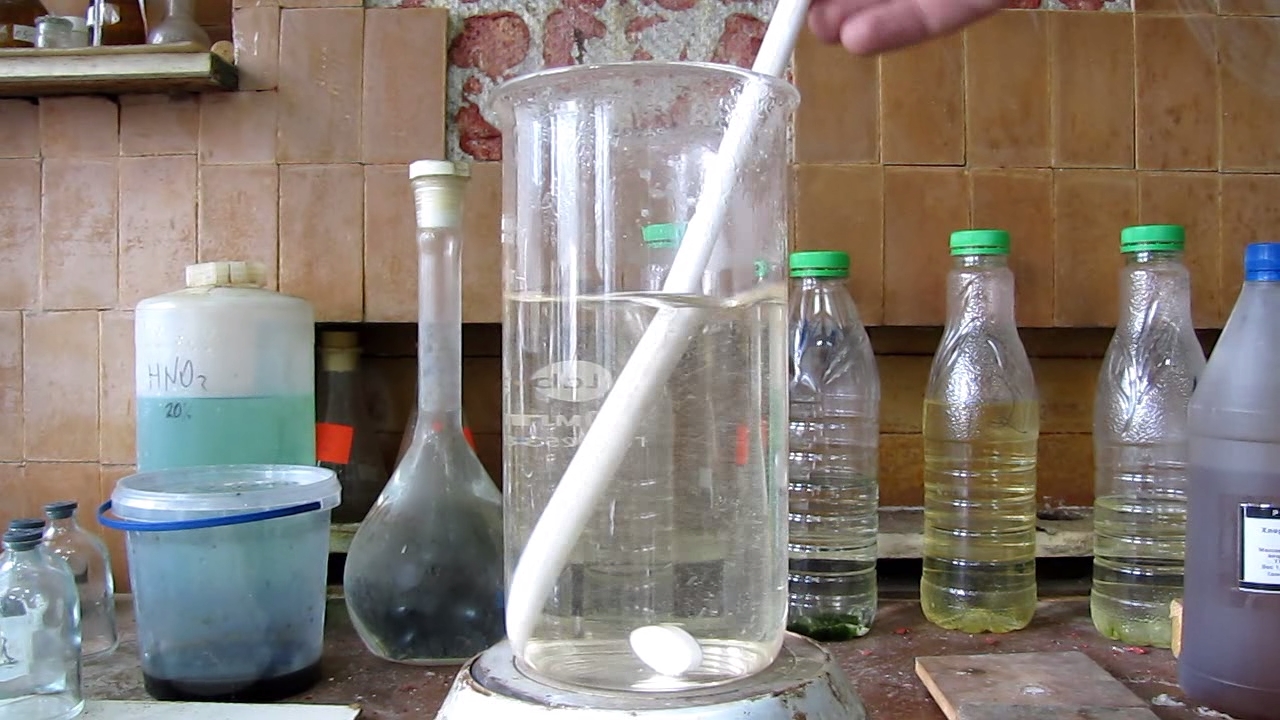
|
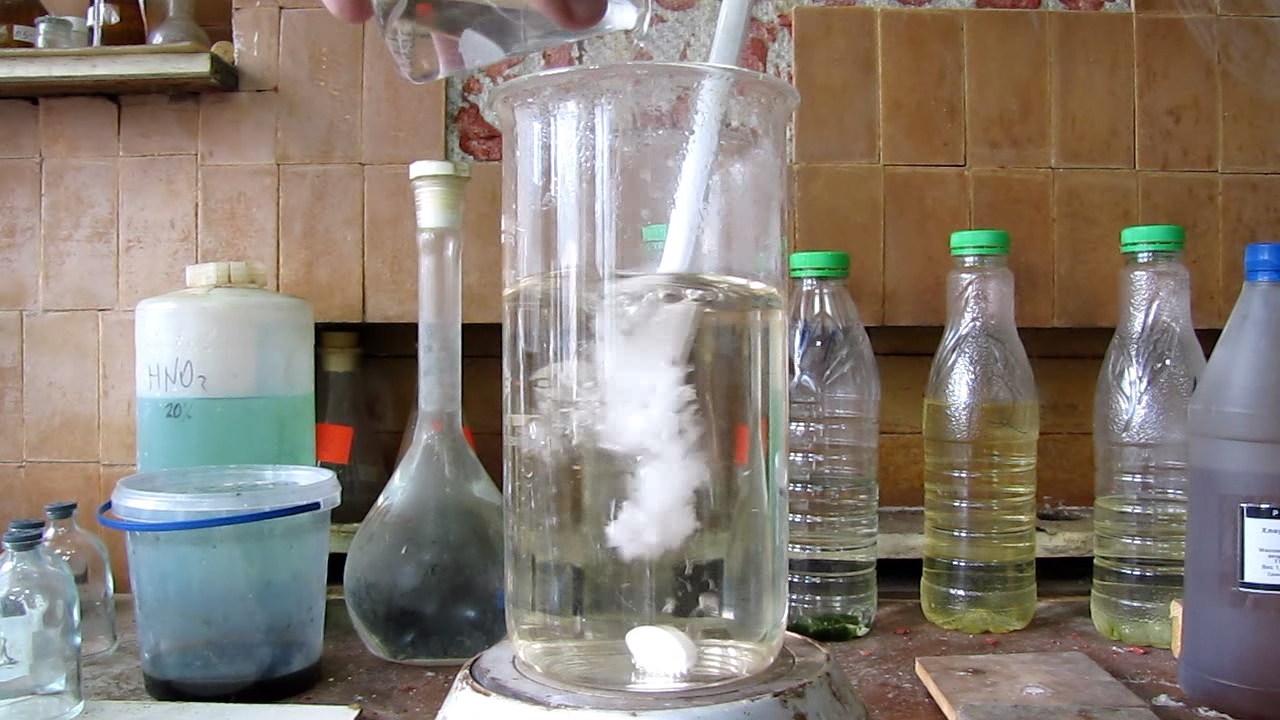
|
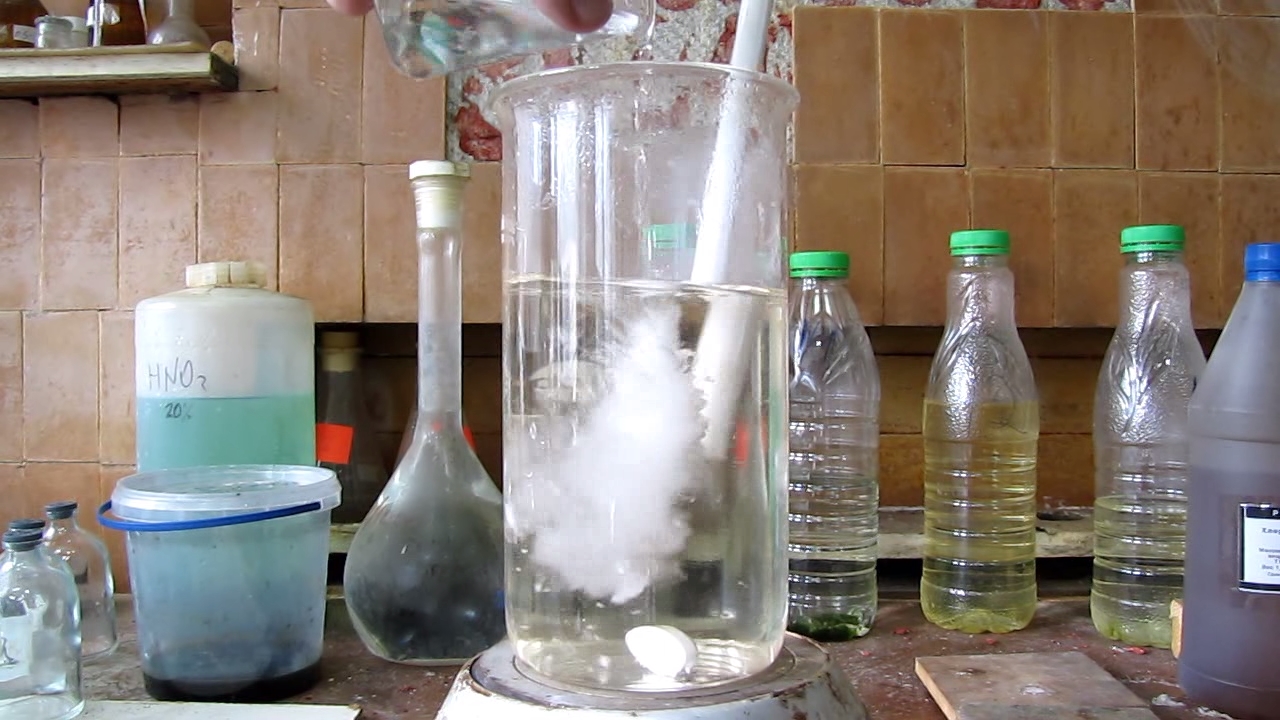
|
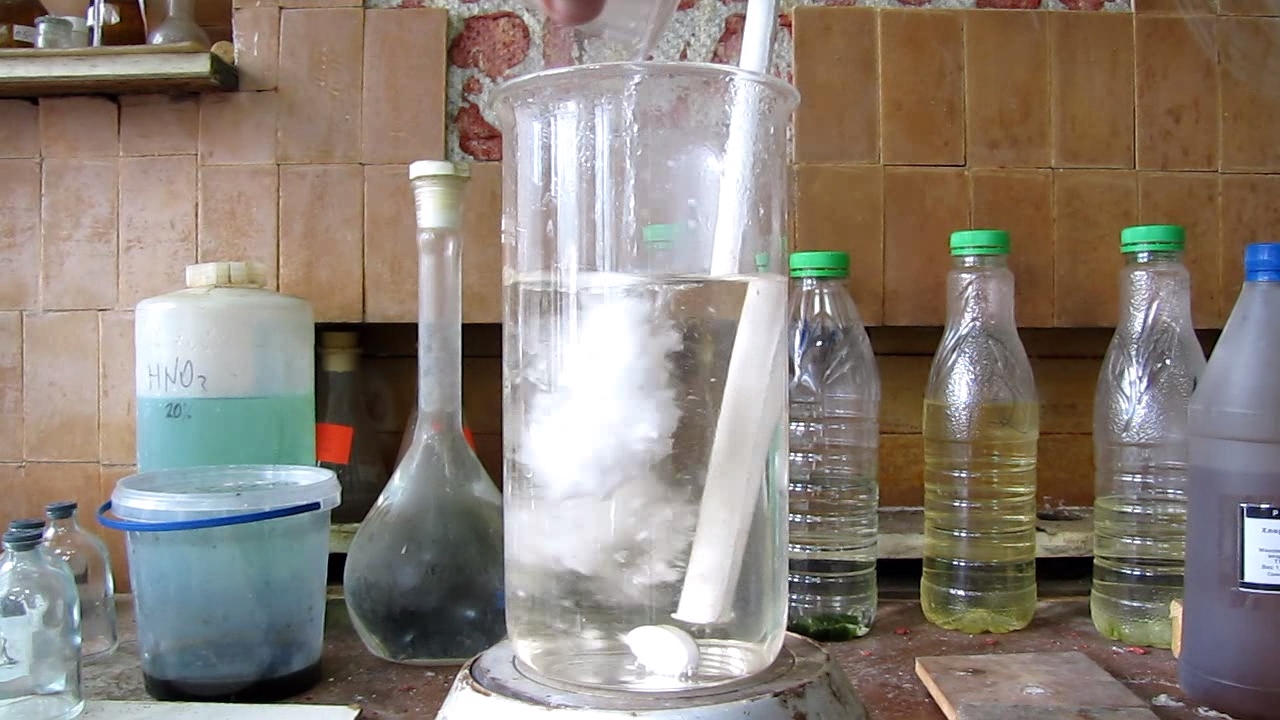
|
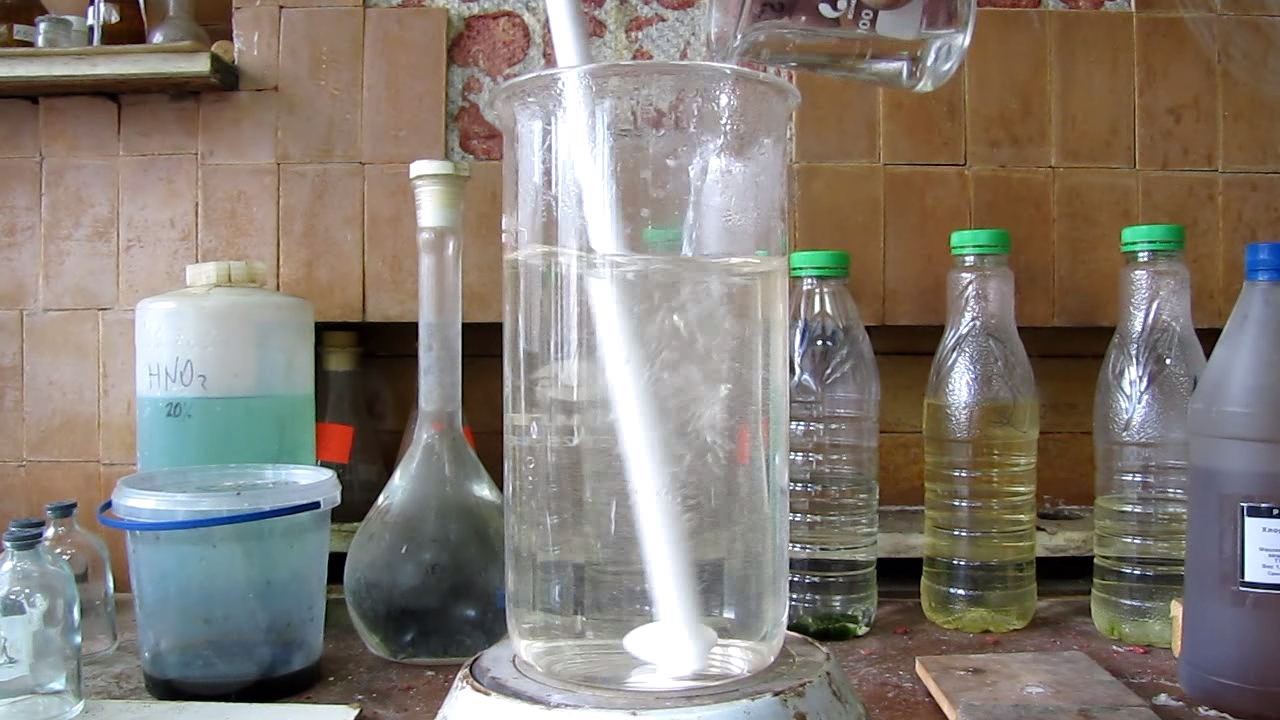
|
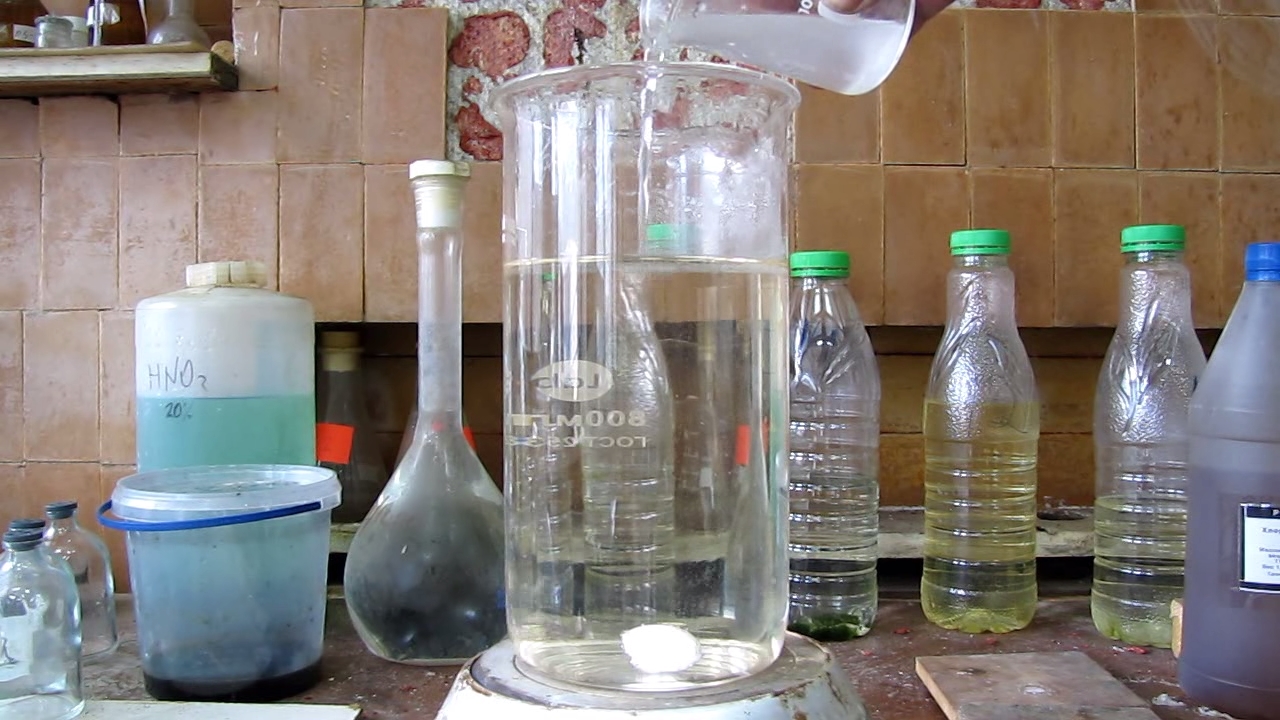
|
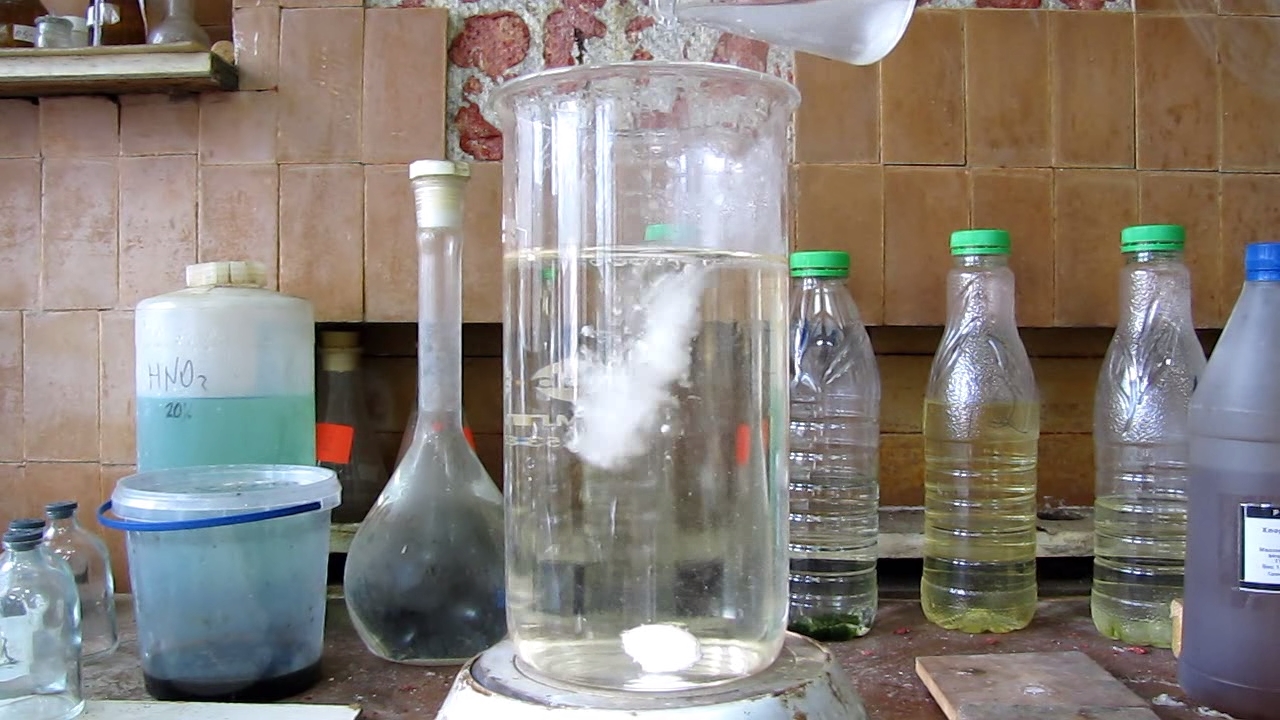
|
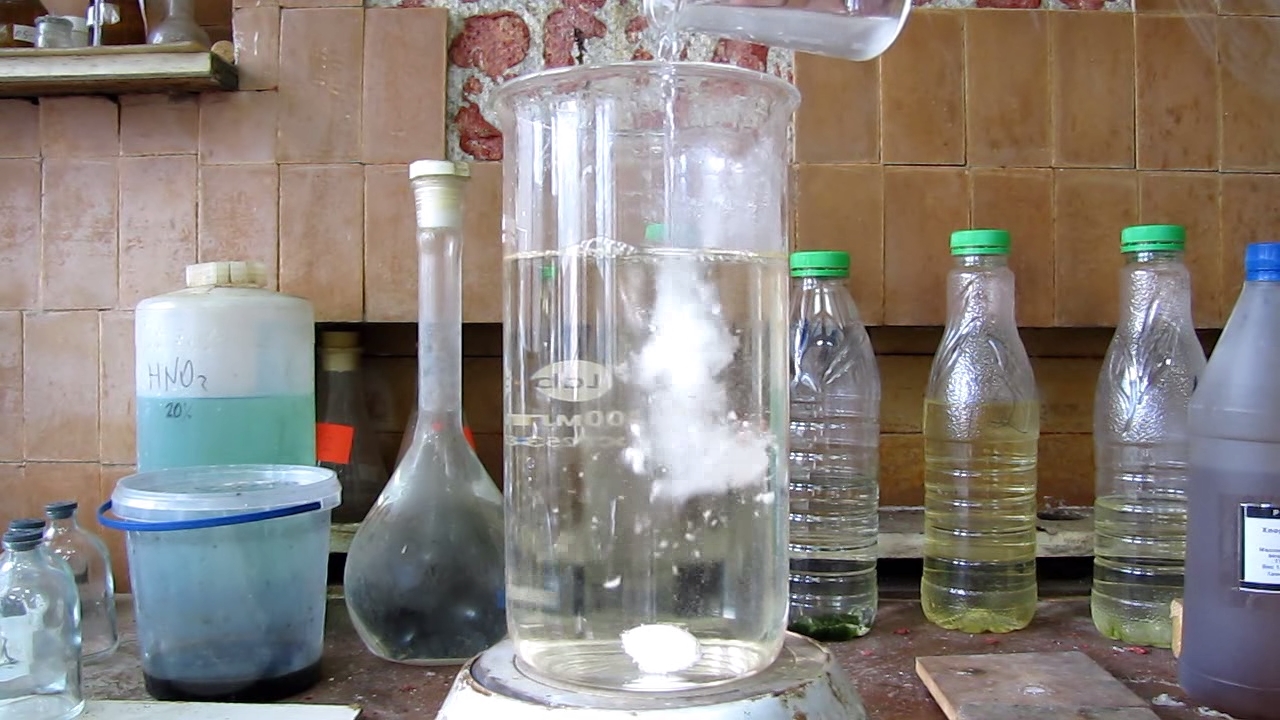
|

|
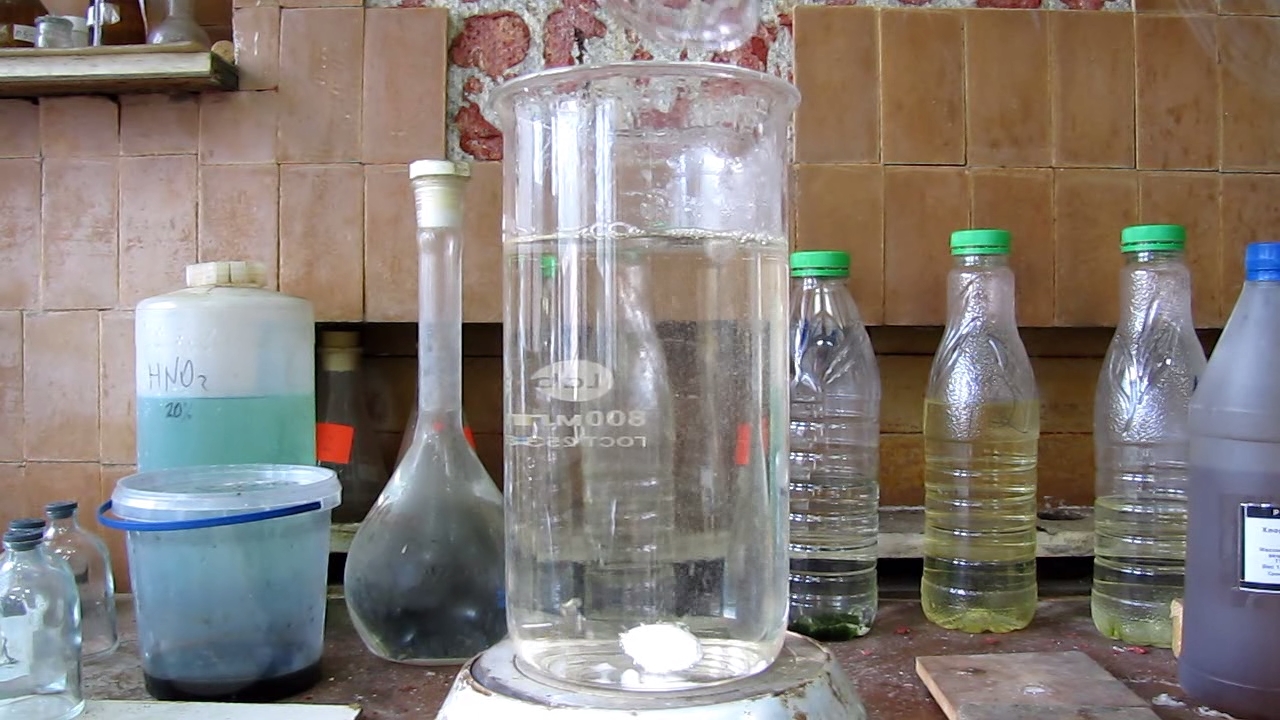
|
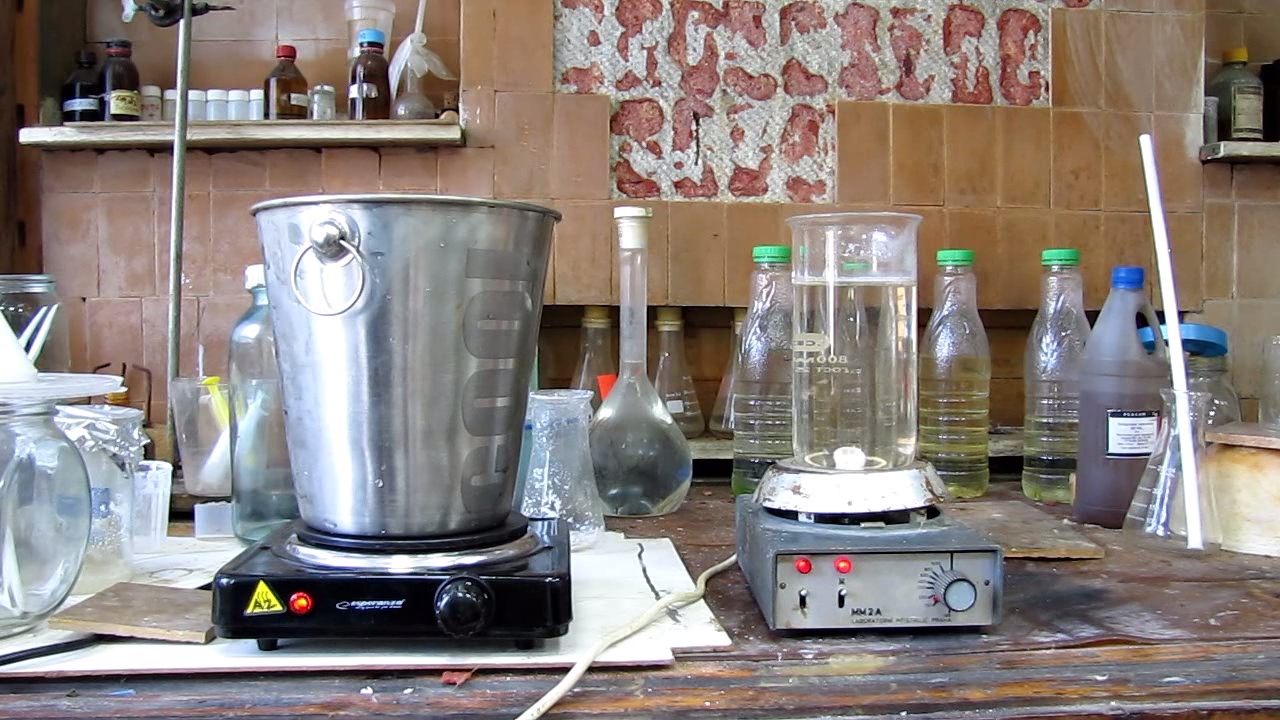
|
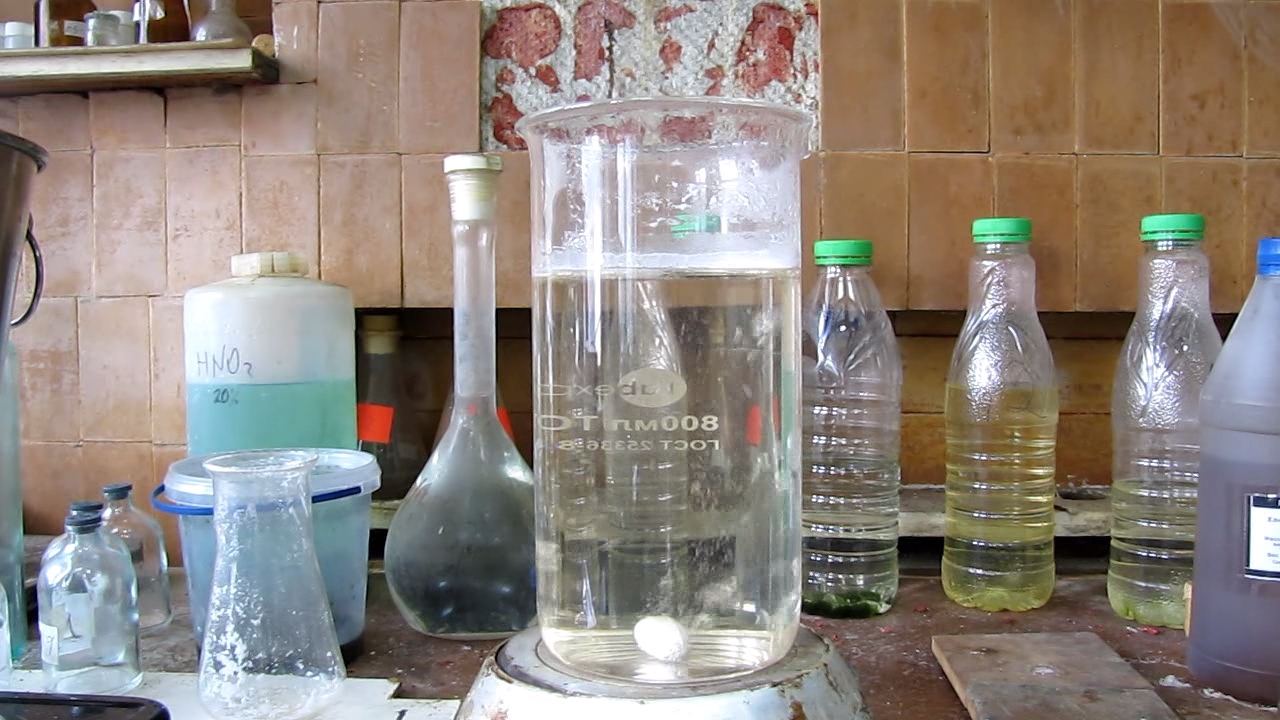
|
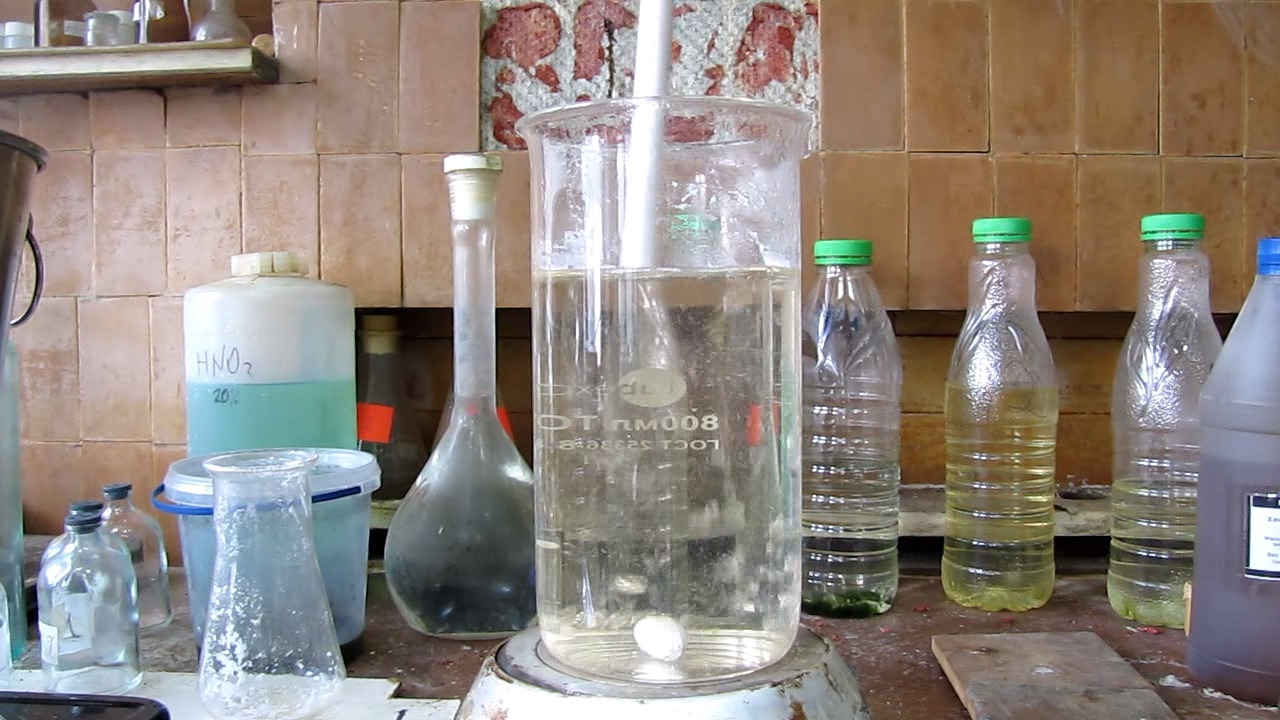
|
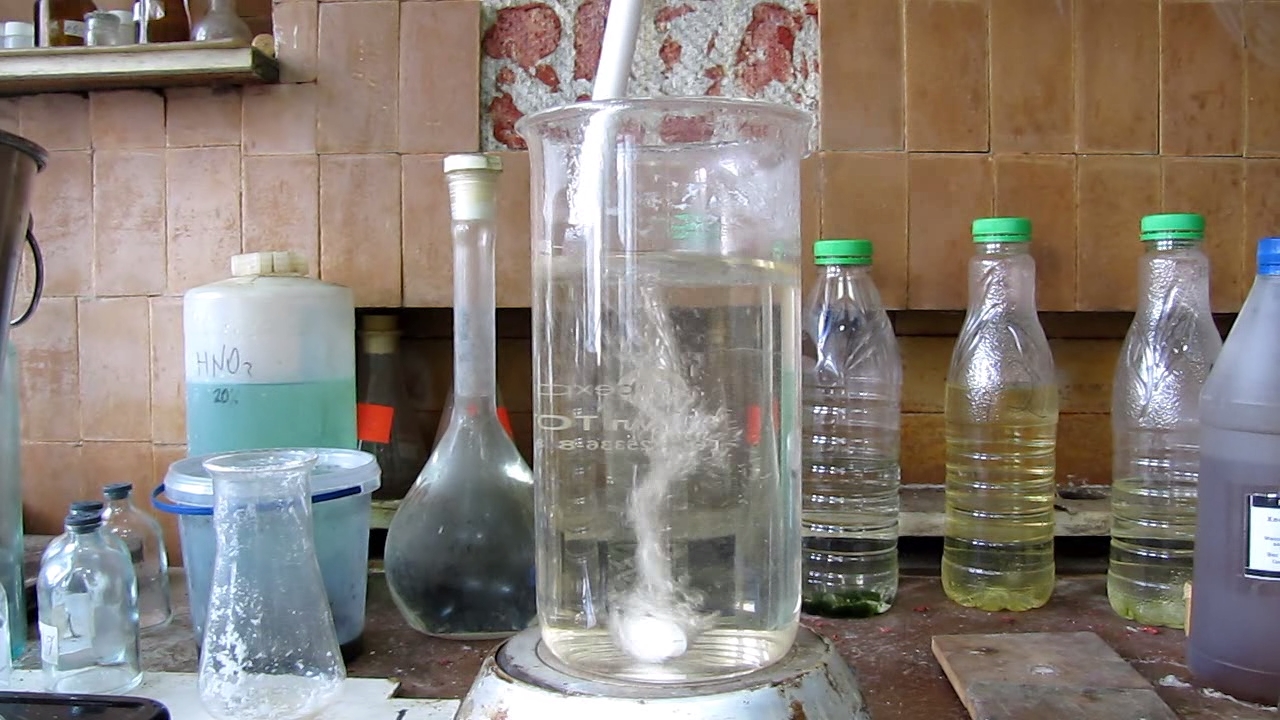
|
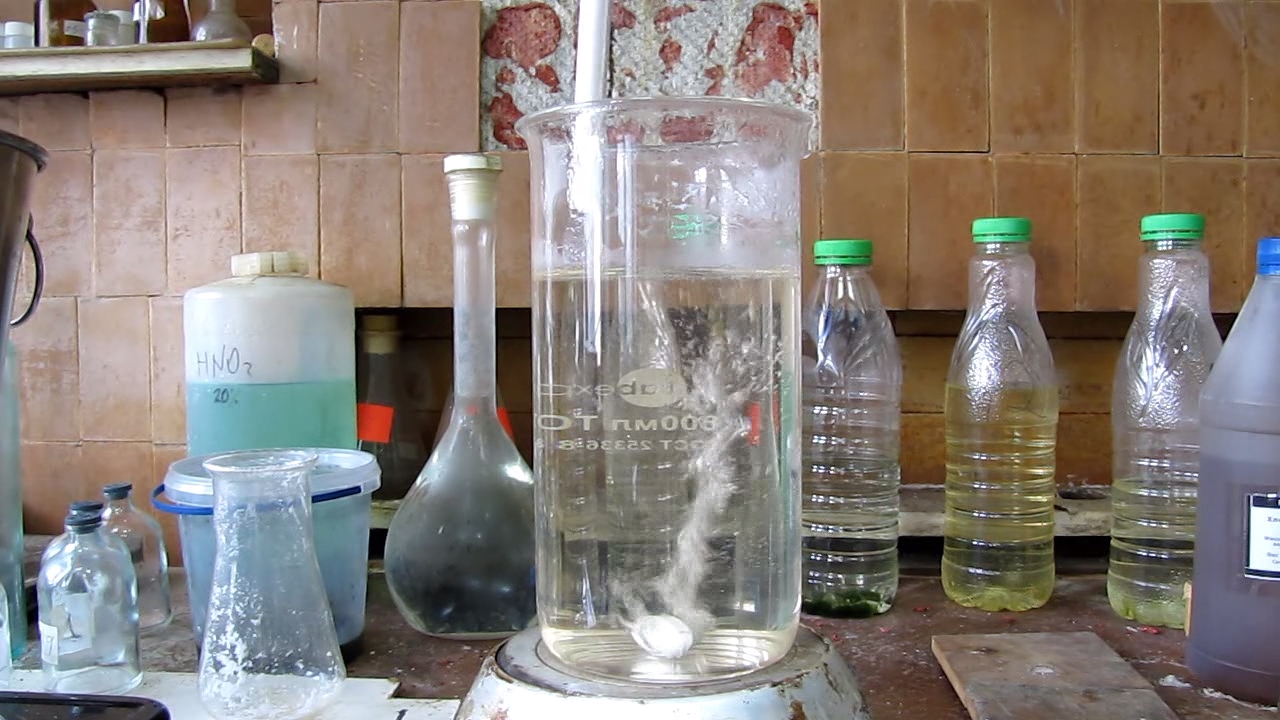
|
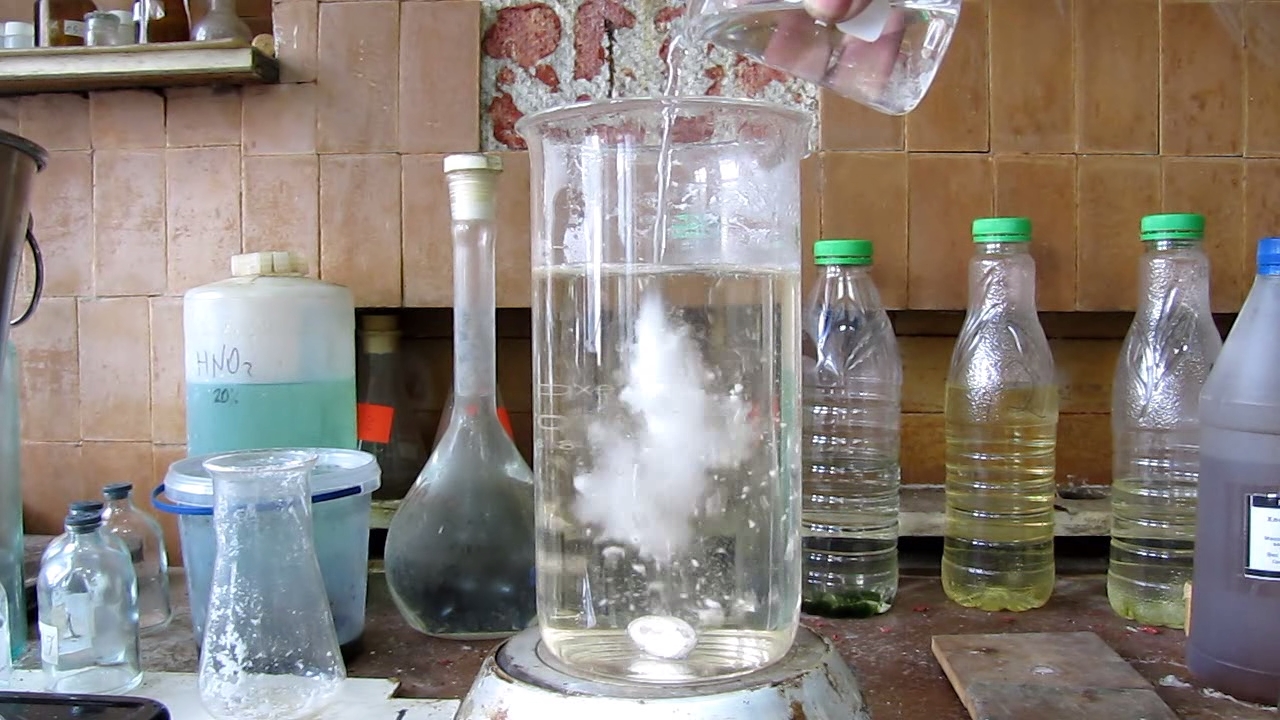
|
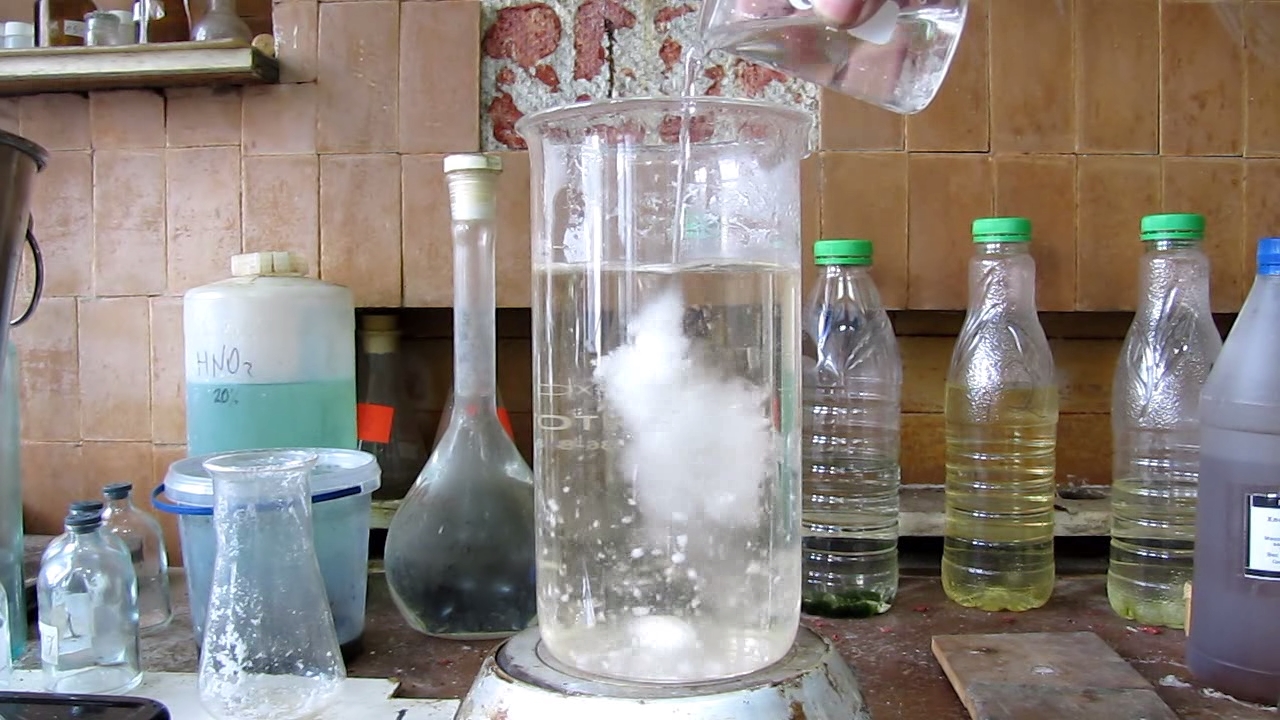
|
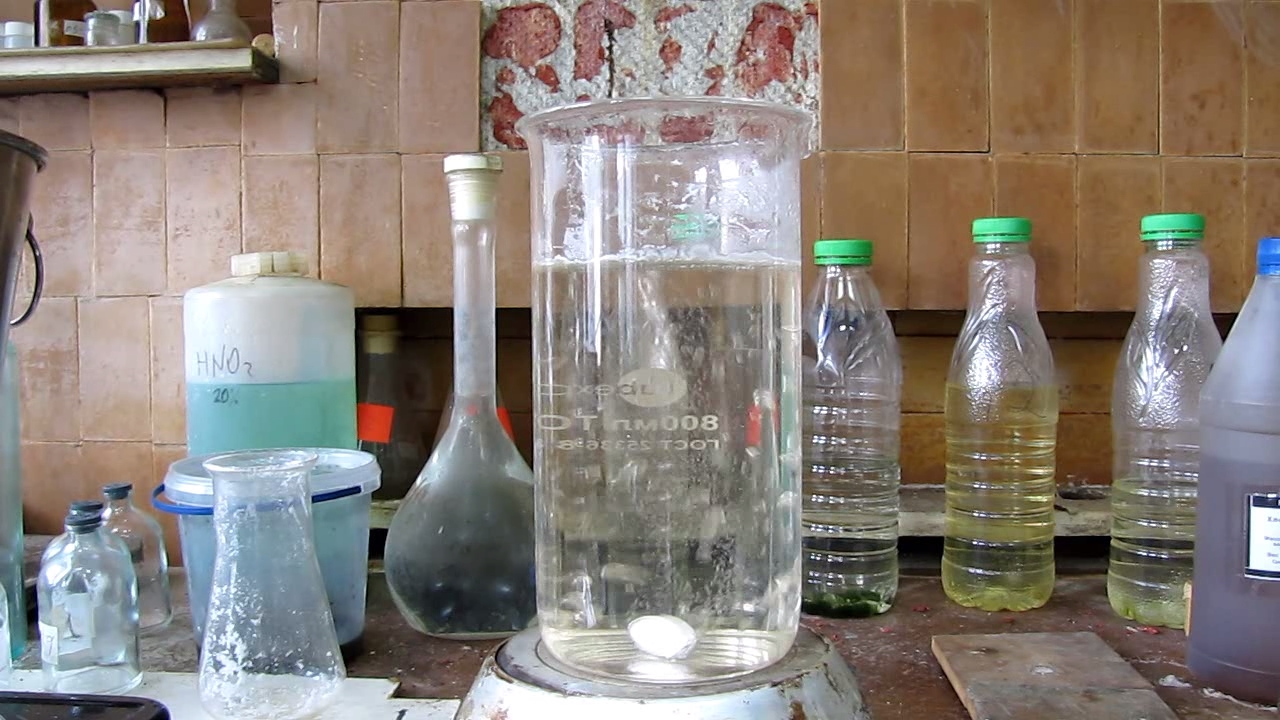
|
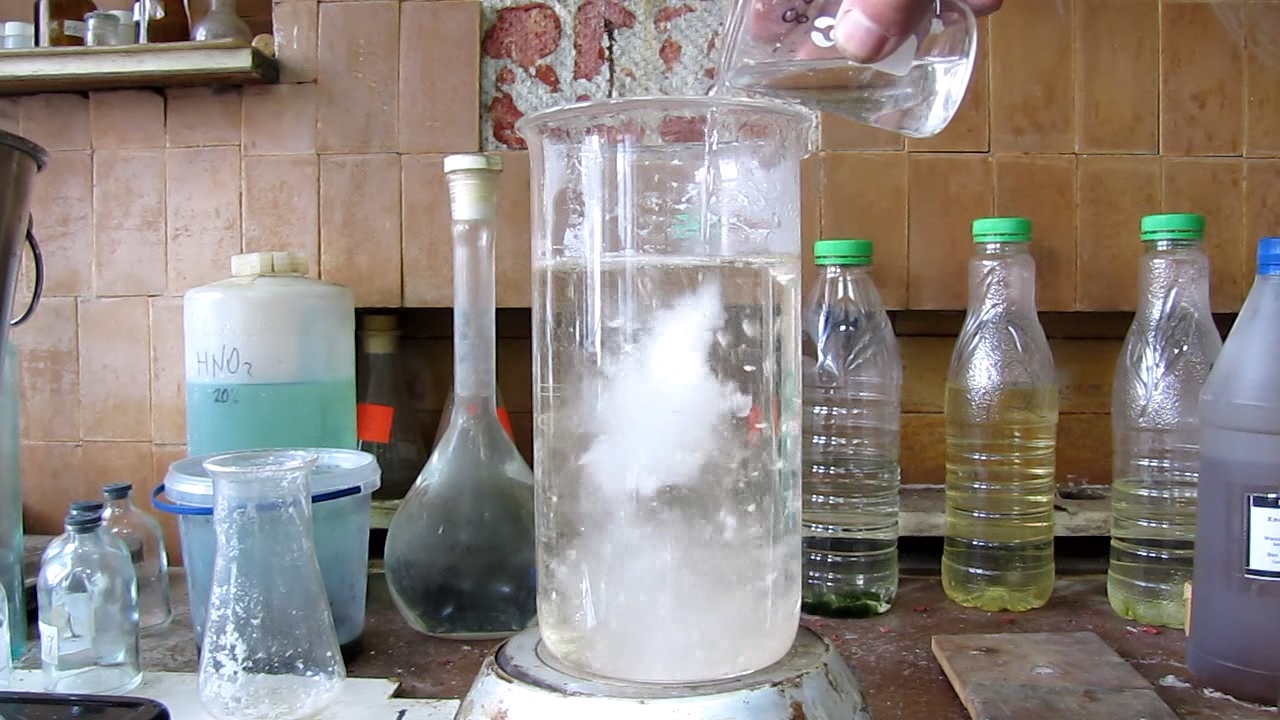
|
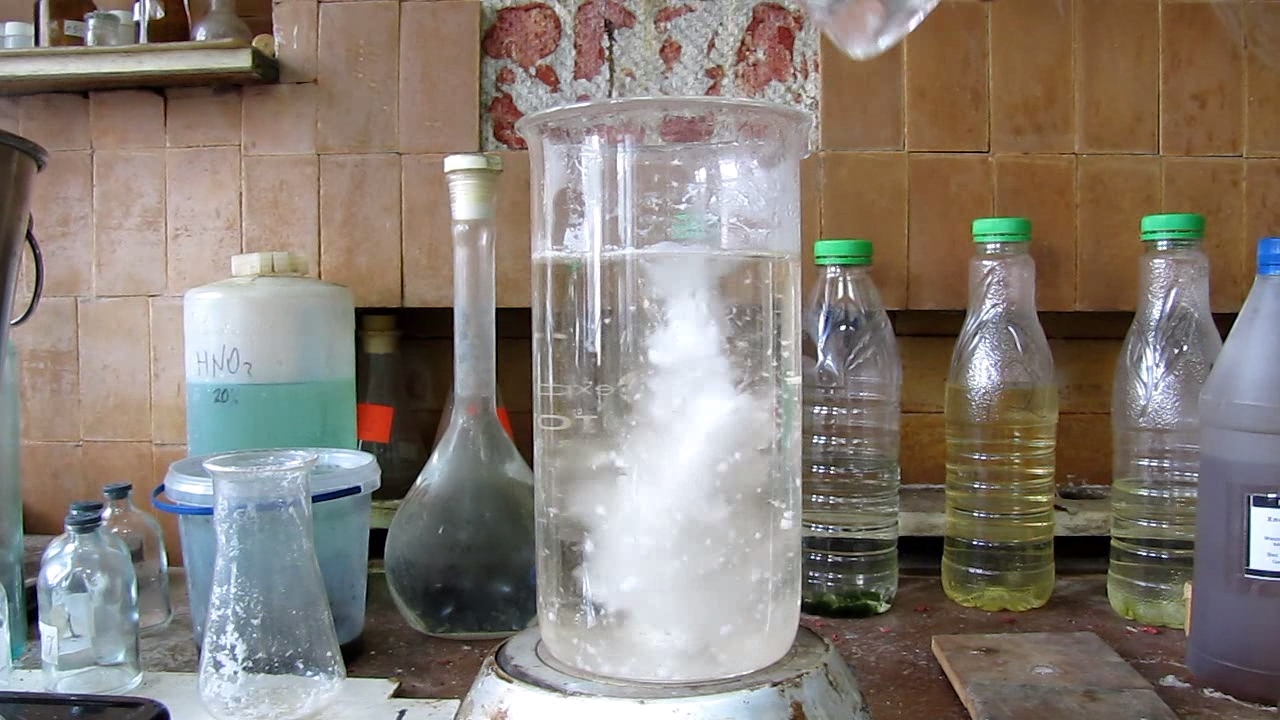
|
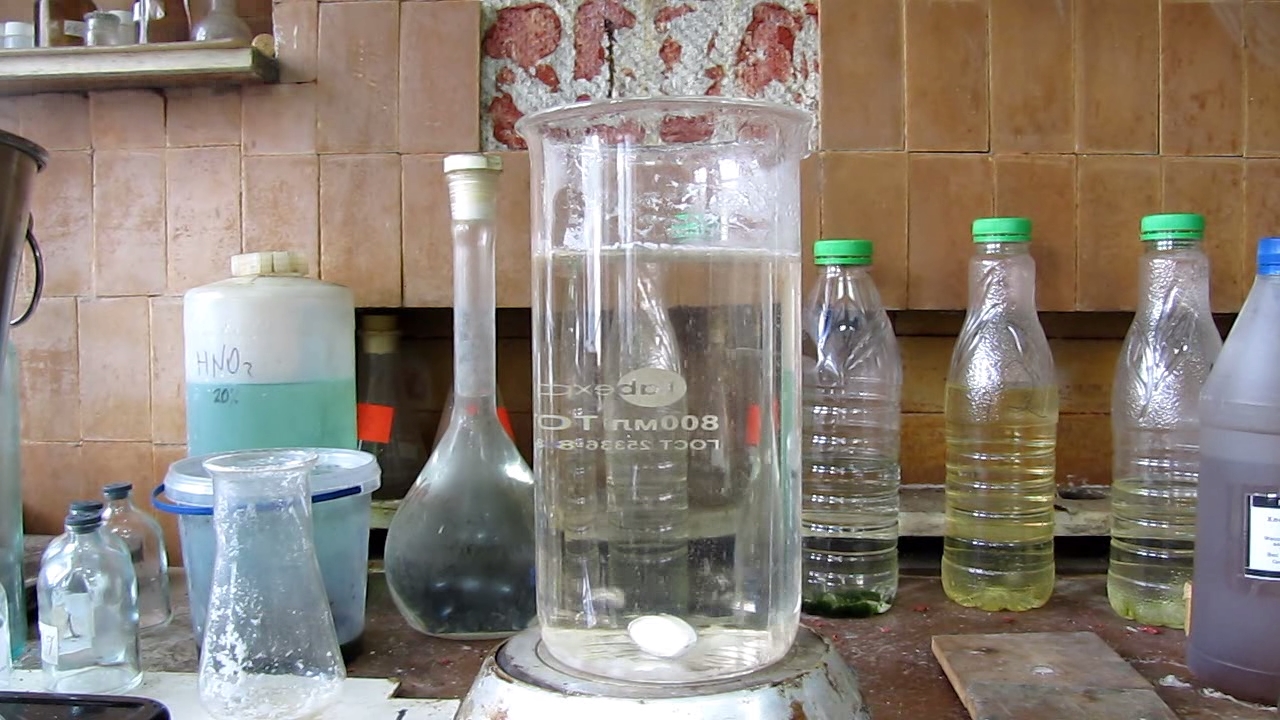
|
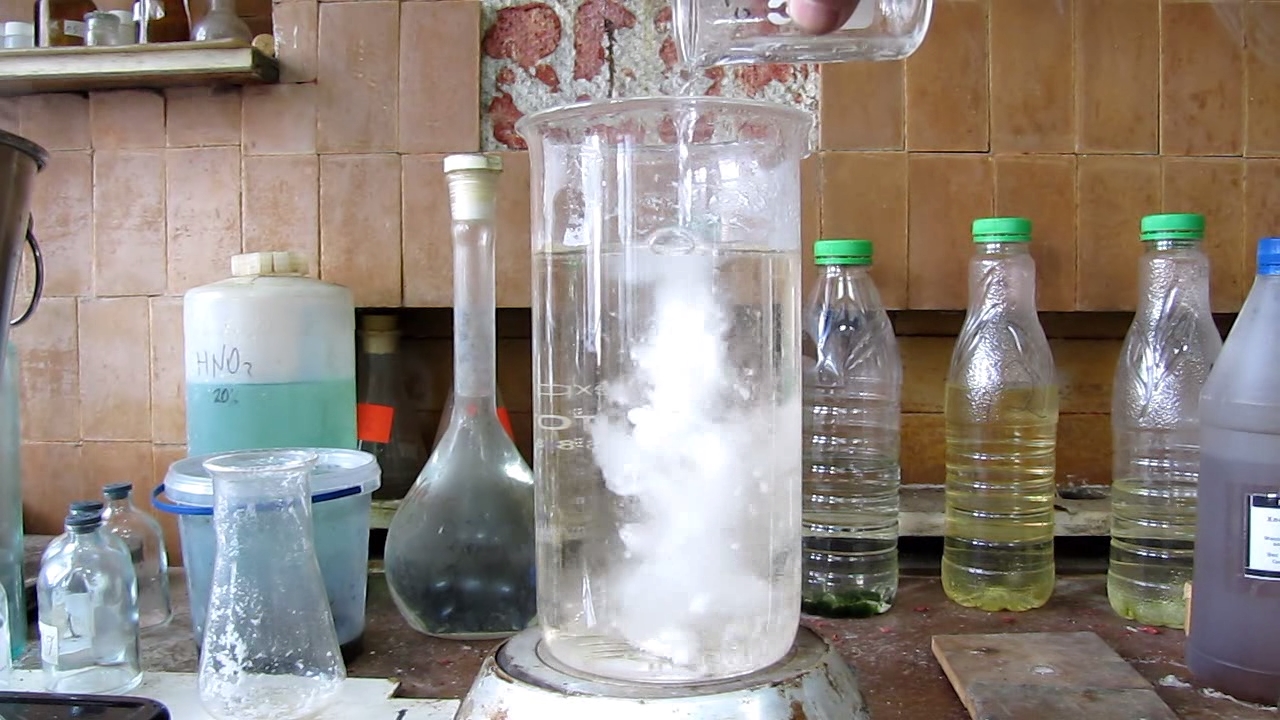
|
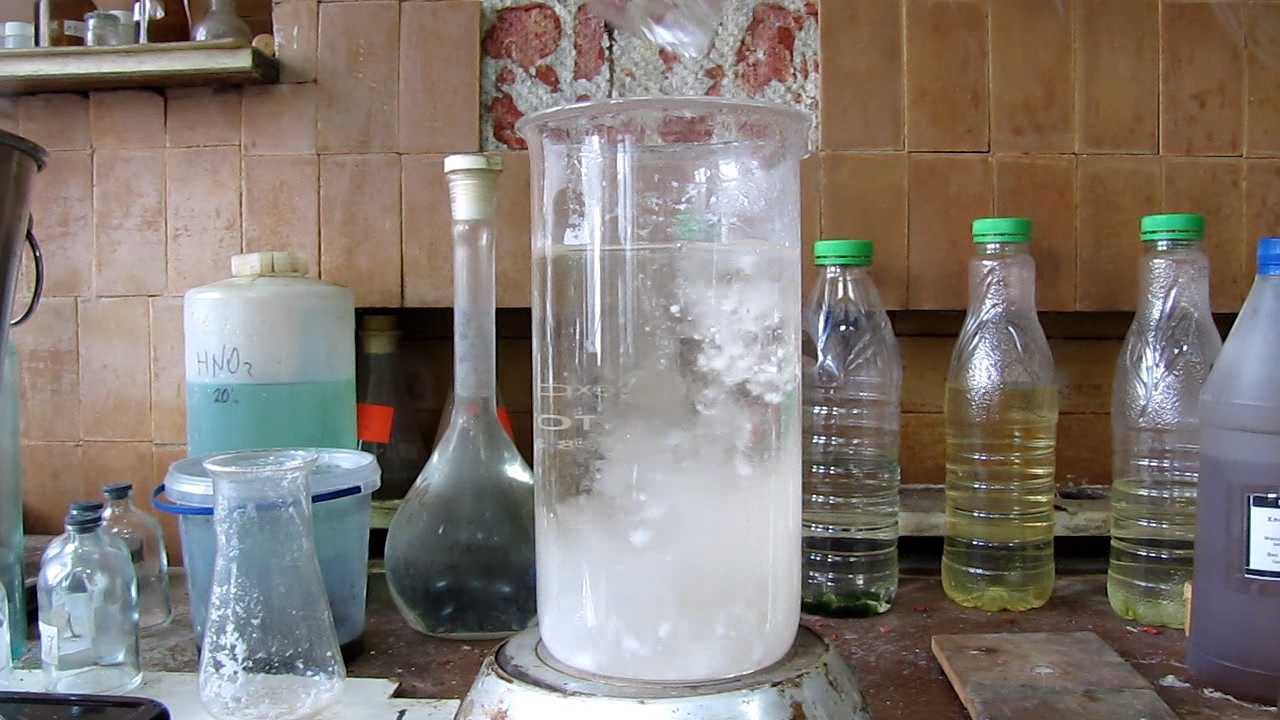
|
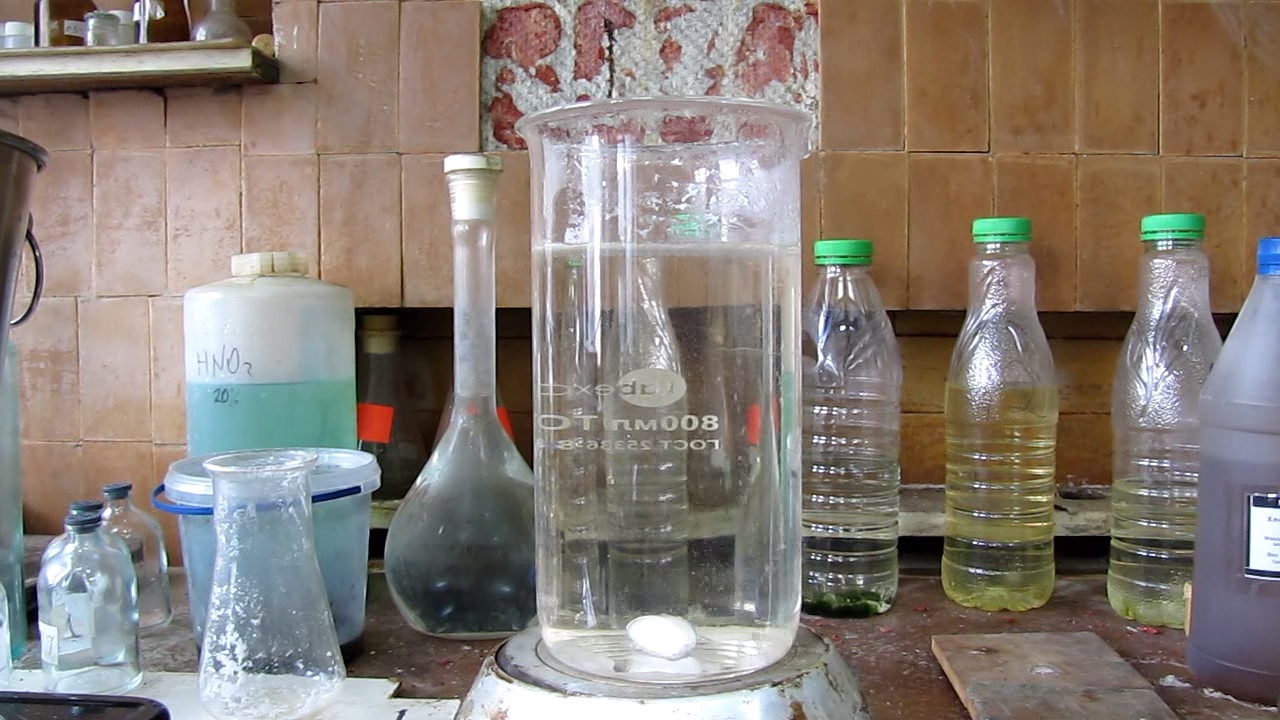
|
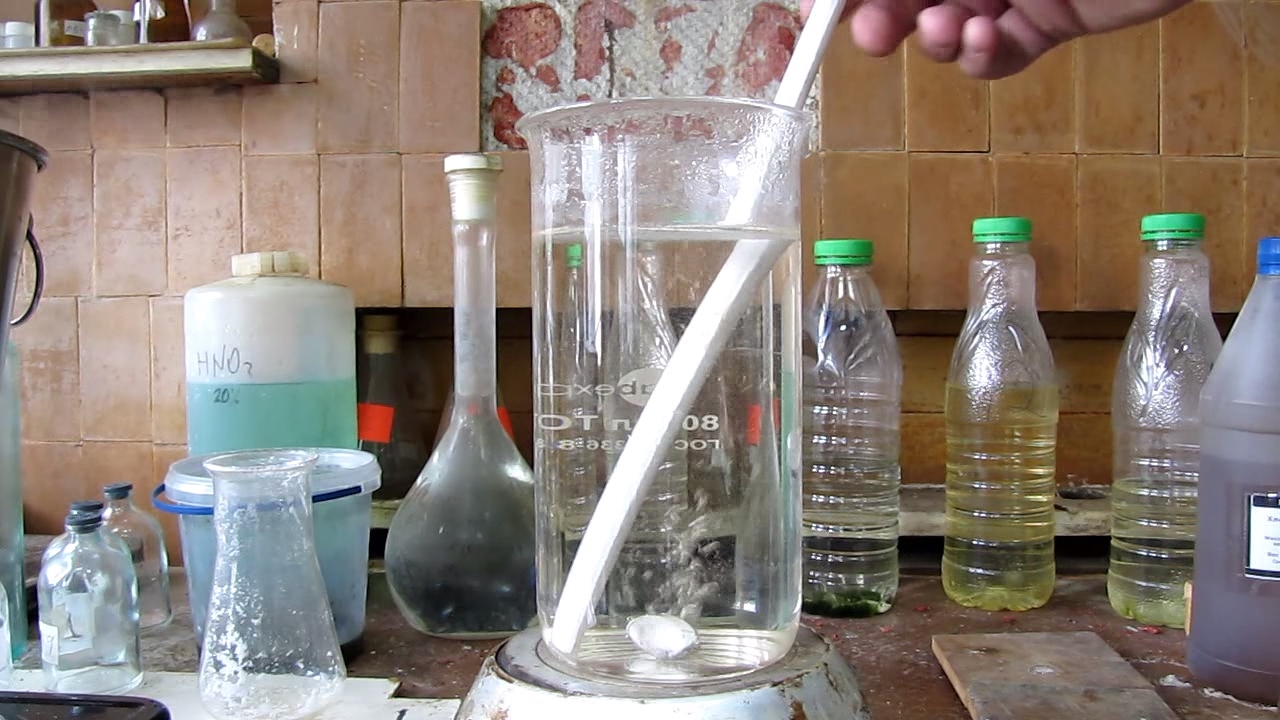
|
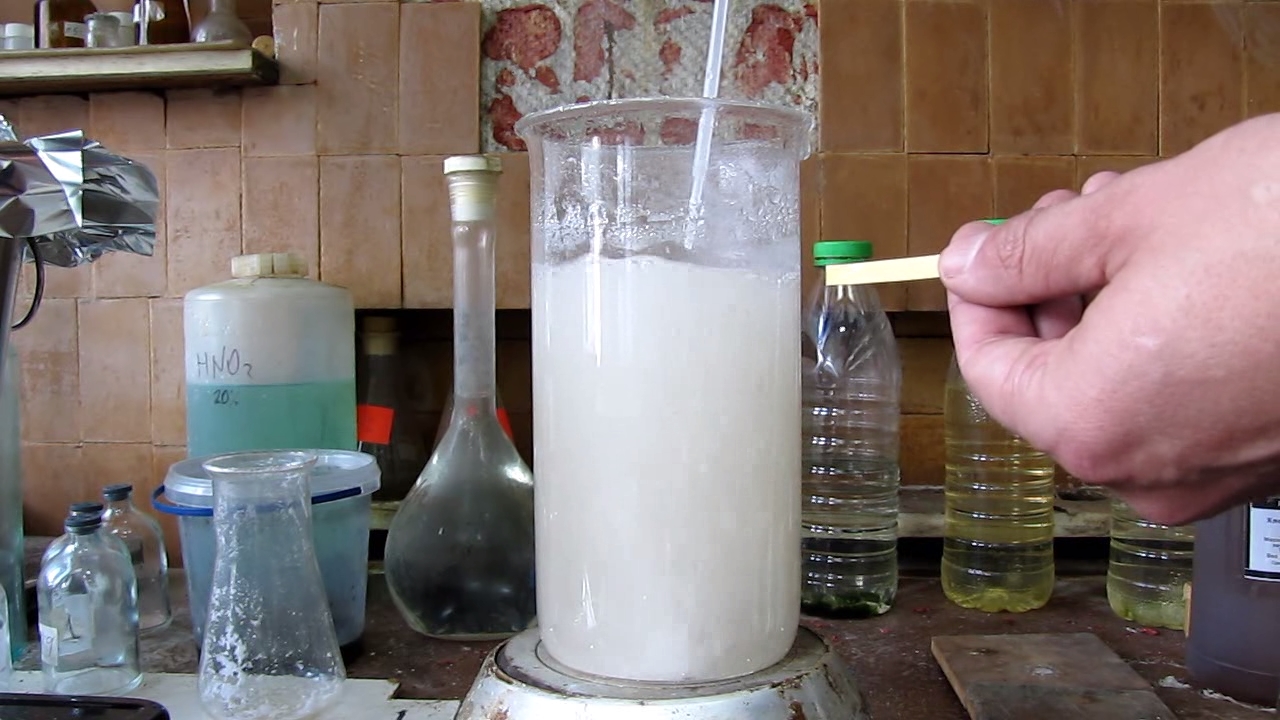
|
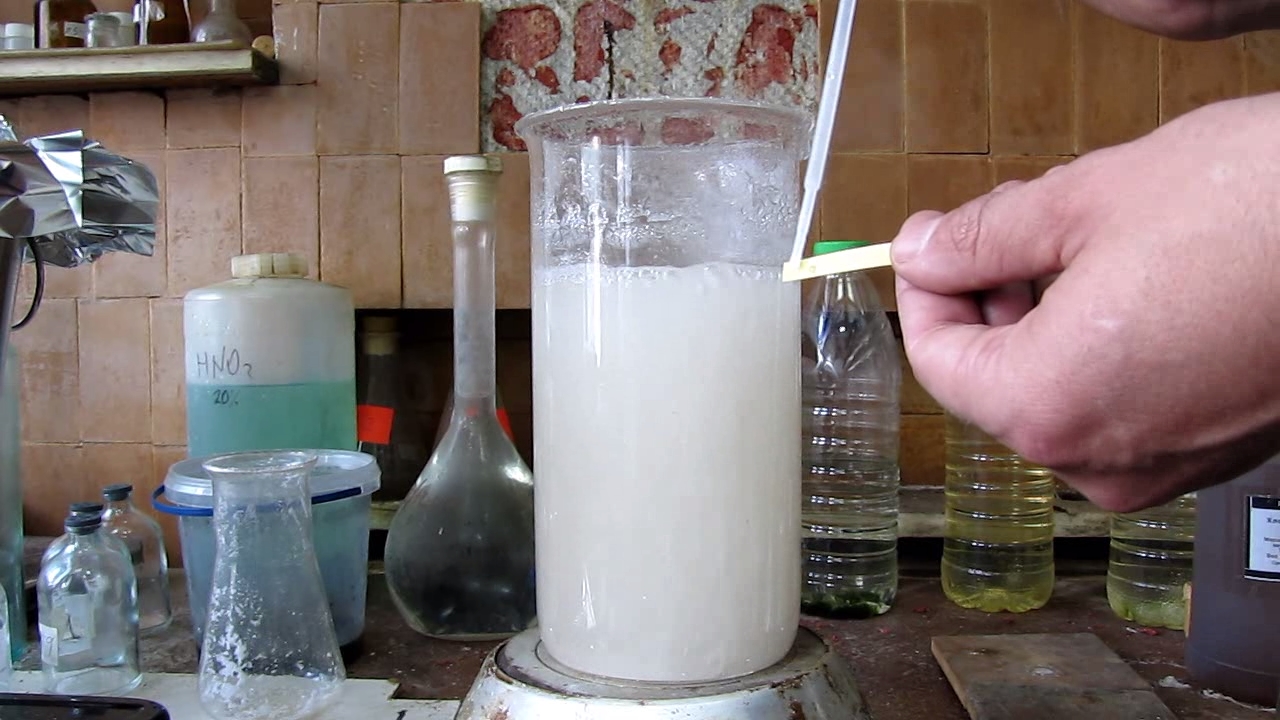
|
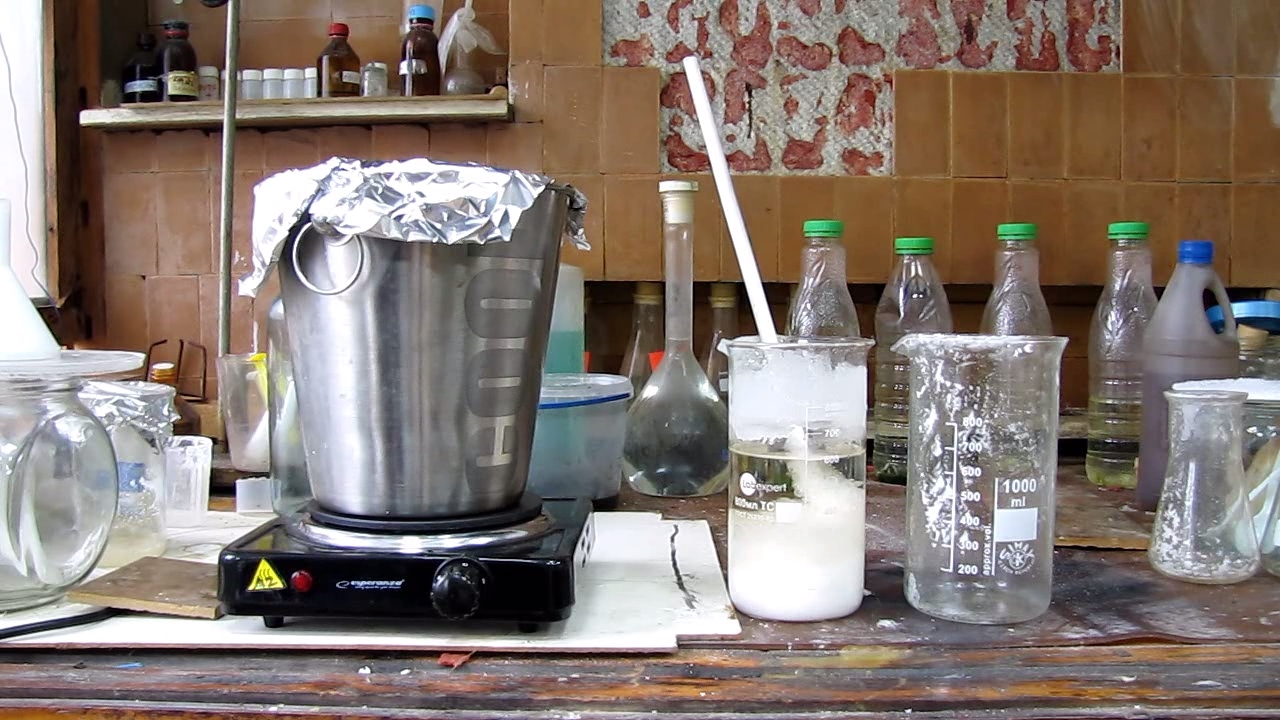
|
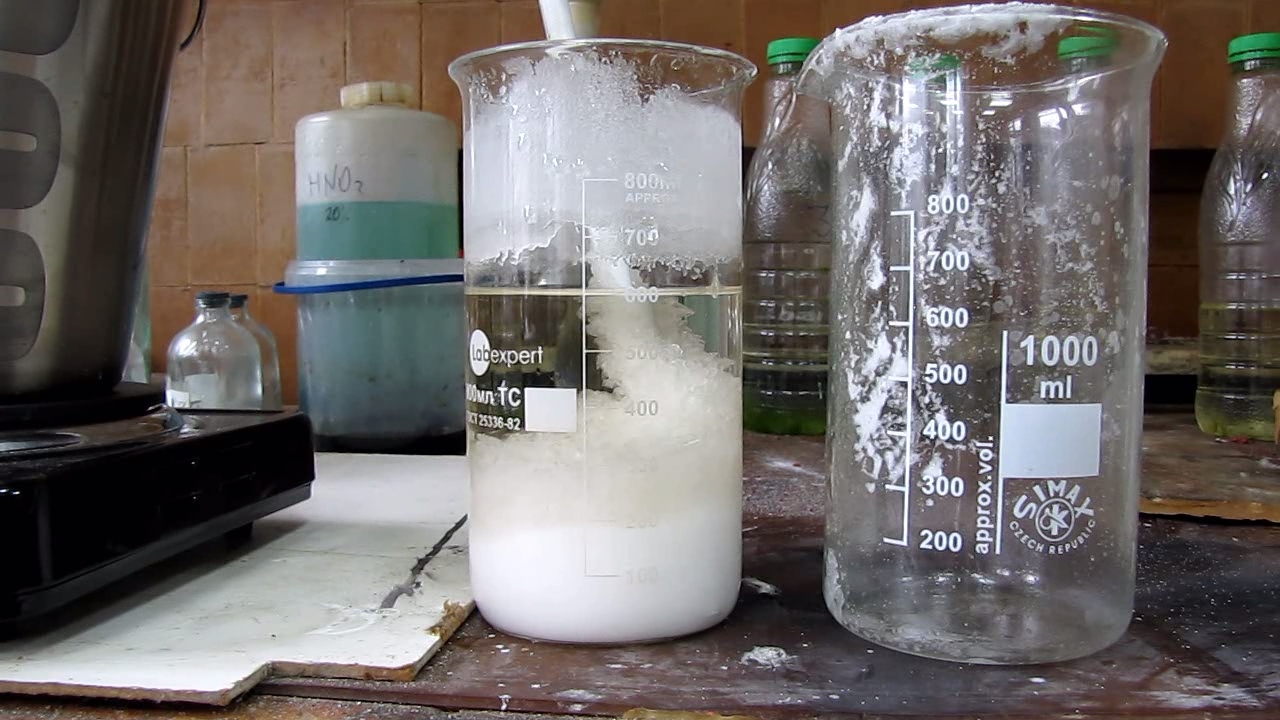
|
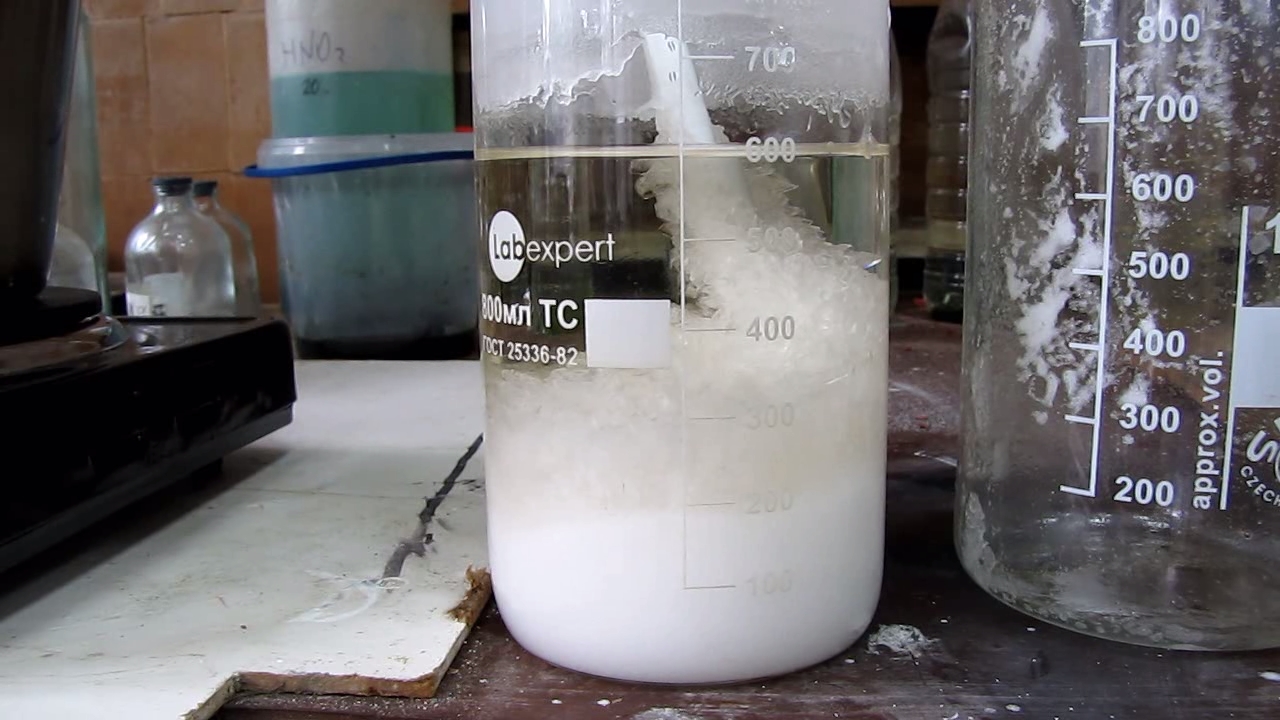
|
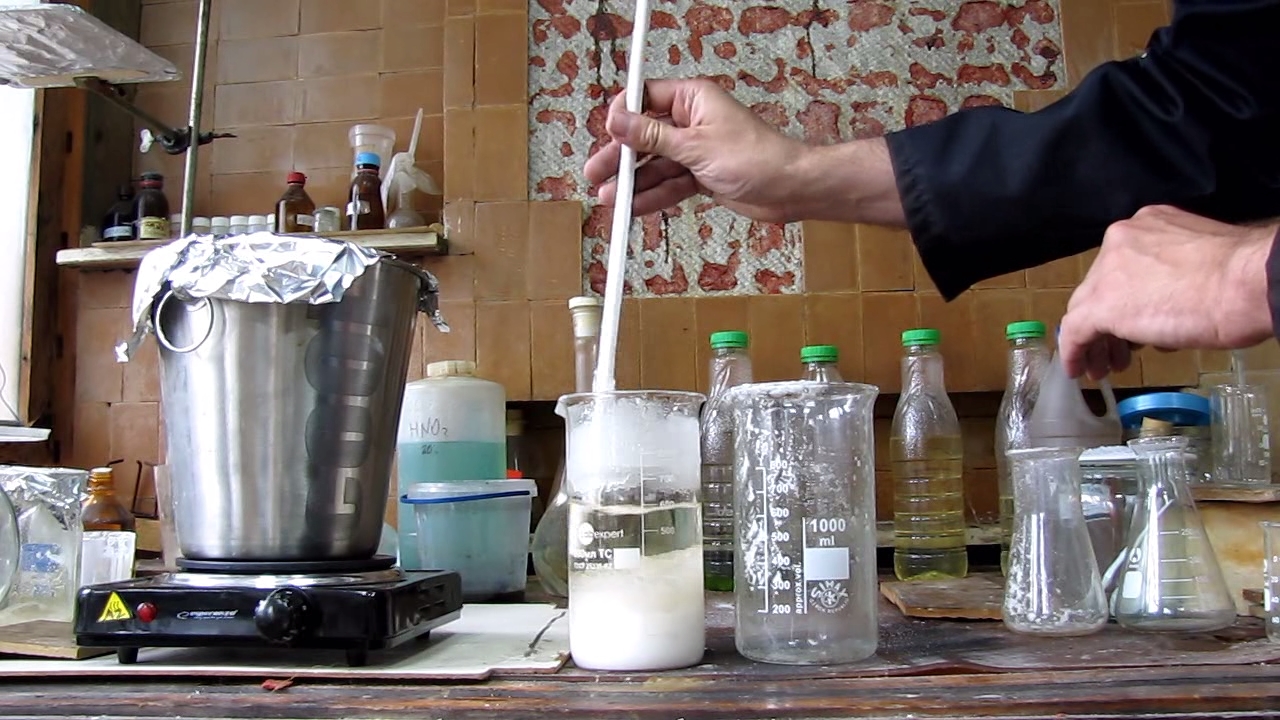
|
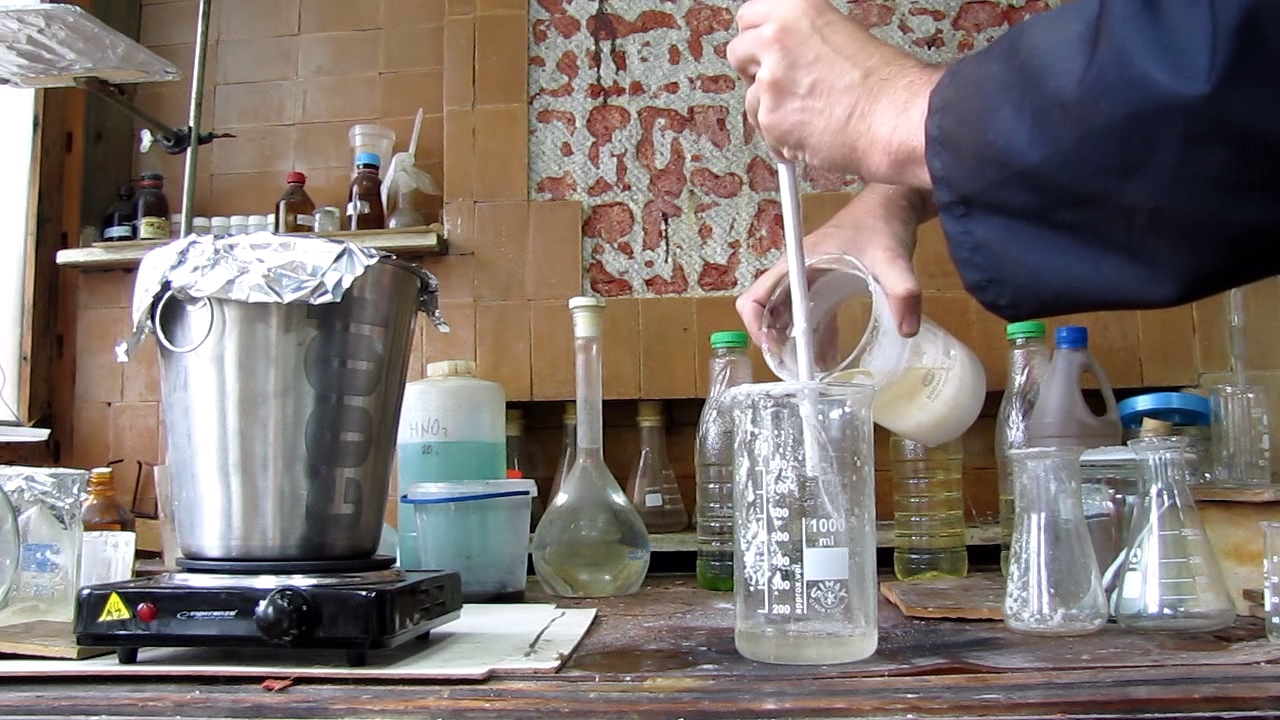
|
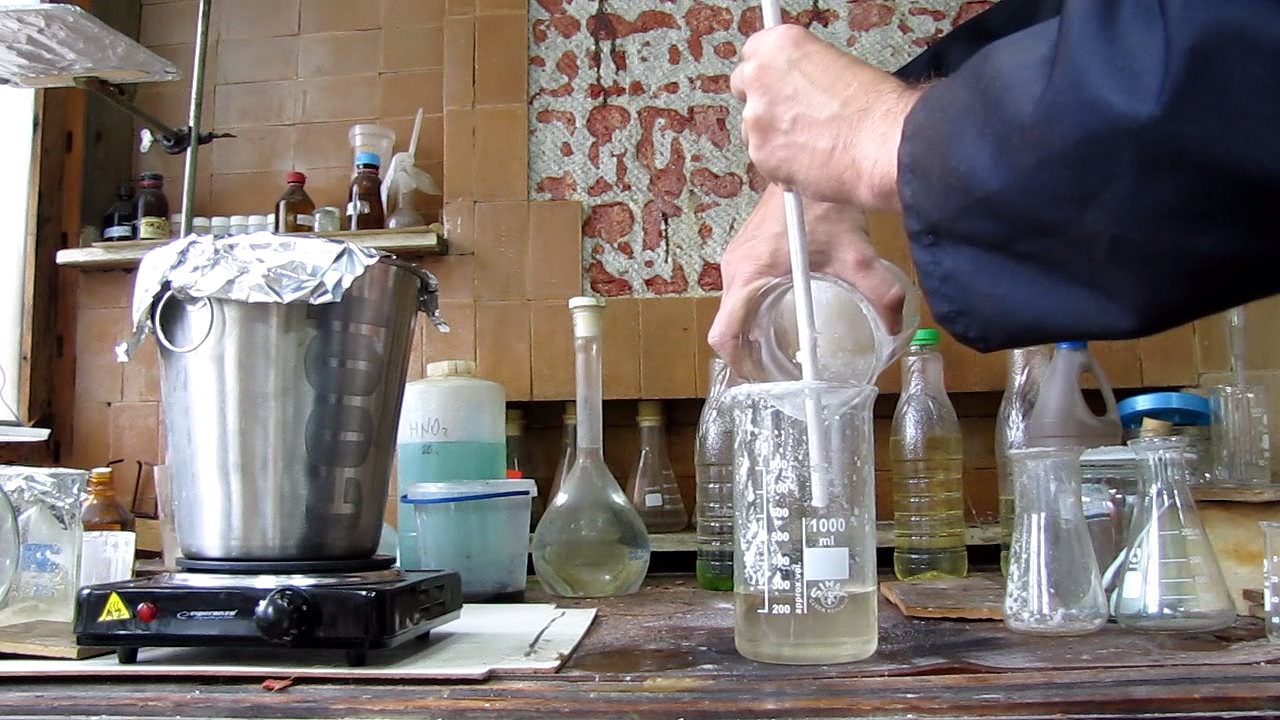
|
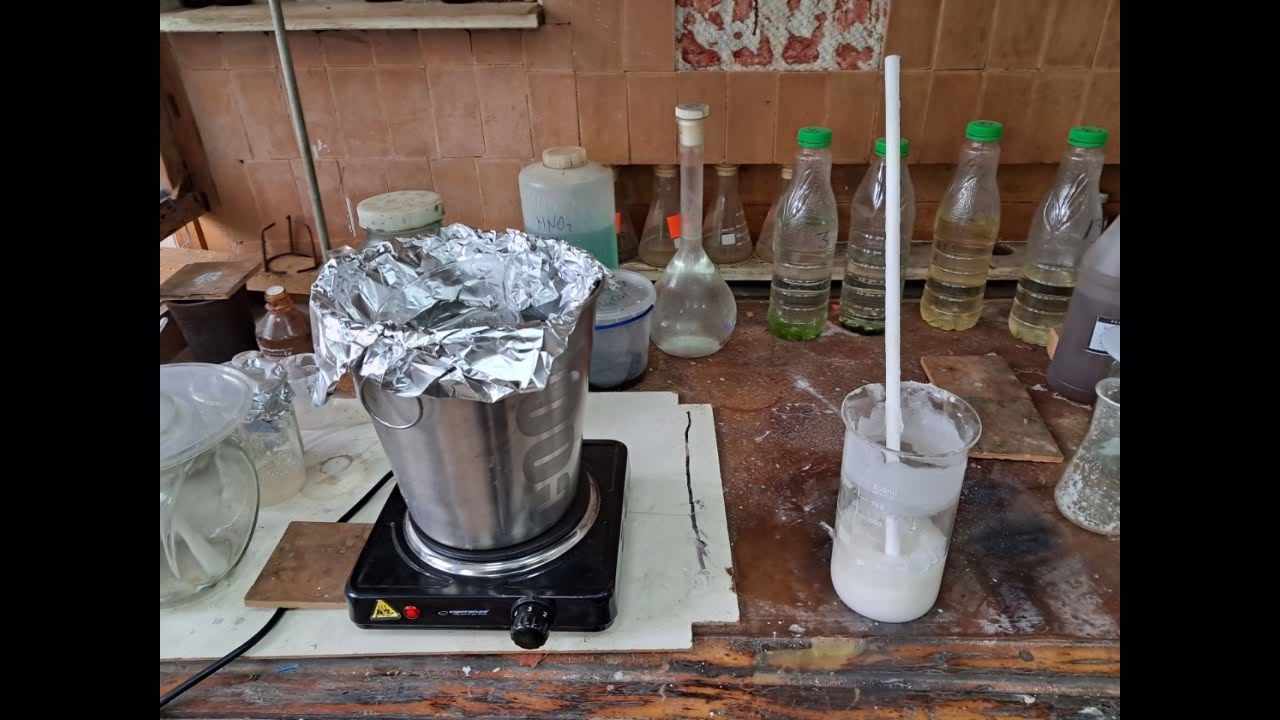
|
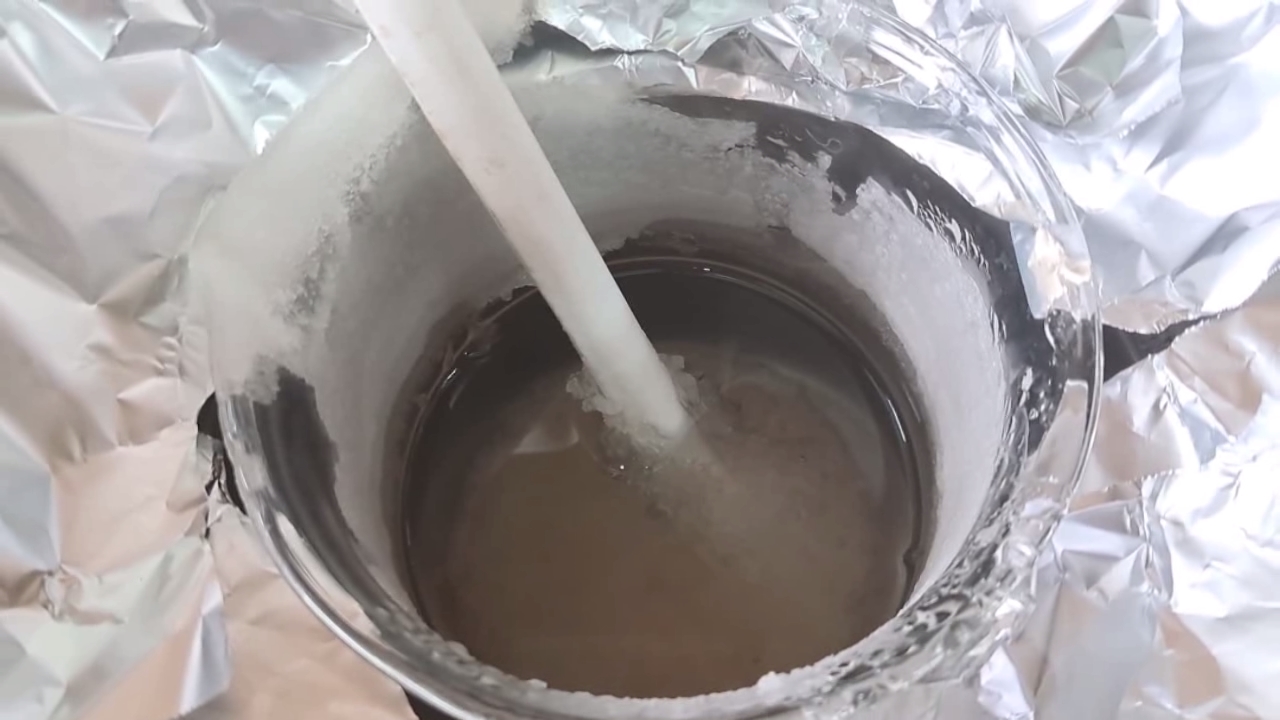
|
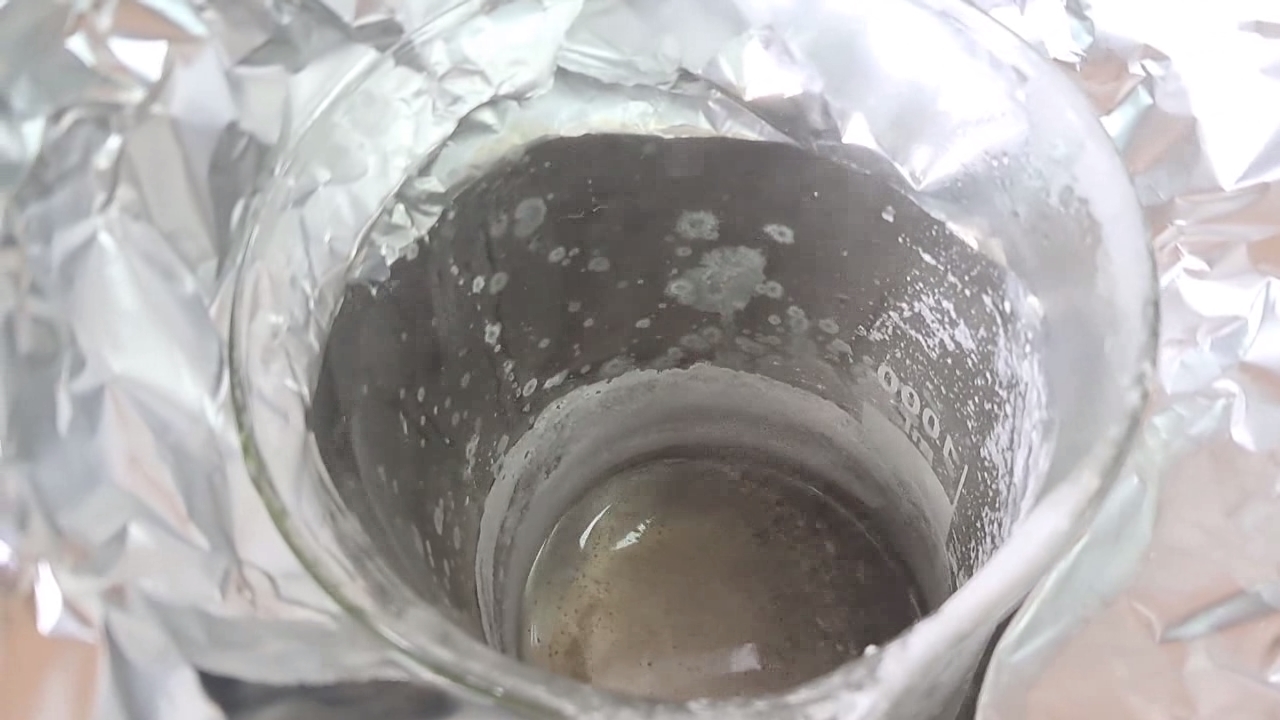
|
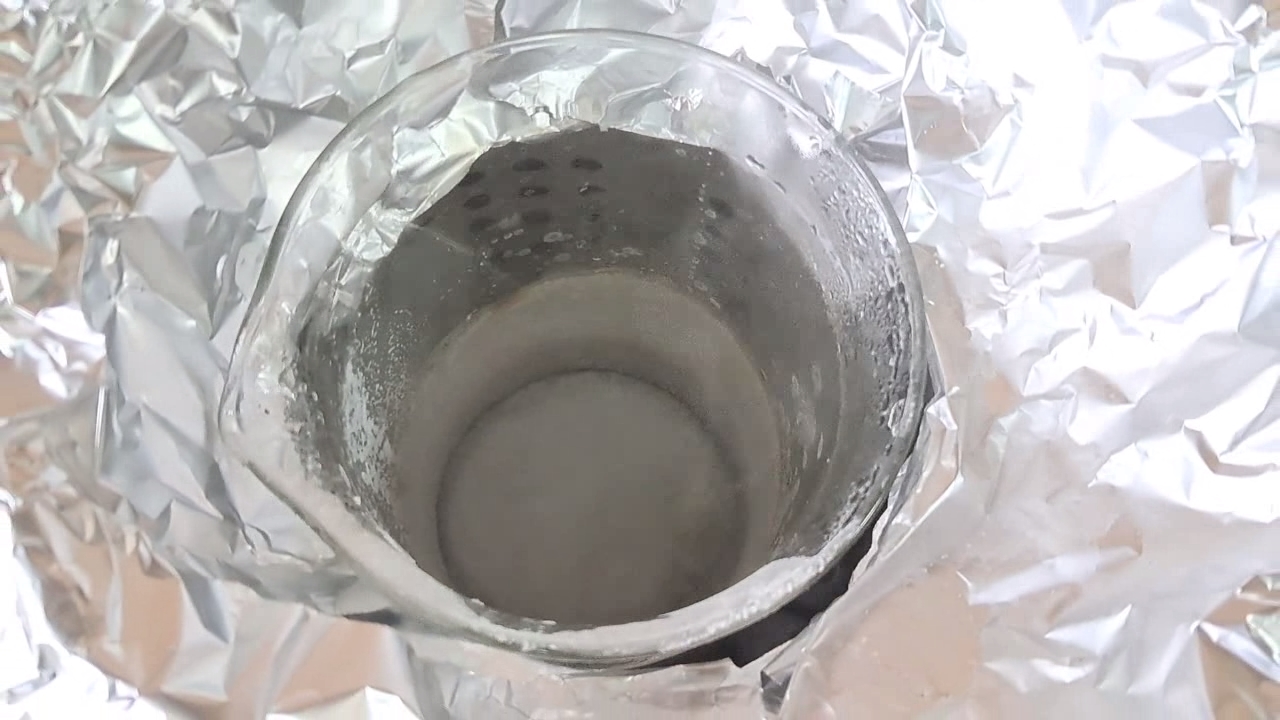
|
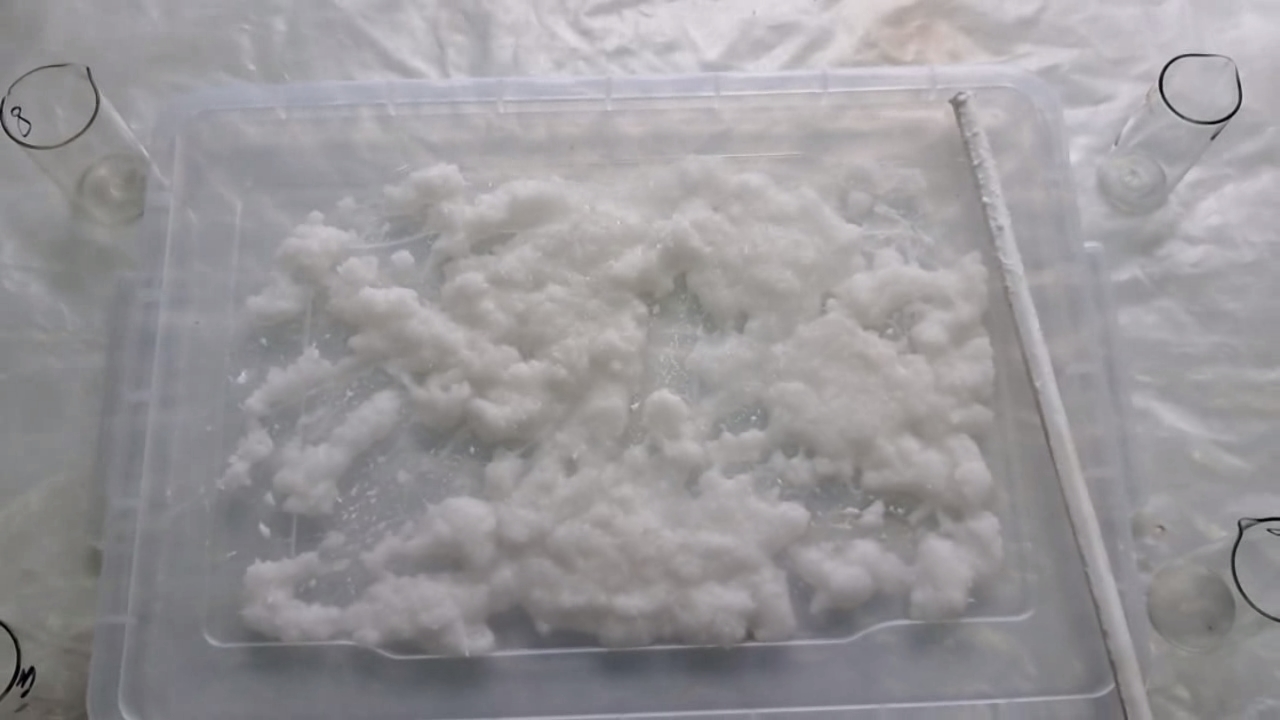
|
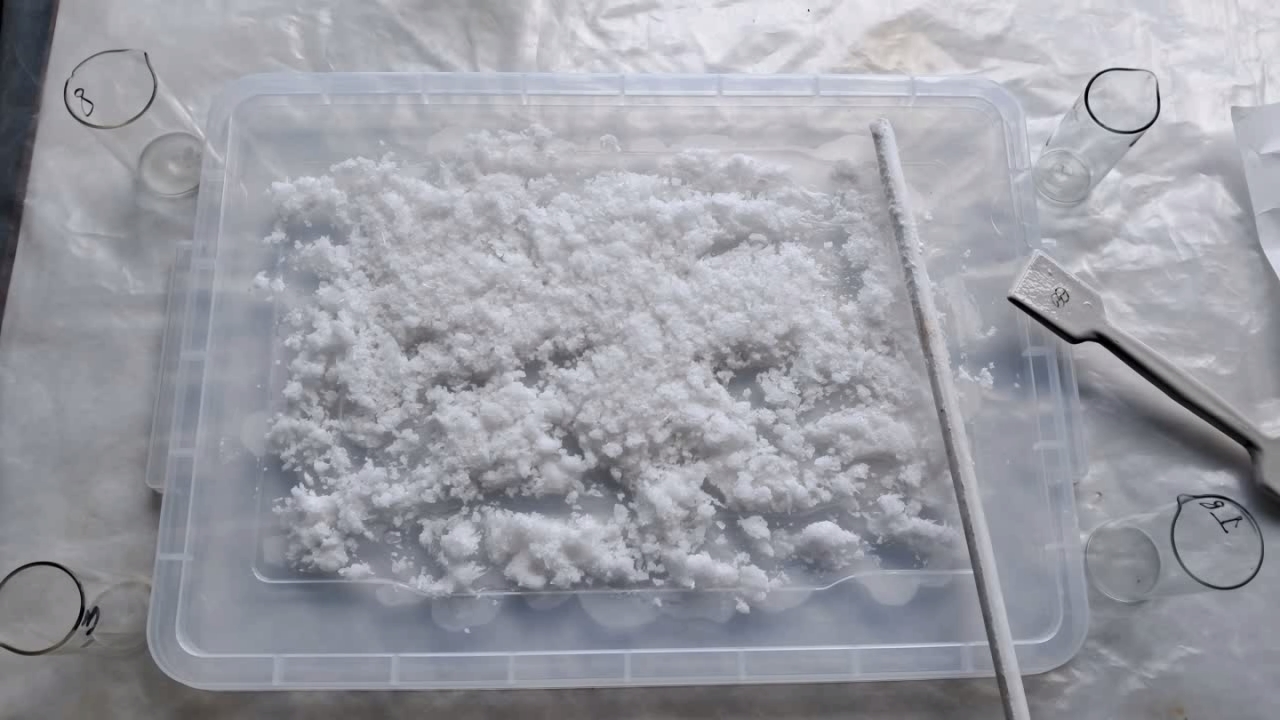
|
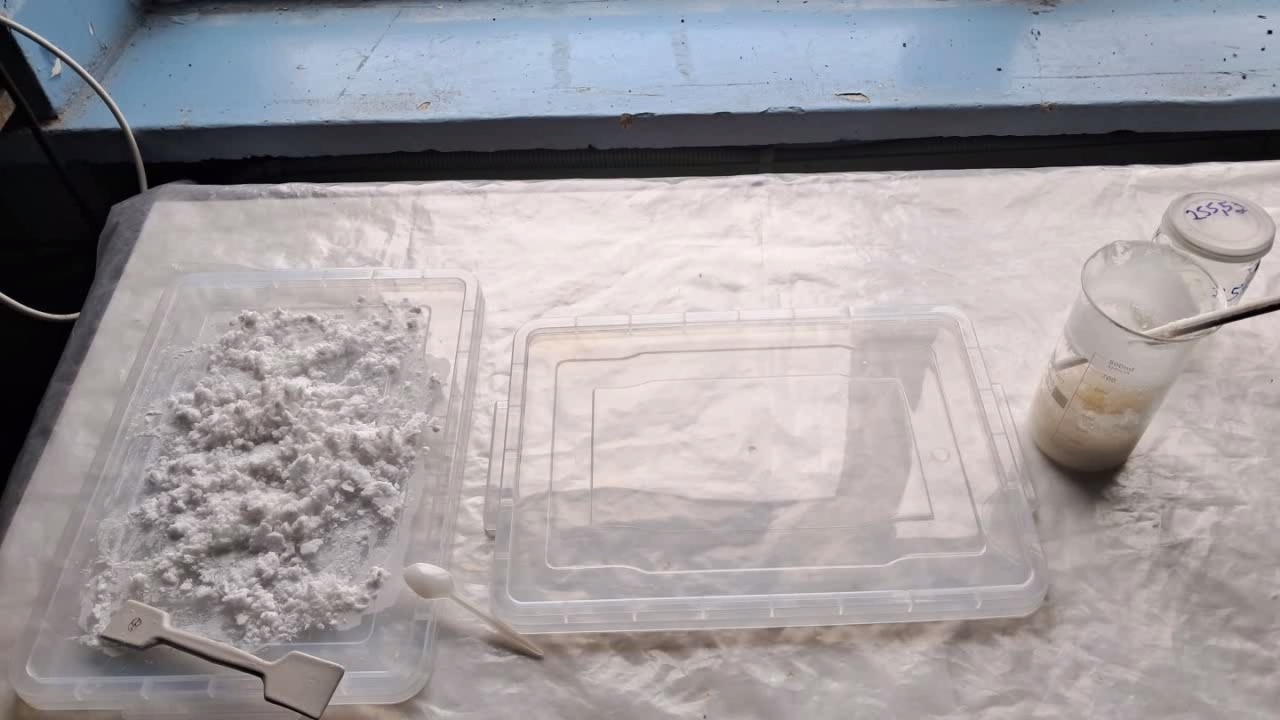
|
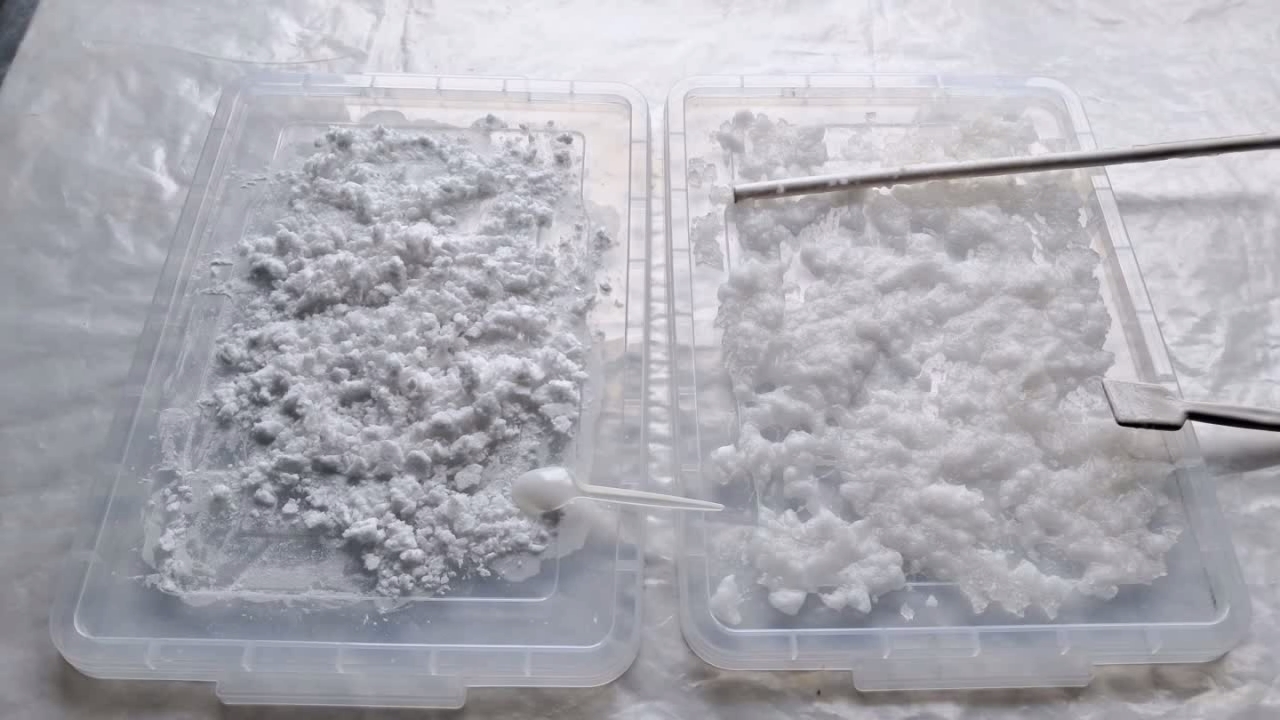
|

|